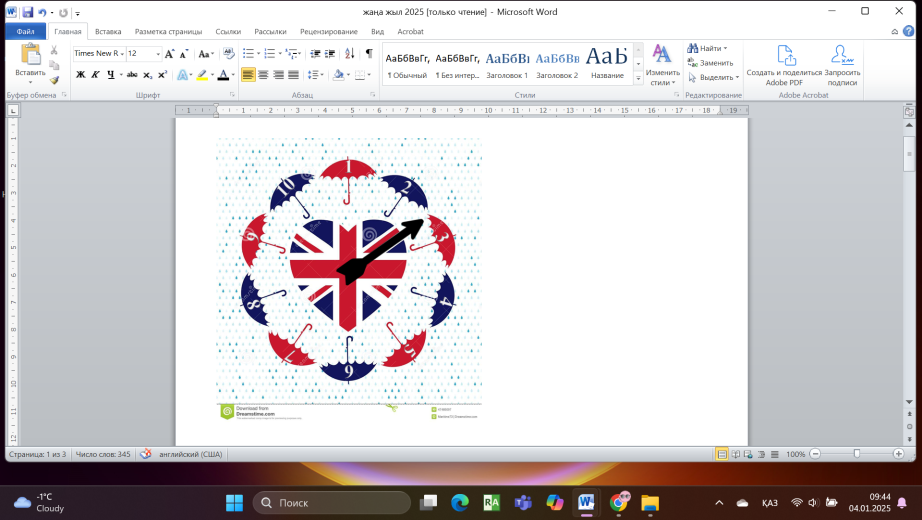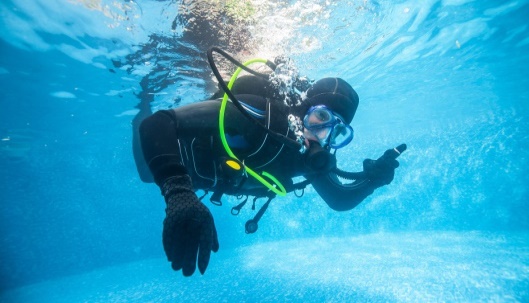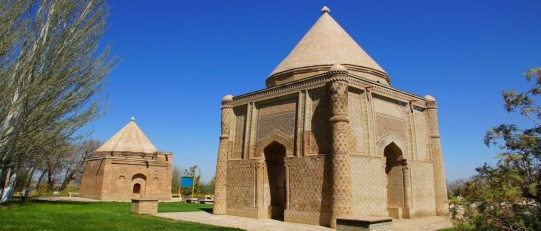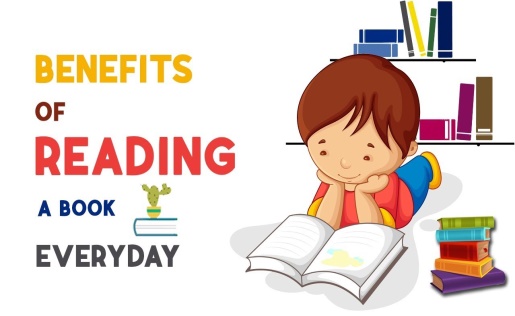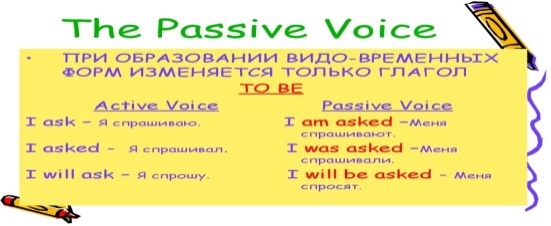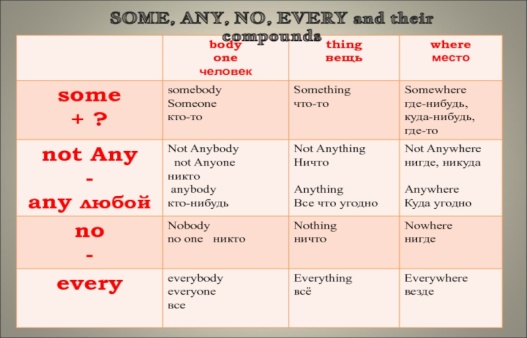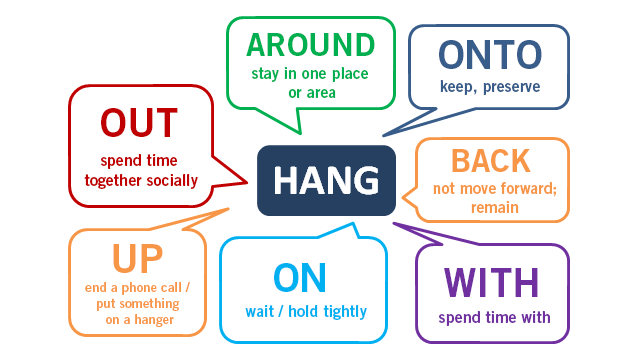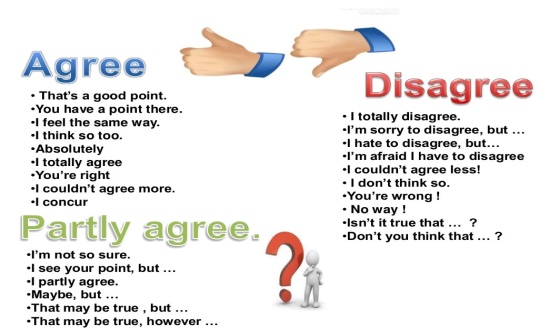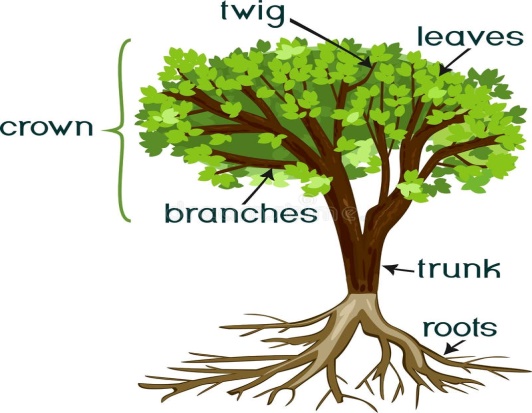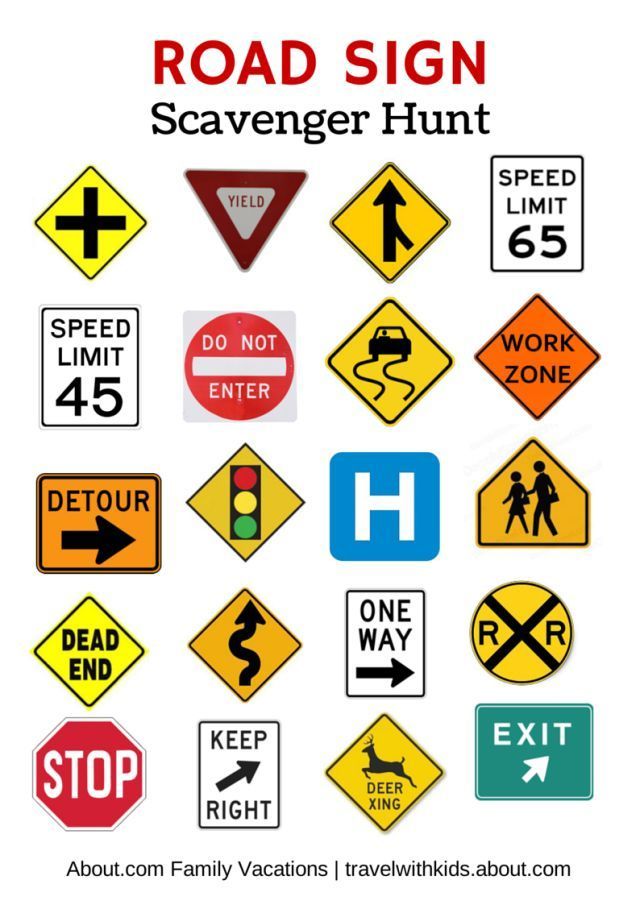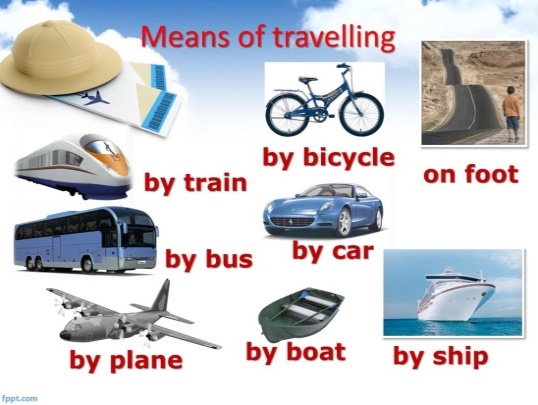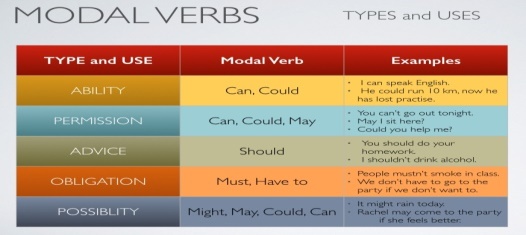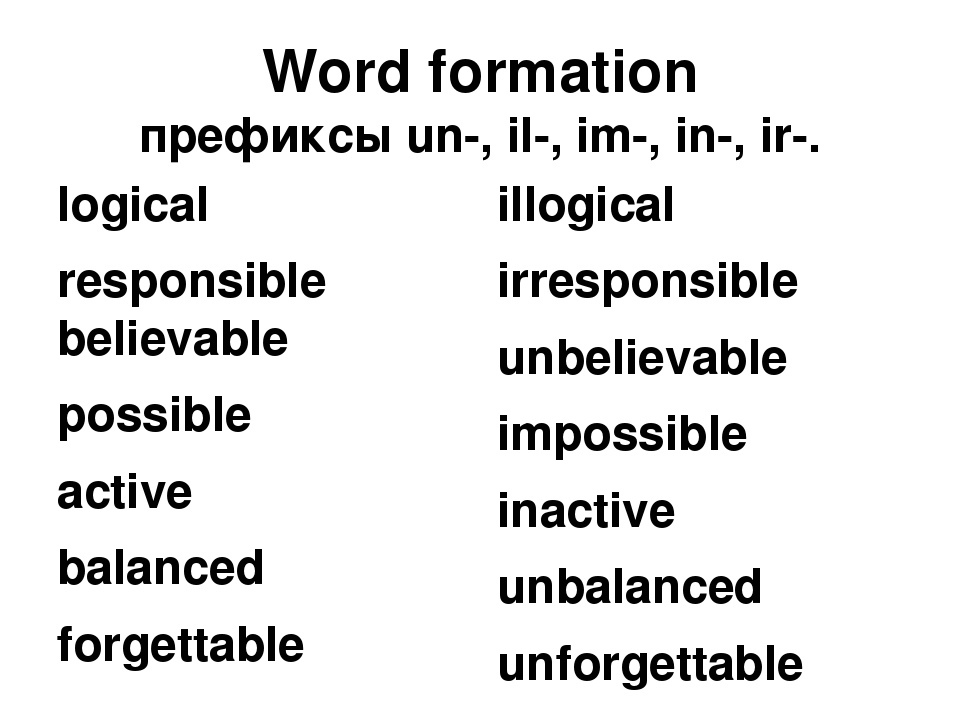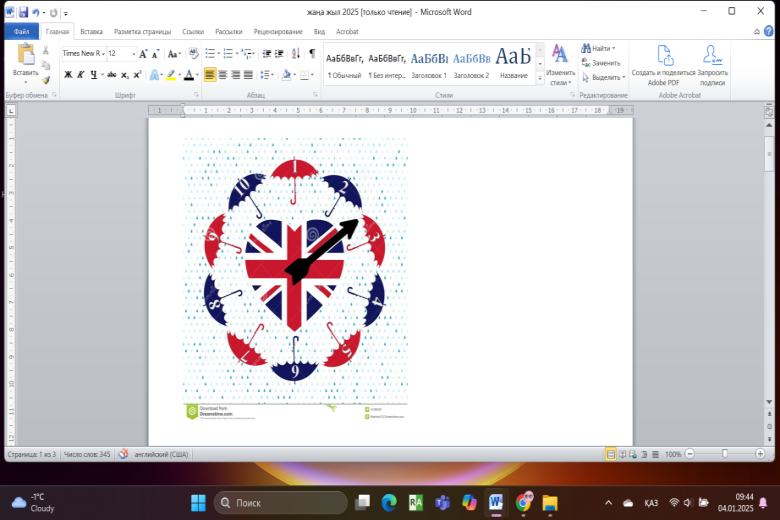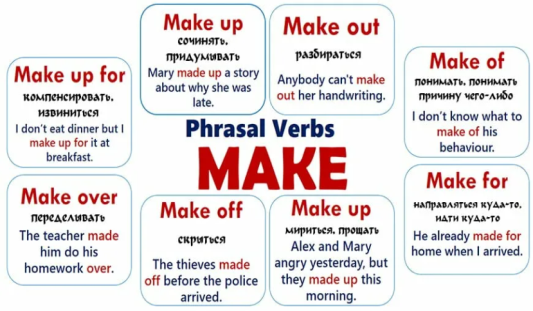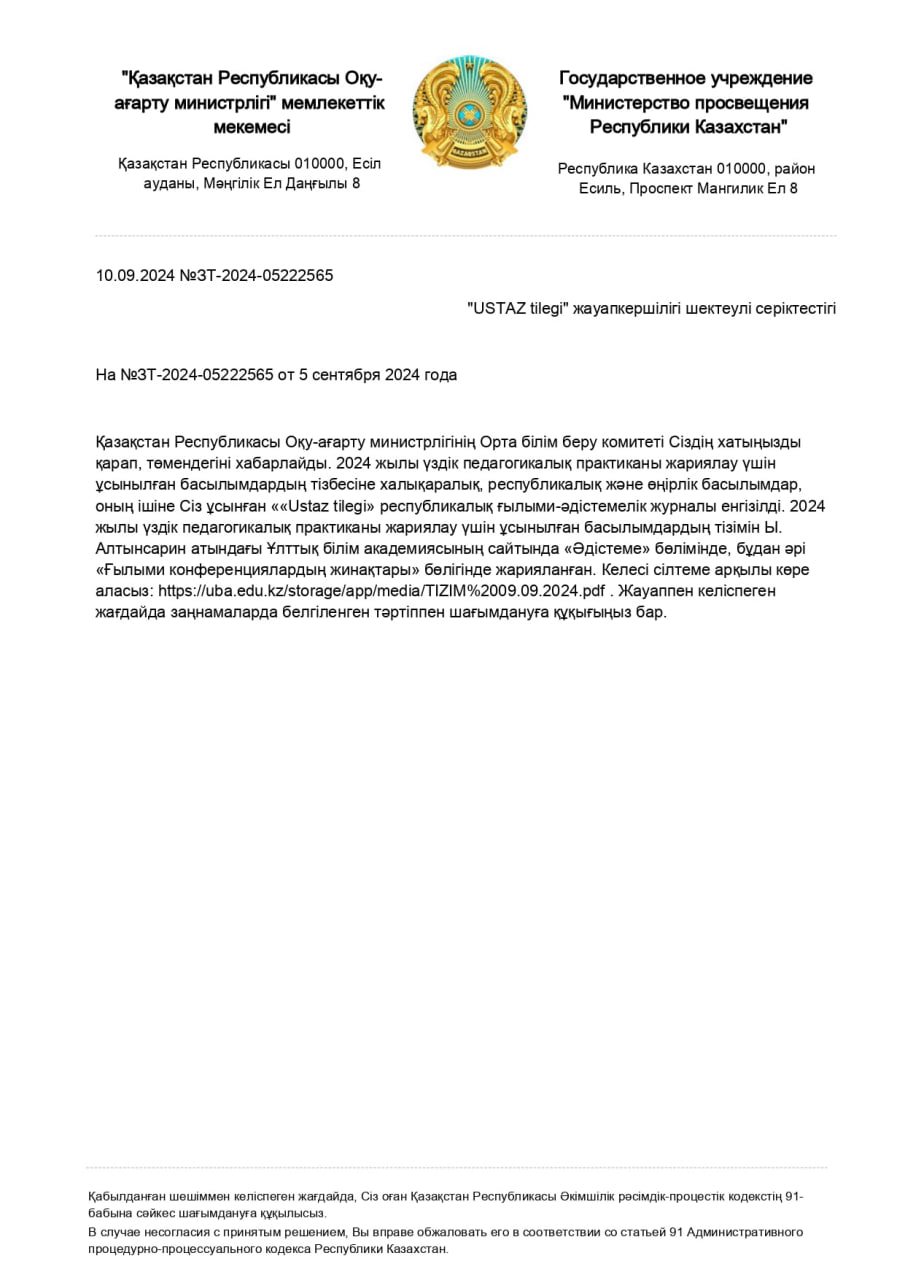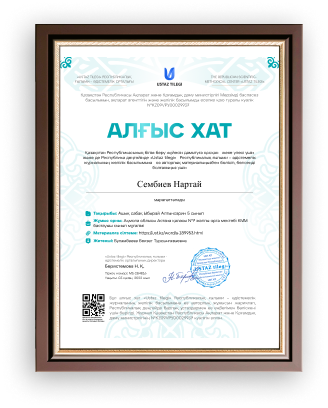
Short term plan: term 3
|
Unit: 5 Reading for pleasure |
Lesson 49 |
||
|
Teacher name: |
|
||
|
Date: |
|
||
|
Grade: 8 |
Number present: |
absent: |
|
|
Lesson title |
Twenty thousand leagues under the sea |
||
|
Learning objectives |
8.2.1.1 understand with little or no support the main points in extended talk on a wide range of general and curricular topics; 8.3.7.1 use appropriate subject-specific vocabulary and syntax to talk about a range of general topics, and some curricular topics |
||
|
Lesson objectives |
Learners will be able to: - introduce the topic; to read for gist - identify what pictures show - listen and read for gist and specific information |
||
|
Value links |
"Law and Order" Know the basics of the legal system and human rights |
||
|
Plan |
|||
|
Stages / Time |
Teachers actions |
Students actions |
Assessment criteria |
Resources |
|
Beginning of the lesson 5 min. Middle of the lesson Presentation part. 35 min |
Organization moment : 1.Greeting. Ask about the weather. Warming up The teacher sets the lesson objectives, letting students know what to anticipate from the lesson. Lead – In
Ex:1 P:54 Ask Ss to look at the picture of Jules Verne and elicit what, if anything, Ss know about him. Then ask Ss to read the biography to find out. |
Students of the class are listed. Students' attention is drawn to the lesson. Students say different words from the picture Learners answer the questions Learners read the biography to find out. Answer the question ANSWERS Jules Verne wrote ‘Twenty Thousand Leagues Under the Sea’, ‘Around the World in Eighty Days’, and ‘Journey to the Centre of the Earth’. People call him the father of science fiction because he wrote about things that didn’t exist yet, like submarines and spaceships |
The teacher to assess learners for their ability. “Good job! Well done!” Formative Assessment
Good job! Descriptor: - read the biography - answer the question Total: 2point |
Pictures |
|
|
Ex: 2 P: 54 Ask Ss to look at the pictures A-E and read through the descriptions 1-5. • Give Ss time to match them and check their answers Differentiation: «Verbal support» method is used to help Ss use new words in the sentences. Ex: 3 P: 54 Play the recording. Ss listen and order the pictures. Check Ss’ answers. Ex: 4 P: 54 Elicit what, if anything, Ss know about the lost city of Atlantis. Then play the recording. Ss listen and follow the text in their books and answer the question. Check Ss’ answers. Ex: 5 P: 54 Ask Ss to read the stems of the sentences (1-4). Give Ss time to read the extract and complete the task. Check Ss’ answers around the class. |
Learners look at the pictures. Which shows: ANSWERS 1 B 2 C 3 E 4 D 5 A Learners listen to an adaptation of the beginning of the story Twenty Thousand Leagues Under the Sea and put the pictures in the correct order ANSWERS 1 E 2 C 3 A 4 B 5 D Learners listen and read the extract to find out. Answer the question ANSWERS The professor saw trees on the ocean floor, an underwater volcano, stone houses and ancient temples. Learners read the extract again and complete the sentences ANSWERS 1 Red Sea 2 the deep mysterious Atlantic Ocean 3 temples 4 knew for sure |
Descriptor: - look at the pictures. - match them Total: 2 point
Descriptor: - listen to an adaptation - put the pictures in the correct order Total: 2 point Descriptor: - listen and read the extract - answer the question. Total: 2 point. Descriptor: - read the extract - complete the sentences Total: 2 point. -Make CCQ questions Yes / No Total: 1 point. |
|
|
End of the lesson 5 min |
FEEDBACK Learners provide feedback on what they have learned at the lesson. Ex: P: Home task: |
Ss evaluate each other and encourage classmate with phrases like: Well done! Brilliant! Good job! I like it! |
Poster Success
|
|
Short term plan: term 3
|
Unit 5 Reading for pleasure |
Lesson 50 |
||
|
School |
|
||
|
Teacher name: |
|
||
|
Date: |
|
||
|
Grade: 8 |
Number present: |
absent: |
|
|
Lesson title |
The lost city |
||
|
Learning objectives |
8.2.1.1 understand with little or no support the main points in extended talk on a wide range of general and curricular topics 8.3.3.1 give an opinion at discourse level on a wide range of general and curricular topics 8.4.2.1 understand specific information and detail in texts on a growing range of general and curricular topics, including some extended texts |
||
|
Lesson objectives |
Learners will be able to: - consolidate new vocabulary - identify a narrative type - predict what happens next in a story, to give an opinion |
||
|
Value links |
"Law and Order" Observance of norms and rules of order and justice understand the need |
||
|
Plan |
|||
|
Stages / Time |
Teachers actions |
Students actions |
Assessment criteria |
Resources |
|
|
Beginning of the lesson 5 min Middle of the lesson Presentation part. 35 min |
Organization moment : 1.Greeting. Ask about the weather. Warming up The teacher sets the lesson objectives, letting students know what to anticipate from the lesson. Lead – In
Ex:7 P:55 Allow Ss time to look up the meanings of the words in the list in their dictionaries. Elicit definitions from Ss around the class. Then give Ss time to use them to complete the sentences Check Ss’ answers. |
Students of the class are listed. Students' attention is drawn to the lesson. Determines the topic and purpose of the lesson Students say different words from the picture Answer the question. Pupils complete the sentences. Use these words ANSWERS 1 escape 2 appeared 3 surrounded 4 moved 5 entered 6 produced |
The teacher to assess learners for their ability. “Good job! Well done!” Formative Assessment
Good job!
Descriptor: - complete the sentences - use these words Total: 2 point |
Pictures |
|
|
|
Ex: 8 P: 55 Read out the Study Skills box and explain the difference between a first-person narrative and a third-person narrative. Elicit what type of narrative the text is and who narrates it. Ex: 9 P: 55 Ask Ss to discuss the questions in small groups. Monitor the activity around the class and then elicit answers from various groups. Differentiation: «Verbal support» method is used to help Ss use new words in the sentences. Ex: 10 P: 55 Ask Ss to research the story online. Play the video for Ss and elicit their comments. Elicit who guessed correctly. |
Pupils answer the question ANSWERS It is a first-person narrative narrated by Professor Aronnax Pupils discuss in groups. What do you think happens next in the story? Do you think the three men will manage to escape? How? ANSWERS A: I think they will go on many adventures with Captain Nemo in the Nautilus, but they will not be allowed to leave. B: I think you’re right. Maybe they will travel all around the world. C: I think the men will escape in a small boat as they planned, but not for some time. etc Pupils research the whole story or watch the video. How close were your guesses? ANSWERS Ss’ own answers |
Descriptor: - answer the question Total: 1 point
Descriptor: - discuss in groups. - answer the question Total: 2 point Descriptor: - research the whole story - watch the video Total: 2 point -Make CCQ questions Yes / No Total: 1 point |
Card Worksheet Students book |
|
|
End of the lesson 5 min |
FEEDBACK Learners provide feedback on what they have learned at the lesson. Ex: P: Home task: |
Ss evaluate each other and encourage classmate with phrases like: Well done! Brilliant! Good job! I like it! |
Poster Success
|
||
Short term plan: term 3
|
Unit 5 Reading for pleasure |
Lesson 51 |
||
|
School |
|
||
|
Teacher name: |
|
||
|
Date: |
|
||
|
Grade: 8 |
Number present: |
absent: |
|
|
Lesson title |
To the sea |
||
|
Learning objectives |
8.2.2.1 understand with little or no support most specific information in extended talk on a wide range of general and curricular topics; 8.3.7.1 use appropriate subject-specific vocabulary and syntax to talk about a range of general topics, and some curricular topics 8.4.2.1 understand specific information and detail in texts on a growing range of general and curricular topics, including some extended texts |
||
|
Lesson objectives |
Learners will be able to: - introduce the topic - read for gist - listen and read for gist - present and practise phrasal verbs with go |
||
|
Value links |
"Law and Order" Ensuring the protection and safety of society understand the importance of law and order as |
||
|
Plan |
|||
|
Stages / Time |
Teachers actions |
Students actions |
Assessment criteria |
Resources |
|
Beginning of the lesson 5 min Middle of the lesson Presentation part. 35 min |
Organization moment : 1.Greeting. Ask about the weather. Warming up The teacher sets the lesson objectives, letting students know what to anticipate from the lesson. Lead – In
Ex: 1a P: 56 Elicit what animal is in the picture and elicit other sea mammals from around the class. |
Learners remember previous lesson vocabulary Determines the topic and purpose of the lesson Students say different words from the picture Pupils answer the question. What is the animal in the picture? What do you know about it? Can you name any more marine mammals? ANSWERS The animal is a whale. Other sea mammals include dolphins, orca, seals and walruses |
The teacher to assess learners for their ability. “Good job! Well done!” Formative Assessment
Good job!
Descriptor: - answer the question - name any more marine mammals Total: 2 point |
Pictures |
|
|
Ex:1b P: 56 Elicit answers to the questions from Ss around the class. Differentiation: «Verbal support» method is used to help Ss use new words in the sentences. Ex: 2 P: 56 Ask Ss to read the biography and elicit an answer to the question. Ex: 3 P: 56 Read out the question. Play the recording. Ss listen and read the text to find out the answer. . Ex: 4 P: 57 Give Ss time to read the text again and read the sentences and then mark them as true or false. Check Ss’ answers. |
Pupils read the author’s biography. How do you think Melville’s own experiences helped him write Moby-Dick? ANSWERS Whaling is illegal in many countries these days because whales are endangered, but in the past whales were hunted for their meat and bones Pupils listen and read to find out. Answer the question. ANSWERS He is not sure why he decided to go whaling. He wanted to be a sailor and get paid while exploring the sea. He usually went to sea on merchant ships, but he was excited by the idea of the great whale. Pupils read the extract. Decide if the statements ANSWERS 1 T 2 T 3 F 4 F 5 T Pupils read the box and complete the sentences ANSWERS 1 over 2 off 3 by 4 on |
Descriptor: - read the author’s biography - answers to the questions Total: 2 point
Descriptor: - listen and read - answers to the questions Total: 2 point Descriptor: - read the extract - complete the sentences Total: 1 point -Make CCQ questions Yes / No Total: 1 point Total: 10 point |
Card Worksheet |
|
End of the lesson 5 min |
FEEDBACK Learners provide feedback on what they have learned at the lesson. Ex: Home task: |
Ss evaluate each other and encourage classmate with phrases like: Well done! Brilliant! Good job! I like it! |
Poster Success
|
|
Short term plan: 3
|
Unit5: |
Lesson 52 |
||
|
Teacher name: |
|
||
|
Date: |
|
||
|
Grade: 8 |
Number present: |
absent: |
|
|
Lesson title |
Kyz Zhybek |
||
|
Learning objectives |
8.2.2.1 understand with little or no support most specific information in extended talk on a wide range of general and curricular topics; 8.4.4.1 read a growing range of extended fiction and non-fiction texts on familiar and some unfamiliar general and curricular topics |
||
|
Lesson objectives |
Learners will be able to: - introduce the topic - listen and read for specific information - complete a graphic organiser; to identify adjectives |
||
|
Value links |
"Law and Order" Know the basics of the legal system and human rights |
||
|
Plan |
|||
|
Stages / Time |
Teachers actions |
Students actions |
Assessment criteria |
Resources |
|
Beginning of the lesson 5 min Middle of the lesson Presentation part. 35 min |
Organization moment : 1.Greeting. Ask about the weather. Warming up The teacher sets the lesson objectives, letting students know what to anticipate from the lesson. Lead – In
Ex:1 P:58 Ask Ss to look at the pictures. Elicit what, if anything, they know about Kyz-Zhibek and the story. Ask Ss to discuss what they know in pairs and then ask some Ss to tell the class. Ask Ss to read the information box to find out more. |
Students' attention is drawn to the lesson. Learners talk about daily routines previous lesson vocabulary Determines the topic and purpose of the lesson Students say different words from the picture Pupils look at the picture and the title. Who is Kyz-Zhibek? What do you know about the story of Kyz-Zhibek? Discuss in pairs. ANSWERS Ss’ own answers |
The teacher to assess learners for their ability. “Good job! Well done!” Formative Assessment
Good job! Descriptor: - look at the picture - discuss in pairs. Total: 2 point |
Pictures |
|
|
Ex: 2 P: 58 Read out the names. Elicit Ss’ guesses as to how they relate to Kyz-Zhibek. Play the recording. Ss listen and read the text and find out. Differentiation: «Verbal support» method is used to help Ss use new words in the sentences Ex: 3 P: 59 Ask Ss to read the questions (1-4) and answer choices A-C. Give Ss time to read the text and complete the task. Check Ss’ answers around the class. Ex: 4 P: 59 Ask Ss to copy the graphic organiser into their notebooks. Then give them time to complete it with the adjectives the writer uses in the text. Check Ss’ answers on the board. Ex: 6 P: 59 Ask Ss to read the events and put them in the correct order referring back to the text as necessary. Check Ss’ answers |
Pupils listen and read to find out. Answer the question. ANSWERS Tolegen is the man Kyz-Zhibek falls in love with. Bekezhan is the leader of Kyz-Zhibek’s tribe. Bazarbai is Tolegen’s father. Pupils read the extract and choose the correct answer ANSWERS 1 B 2 A 3 C 4 A Pupils complete the graphic organiser below with the adjectives the writer uses in the story to describe the characters ANSWERS CHARACTERS Kyz-Zhibek: intelligent, beautiful, famous, heartbroken Tolegen: handsome, young, strong-willed, beloved, Bekezhan: wicked, evil, Pupils put the events in the order they happened. ANSWERS a 2 b 5 c 3 d 7 e 1 f 6 g 4 |
Descriptor: - listen and read - answer the question. Total: 2 point
Descriptor: - read the extract - choose the correct answer Total: 2 point Descriptor: - complete the graphic organiser - describe the characters Total: 2point
Descriptor: - put the events in the order Total: 1 point
-Make CCQ questions Yes / No Total: 1 point |
Card Worksheet Students book |
|
End of the lesson 5 min |
FEEDBACK Learners provide feedback on what they have learned at the lesson. Ex: Home task: |
Ss evaluate each other and encourage classmate with phrases like: Well done! Brilliant! Good job! I like it! |
Poster Success
|
|
Short term plan: term 3
|
Unit: 5 Reading for pleasure |
Lesson 53 |
||
|
Teacher name: |
|
||
|
Date: |
|
||
|
Grade:8 |
Number present: |
absent: |
|
|
Lesson title |
The Mousaleum of Aish Bibi |
||
|
Learning objectives |
8.2.5.1 recognise the opinion of the speaker(s) with little or no support in extended talk on a wide range of general and curricular topics 8.4.4.1 read a growing range of extended fiction and non-fiction texts on familiar and some unfamiliar general and curricular topics |
||
|
Lesson objectives |
Learners will be able to: - conduct research, evaluate and communicate findings to answer questions or solve problems -recognize meaning of words, phrases, tone, stress, intonation and pace to explore speaker's attitude or opinion in talks |
||
|
Value links |
"Law and Order" Observance of norms and rules of order and justice understand the need |
||
|
Plan |
|||
|
Stages / Time |
Teachers actions |
Students actions |
Assessment criteria |
Resources |
|
Beginning of the lesson 5 min Middle of the lesson Presentation part. 35 min |
Organization moment : 1.Greeting. Ask about the weather. Warming up The teacher sets the lesson objectives, letting students know what to anticipate from the lesson. Lead – In
Ex1 P:60 To introduce the topic; to listen and read for gist Ask Ss to look at the picture and read the title of the text. Read out the question and elicit Ss’ guesses. Play the recording. Ss listen and read the text to find out. Elicit answers from Ss around the class |
Students' attention is drawn to the lesson. Learners talk about days of the week previous lesson vocabulary Determines the topic and purpose of the lesson Students say different words from the picture Pupils look at the picture and read the title of the text. Answer the question. ANSWERS No one knows why the mausoleum was really created, but there is a legend that says Karakhan, the khan of Taraz, built it for the woman he loved, Aisha Bibi, at the place where she died. |
The teacher to assess learners for their ability. “Good job! Well done!” Formative Assessment
Good job!
Descriptor: - look at the picture - read the title - answer the question. Total: 3 point
|
|
|
|
Ex: 2 P: 61 To read for specific information Give Ss time to read the questions and answer choices and then read the text again and answer them. Check Ss’ answers. . Ex: 3 P: 61 To read for specific information Explain the task. Allow Ss time to read the sentences and complete them referring to the text as necessary. Check Ss’ answers. Ex: 4 P: 61 To consolidate new vocabulary Direct Ss to the words in the list and give them time to complete the sentences using their dictionaries as necessary. Check Ss’ answers. Ex: 5 P: 61 To present/revise quantifiers Direct Ss’ attention to the theory box and ask various Ss to read the examples aloud. Read the theory aloud and make sure Ss understand when to use many/more, much/more, (a) few and less … than. Give Ss time to complete the task. Check Ss’ answers. |
Pupils read the extract again and for questions choose the correct answer ANSWERS 1 C 2 A 3 B Pupils read and complete the sentences. Use: Karakhan – Aisha Bibi – Babadzha Khatun – Khakim-Ata. ANSWERS 1 Aisha Bibi 2 Babadzha Khatun 3 Khakim-Ata 4 Karakhan Pupils complete the sentences. Use your dictionary. ANSWERS 1 ordered 2 guarded 3 buried 4 crossed 5 refused Pupils read the theory and choose the correct item ANSWERS 1 many 2 a few 3 less 4 more 5 much |
Descriptor: - read the extract - choose the correct answer Total: 2 point Descriptor: - read and complete the sentences Total: 1 point Descriptor: - complete the sentences -use dictionary. Total: 2 point Descriptor: - read the theory - choose the correct item Total: 2 point -Make CCQ questions Yes / No Total: 10 point |
Card Worksheet Vocabulary card |
|
End of the lesson 5 min |
FEEDBACK Learners provide feedback on what they have learned at the lesson. Ex: Home task: |
Ss evaluate each other and encourage classmate with phrases like: Well done! Brilliant! Good job! I like it! |
Poster Success
|
|
Short term plan: term 3
|
Unit 5 Reading for pleasure |
Lesson 54 |
||
|
School |
|
||
|
Teacher name: |
|
||
|
Date: |
|
||
|
Grade: 8 |
Number present: |
absent: |
|
|
Lesson title |
Edutainment: benefits of reading |
||
|
Learning objectives |
8.1.10.1 use talk or writing as a means of reflecting on and exploring a range of perspectives on the world 8.2.2.1 understand with little or no support most specific information in extended talk on a wide range of general and curricular topics; 8.3.7.1 use appropriate subject-specific vocabulary and syntax to talk about a range of general topics, and some curricular topics |
||
|
Lesson objectives |
Learners will be able to: - use lexis/syntax norms in appropriate situations or context - read authentic texts for pleasure and academic purposes |
||
|
Value links |
"Law and Order" Ensuring the protection and safety of society understand the importance of law and order as |
||
|
Plan |
|||
|
Stages / Time |
Teachers actions |
Students actions |
Assessment criteria |
Resources |
|
Beginning of the lesson 5 min Middle of the lesson Presentation part. 35 min |
Organization moment : 1.Greeting. Ask about the weather. Warming up The teacher sets the lesson objectives, letting students know what to anticipate from the lesson. Lead – In
Ex:1 P:62 To understand a quotation and express an opinion Ask Ss to read the quotation and then discuss in pairs what they think it means. Elicit answers from Ss around the class |
Students' attention is drawn to the lesson. Determines the topic and purpose of the lesson Students say different words from the picture and count one to hundred Pupils discuss the following quotation.. ANSWERS A: I think that the quotation means that books can teach you a lot of things to help you succeed in life, so everyone should read a lot. B: I agree and I think if everyone read more, there would be less ignorance in the world. |
The teacher to assess learners for their ability. “Good job! Well done!” Formative Assessment
Good job! Descriptor: - discuss the following quotation Total: 1 point |
Pictures |
|
|
Ex: 2 P: 62 To learn about the value of reading and match the benefits to the results • Ask Ss to read the lists of benefits and results and then give them time to match them. • Check Ss’ answers and then elicit whether Ss agree with the points. Ex: 3 P: 62 To test knowledge learnt in this module/ to do a quiz Explain the task. Allow Ss some time to read the questions and mark them as true or false. Tell Ss they can review the module and find the relevant information to help them if necessary. Check Ss’ answers Ex: 4 P: 62 To consolidate vocabulary learnt in the module/to write a quiz xplain the task and allow Ss time to work in pairs and look through the module and think of quiz questions. Tell Ss they can use the quiz in the previous task as a model. Offer an example (e.g. Arthur Conan Doyle wrote The Hound of the Baskervilles. [T]) Ss can swap their quiz with another pair and do it and then report back to the class |
Pupils match the benefits of reading to the results. Do you agree with the points? ANSWERS 1 b 2 e 3 a 4 d 5 c Pupils do the quiz. Mark the sentences as T (true) or F (false). ANSWERS 1 T 2 T 3 F 4 T 5 F 6 F 7 T 8 F Pupils look at Module 5 and write a quiz of your own similar to the one in Ex. 3. ANSWERS 1 Ian Fleming wrote ‘The Wizard of Oz’. [F] 2 Jules Verne wrote ‘Journey to the Centre of the Earth’. [T] 3 The captain of the Nautilus was Aronnax. [F] 4 The main character in ‘Moby-Dick’ is Herman Melville. [F] 5 Jules Verne was French. [T] 6 Kyz-Zhibek is similar to ‘Romeo and Juliet’. [T] 7 Aisha Bibi ‘s father was Khakim-Ata. [T] 8 Karakhan guarded the mausoleum until he died. [F] |
Descriptor: - learn about the value of reading\ - match the benefits Total: 2 point
Descriptor: - do the quiz - mark the sentences Total: 2 point Descriptor: - look at Module 5 - write a quiz of your own Total: 2 point -Make CCQ questions Yes / No Total: 10 point |
Card Worksheet Students book |
|
End of the lesson 5 min |
FEEDBACK Learners provide feedback on what they have learned at the lesson. Ex: Home task: |
Ss evaluate each other and encourage classmate with phrases like: Well done! Brilliant! Good job! I like it! |
Poster Success
|
|
Short term plan: term 3
|
Unit 6: The natural world |
Lesson 55 |
||
|
School |
|
||
|
Teacher name: |
|
||
|
Date: |
|
||
|
Grade: 8 |
Number present: |
absent: |
|
|
Lesson title |
Vocabulary: flowers |
||
|
Learning objectives |
8.2.7.1 recognize typical features at word, sentence and text level of a growing range of spoken genres; 8.3.7.1 use appropriate subject-specific vocabulary and syntax to talk about a range of general topics, and some curricular topics |
||
|
Lesson objectives |
Learners will be able to: - use lexis/syntax norms in appropriate situations or context - check their own and others’ writing to ensure that it communicates what they intended and improve the writing if needed |
||
|
Value links |
"Law and Order" Know the basics of the legal system and human rights |
||
|
Plan |
|||
|
Stages / Time |
Teachers actions |
Students actions |
Assessment criteria |
Resources |
|
Beginning of the lesson 5 min Middle of the lesson Presentation part. 35 min |
Organization moment : 1.Greeting. Ask about the weather. Warming up The teacher sets the lesson objectives, letting students know what to anticipate from the lesson. Lead – In
Ex:1 P:63 To present flowers Direct Ss to the pictures. Ask Ss to write the headings into their notebooks and then give them time to list the flowers under the correct headings. Play the recording. Ss listen and check their answers. |
Students of the class are listed. Students' attention is drawn to the lesson. Learners write the numbers from previous lesson Determines the topic and purpose of the lesson Students say different words from the picture Pupils look at the pictures. List them under the headings: Garden flowers – Wild flowers – Endangered Flowers. ANSWERS Garden flowers: petunia, rose Wild flowers: thistle, jade vine, petunia, lady’s slipper orchid, rose, poppy Endangered flowers: jade vine, lady slipper orchid |
The teacher to assess learners for their ability. “Good job! Well done!” Formative Assessment
Good job! Descriptor: - look at the pictures - list them under the headings Total: 2 point |
Pictures |
|
|
Ex: 2 P: 63 To talk about flowers; to express an opinion Read the questions aloud and then ask various Ss to share their answers with the class. Ex: 3 P: 63 To personalise the topic Read out the questions and give Ss time to consider their answers and then elicit answers from Ss around the class. Ex: 4 P: 63 To prepare a poster Ask Ss to work in small groups and give them time to go online and research and collect photos of garden/wild flowers in Kazakhstan and prepare a poster. Ask various groups to present their posters to the class. Display the posters around the classroom. |
Pupils answer the question. Which of these flowers are there in Kazakhstan? Which is your favourite flower? ANSWERS There are thistles and roses in Kazakhstan. My favourite flower is the rose. Pupils answer the question. When was the last time you bought flowers? ANSWERS I bought flowers for my mother on Women’s Day in March. Pupils collect photographs showing garden/wild flowers in Kazakhstan. Prepare a poster. Present it to the class. ANSWERS Here are some garden/wild flowers that you can see in Kazakhstan
|
Descriptor: - talk about flowers - talk about flowers Total: 2 point
Descriptor: - answer the question. Total: 1 point Descriptor: - collect photographs - prepare a poster Total: 2 point -Make CCQ questions Yes / No |
Card Worksheet Students book |
|
End of the lesson 5 min |
FEEDBACK Learners provide feedback on what they have learned at the lesson. Ex: Home task: |
Ss evaluate each other and encourage classmate with phrases like: Well done! Brilliant! Good job! I like it! |
Poster Success
|
|
Short term plan: term 3
|
Unit 6: The natural world |
Lesson 56 |
||
|
School |
|
||
|
Teacher name: |
|
||
|
Date: |
|
||
|
Grade: 8 |
Number present: |
absent: |
|
|
Lesson title |
Reading: The red panda |
||
|
Learning objectives |
8.2.5.1 recognise the opinion of the speaker(s) with little or no support in extended talk on a wide range of general and curricular topics 8.4.4.1 read a growing range of extended fiction and non-fiction texts on familiar and some unfamiliar general and curricular topics |
||
|
Lesson objectives |
Learners will be able to: -identify relate/describe the main idea, themes, setting, plot, character(isation) and narrative structure. - explain the topical word by giving definition/synonym |
||
|
Value links |
"Law and Order" Observance of norms and rules of order and justice understand the need |
||
|
Plan |
|||
|
Stages / Time |
Teachers actions |
Students actions |
Assessment criteria |
Resources |
|
Beginning of the lesson 5 min Middle of the lesson Presentation part. 35 min |
Organization moment : 1.Greeting. Ask about the weather. Warming up The teacher sets the lesson objectives, letting students know what to anticipate from the lesson. Lead – In
Ex:1 P:64 To introduce the topic; to lister and read for gist Ask Ss to look at the picture, read the title and try to answer the questions. Play the recording. Ss listen and read the text and find out if their guesses were correct |
Students of the class are listed. Students' attention is drawn to the lesson. Learners write the numbers from previous lesson Determines the topic and purpose of the lesson Students say different words from the picture Pupils look at the picture and read the title. Answer the question. ANSWERS The text is about the red panda. The red panda is endangered because of habitat destruction and hunting. |
The teacher to assess learners for their ability. “Good job! Well done!” Formative Assessment
Good job! Descriptor: - look at the pictures - answer the question. Total: 2 point |
Pictures |
|
|
Ex: 2 P: 64 To read for specific information Explain the task. Allow Ss time to read the questions and answer choices and then read the text again and complete the task. Check Ss’ answers Ex: 3 P: 65 To present endangered animals Play the recording. Ss listen and repeat chorally and/or individually. Check Ss’ pronunciation and intonation and then elicit the L1 equivalents from Ss around the class. Ex: 4 P: 65 To classify animals Ask Ss to read the classifications in the box on p. 64 and explain/elicit the meanings of any unknown words. Then elicit which classification of animals each of the endangered species in Ex. 3 belongs to from Ss around the class. |
Pupils read the text and for questions, choose the correct answer. ANSWERS 1 B 2 B 3 C 4 B Pupils listen and repeat. Say the words in your language. ANSWERS Students own answer. Pupils read the animal classifications. Answer the question. Discuss with your partner. ANSWERS mammals: snow leopard, black rhino, blue whale, giant panda reptile: loggerhead turtle fish: great white shark |
Descriptor: - listen and repeat - say the words in your language Total: 2 point
Descriptor: - Say the words in your language - answer the question Total: 2 point Descriptor: - read the animal classifications - answer the question Total: 2 point -Make CCQ questions Yes / No |
Card Worksheet Students book |
|
End of the lesson 5 min |
FEEDBACK Learners provide feedback on what they have learned at the lesson. Ex: Home task: |
Ss evaluate each other and encourage classmate with phrases like: Well done! Brilliant! Good job! I like it! |
Poster Success
|
|
Short term plan: term 3
|
Unit 6: The natural world |
Lesson 57 |
||
|
school |
|
||
|
Teacher name: |
|
||
|
Date: |
|
||
|
Grade: 8 |
Number present: |
absent: |
|
|
Lesson title |
Vocabulary: Endangered animals |
||
|
Learning objectives |
8.1.5.1 use feedback to set personal learning objectives 8.2.5.1 recognise the opinion of the speaker(s) with little or no support in extended talk on a wide range of general and curricular topics 8.3.7.1 use appropriate subject-specific vocabulary and syntax to talk about a range of general topics, and some curricular topics |
||
|
Lesson objectives |
Learners will be able to: -identify relate/describe the main idea, themes, setting, plot, character(isation) and narrative structure. - explain the topical word by giving definition/synonym |
||
|
Value links |
"Law and Order" Ensuring the protection and safety of society understand the importance of law and order as |
||
|
Plan |
|||
|
Stages / Time |
Teachers actions |
Students actions |
Assessment criteria |
Resources |
|
Beginning of the lesson 5 min Middle of the lesson Presentation part. 35 min |
Organization moment : 1.Greeting. Ask about the weather. Warming up The teacher sets the lesson objectives, letting students know what to anticipate from the lesson. Lead – In
Ex:5 P:65 To consolidate and broaden the topic Ss discuss in pairs other endangered animals and how we can help them. Ask various pairs to report back to the class. |
Students of the class are listed. Students' attention is drawn to the lesson. Learners write the numbers from previous lesson Determines the topic and purpose of the lesson Students say different words from the picture Pupils answer the question. Discuss in pairs. ANSWERS Many types of tigers need our help as well as gorillas, orangutans and chimpanzees. We need to protect these animals from hunters and protect their natural habitats. We can join a wildlife organisation or an environmental group. We can raise money and write to governments to make laws to stop hunting. |
The teacher to assess learners for their ability. “Good job! Well done!” Formative Assessment
Good job! Descriptor: - answer the question - discuss in pairs. Total: 2 point |
Pictures |
|
|
Ex: 6 P: 65 To present and practise prepositional phrases Read through the list of prepositions and give Ss time to complete the sentences using their dictionaries to check. Check Ss’ answers. Ex: 7 P: 65 To practise word formation (forming adjectives) Ask Ss to read the theory box and then explain the task. Give Ss time to complete the task and then check their answers. Ex: 8 P: 65 To discuss ways to help endangered species Ask Ss to work in small groups and discuss the ideas for helping endangered species. Monitor the activity around the class and then ask some groups to report back to the class. |
Pupils complete the sentences ANSWERS 1 from 2 to 3 under 4 in 5 to Pupils read the theory, then form adjectives from the words in bold to complete the sentences. ANSWERS 1 natural 2 noisy 3 dangerous 4 effective Pupils what are you going to do to help endangered animals? Decide in groups. Tell the class. ANSWERS We’re going to join an environmental group that protects tigers. We are going to write letters about threatened species to governments to make laws to stop hunting. We are going to learn about adopting endangered species. |
Descriptor: - complete the sentences Total: 2 point Descriptor: - read the theory - complete the sentences Total: 2 point Descriptor: - decide in groups - tell the class. Total: 2 point -Make CCQ questions Yes / No |
Card Worksheet Students book |
|
End of the lesson 5 min |
FEEDBACK Learners provide feedback on what they have learned at the lesson. Ex: Home task: |
Ss evaluate each other and encourage classmate with phrases like: Well done! Brilliant! Good job! I like it! |
Poster Success
|
|
Short term plan: term 3
|
Unit 6: The natural world |
Lesson 58 |
||
|
School |
|
||
|
Teacher name: |
|
||
|
Date: |
|
||
|
Grade: 8 |
Number present: |
absent: |
|
|
Lesson title |
Use of English: The passive |
||
|
Learning objectives |
8.5.3.1 write with moderate grammatical accuracy on a limited range of familiar general and curricular topics 8.6.1.10 use present continuous forms for present and future meaning and past continuous, including some passive forms, on a range of familiar general and curricular topics; |
||
|
Lesson objectives |
Learners will be able to: - use most of the pre-intermediate level grammar correctly - explain the topical word by giving definition/synonym |
||
|
Value links |
"Creativity and Innovation" Monitoring, measuring, conducting experiments and experiments ability; |
||
|
Plan |
|||
|
Stages / Time |
Teachers actions |
Students actions |
Assessment criteria |
Resources |
|
Beginning of the lesson 5 min Middle of the lesson Presentation part. 35 min |
Organization moment : 1.Greeting. Ask about the weather. Warming up The teacher sets the lesson objectives, letting students know what to anticipate from the lesson. Lead – In
Ex:1 P:66 Read the table aloud and explain how we form the passive voice (the verb ‘to be’ + past participle of the main verb). Explain that we use the passive to talk about actions when the person who does the action is unknown, unimportant or obvious from the context; when the action is more important than the person who does it; in formal situations (e.g. on signs, etc). Elicit which sentence emphasises what happened. |
Students of the class are listed. Students' attention is drawn to the lesson. Learners write the numbers from previous lesson Determines the topic and purpose of the lesson Students say different words from the picture Pupils look at the sentences below. Which sentence emphasises what happened to a subject, rather than what a subject did? ANSWERS The second sentence emphasises what happened to Antarctica. It is a passive sentence. The first sentence emphasises who (Shackleton) did it. |
The teacher to assess learners for their ability. “Good job! Well done!” Formative Assessment
Good job! Descriptor: - look at the sentences below - answer the question Total: 2 point |
Pictures |
|
|
Ex: 2 P: 66 To present the tenses of the passive Read the theory box aloud. Go through the different tense forms of the passive and read out the examples. Allow Ss time to complete the table and then check their answers. Ex: 3 P: 66 To practise the passive Explain the task and give Ss time to complete the task and then check Ss’ answers around the class. Ex: 4 P: 66 To introduce an agent/instrument; to practise the passive Explain the task and read out the theory box. Point out that in the passive when we want to say that sb uses sth to do sth we use with and when we want to say that sb does sth we use by. Give Ss time to complete the task. Check Ss’ answers. Ex: 5 P: 66 To practise the passive Ask Ss to read the table and then match the words in the columns to make full sentences in the passive. Give Ss time to complete the task and then check Ss' answers. |
Pupils complete with: was, being (x2), has, be (x3), is. ANSWERS 1 is 2 being 3 was 4 being 5 has 6 be 7 be 8 be Pupils fill in: is or are. ANSWERS 1 is 2 is 3 are Pupils read the theory. Use with or by to complete the following sentences. ANSWERS 1 by 2 with 3 by 4 with 5 by Pupils match the word(s) in the columns to make sentences. Compare with your partner. ANSWERS Pine trees will be planted in the local forest. The rubbish is collected every day. Saiga antelopes are found in Central Asia. Mount Everest was climbed by Edmund Hillary. |
Descriptor: - complete with: was, being Total: 2 point
Descriptor: - fill the gaps Total: 2 point Descriptor: - read the theory - complete the sentences Total: 2 point Descriptor: - match the word - make sentences. Total: 2 point -Make CCQ questions Yes / No |
Card Worksheet Students book |
|
End of the lesson 5 min |
FEEDBACK Learners provide feedback on what they have learned at the lesson. Ex: Home task: |
Ss evaluate each other and encourage classmate with phrases like: Well done! Brilliant! Good job! I like it! |
Poster Success
|
|
Short term plan: term 3
|
Unit 6: The natural world |
Lesson 59 |
||
|
Teacher name: |
|
||
|
Date: |
|
||
|
Grade: 8 |
Number present: |
absent: |
|
|
Lesson title |
Use of English: some, any, no, every |
||
|
Learning objectives |
8.2.2.1 understand with little or no support most specific information in extended talk on a wide range of general and curricular topics; 8.5.3.1 write with moderate grammatical accuracy on a limited range of familiar general and curricular topics 8.6.3.1 use a growing variety of compound adjectives and adjectives as participles and some comparative structures including not as…as, much …than to indicate degree on a range of familiar general and curricular topics; |
||
|
Lesson objectives |
Learners will be able to: - use lexis/syntax norms in appropriate situations or context - proofread own and other’s works for spelling |
||
|
Value links |
"Creativity and Innovation" Ability to find optimal ways to solve educational tasks to use new and already familiar algorithms combining, using them in solving non-standard problems |
||
|
Plan |
|||
|
Stages / Time |
Teachers actions |
Students actions |
Assessment criteria |
Resources |
|
Beginning of the lesson 5 min Middle of the lesson Presentation part. 35 min |
Organization moment : 1.Greeting. Ask about the weather. Warming up The teacher sets the lesson objectives, letting students know what to anticipate from the lesson. Lead – In
Ex:6 P:67 Explain the task and read out the theory box. Point out that in the some, any. Give Ss time to complete the task. Check Ss’ answers |
Students of the class are listed. Students' attention is drawn to the lesson. Learners write the numbers from previous lesson Determines the topic and purpose of the lesson Students say different words from the picture Pupils read the theory box. Choose the correct item. ANSWERS 1 nowhere 2 everywhere 3 something 4 any 5 everyone 6 anything |
The teacher to assess learners for their ability. “Good job! Well done!” Formative Assessment
Good job! Descriptor: - read the theory - choose the correct item. Total: 2 point |
Pictures |
|
|
Ex: 7 P: 67 Explain the task and give Ss time to complete the task and then check Ss’ answers around the class. Ex: 8 P: 67 Ask Ss to read the gapped information about the Sphinx and ask them to try to complete the gaps in pairs. Play the recording. Ss listen and check their answers Ex: 9 P: 67 Explain the task and give Ss time to complete it. Ask various Ss to talk/read out their text about the Sphinx. Ex: 10 P: 67 Explain the task and give Ss time to complete it. Check Ss’ answers.. |
Pupils choose the correct determiner. ANSWERS 1 neither 2 both 3 all 4 half 5 every 6 any Pupils in pairs, try to complete the missing information. ANSWERS 1 Cairo 2 Egyptians 3 2, 500 5 2 4 protect Pupils imagine you are a tour guide. Use the notes in Ex. 8 to write a text or talk about the Great Sphinx. Use passive verb forms. ANSWERS The Great Sphinx is located near Cairo, Egypt. It is made of limestone. It was built by the ancient Egyptians around 2,500 BC. It may have been built to protect Giza. It is visited by 2 million tourists every year. Pupils put the adjectives in brackets into the correct form to make comparisons. ANSWERS Students own answer |
Descriptor: - choose the correct determiner Total: 2 point
Descriptor: - work in pairs - complete the missing information. Total: 2 point Descriptor: - write a text or talk about the Great Sphinx - use passive verb forms Total: 2 point Descriptor: - put the adjectives - make comparisons. Total: 2 point -Make CCQ questions Yes / No |
Card Worksheet Students book |
|
End of the lesson 5 min |
FEEDBACK Learners provide feedback on what they have learned at the lesson. Ex: Home task: |
Ss evaluate each other and encourage classmate with phrases like: Well done! Brilliant! Good job! I like it! |
Poster Success
|
|
Short term plan: term 3
|
Unit 6: The natural world |
Lesson 60 |
||
|
School |
|
||
|
Teacher name: |
|
||
|
Date: |
|
||
|
Grade: 8 |
Number present: |
absent: |
|
|
Lesson title |
Reading: places of nature beauty |
||
|
Learning objectives |
8.2.1.1 understand with little or no support the main points in extended talk on a wide range of general and curricular topics 8.3.7.1 use appropriate subject-specific vocabulary and syntax to talk about a range of general topics, and some curricular topics 8.4.2.1 understand specific information and detail in texts on a growing range of familiar general and curricular topics, including some extended texts |
||
|
Lesson objectives |
Learners will be able to: - use lexis/syntax norms in appropriate situations or context - formulate a simple summary or character outline |
||
|
Value links |
"Creativity and Innovation" Use of various cognitive tools, knowledge about the world be able to collect (linguistic, reading culture, information, service in the digital environment) |
||
|
Plan |
|||
|
Stages / Time |
Teachers actions |
Students actions |
Assessment criteria |
Resources |
|
Beginning of the lesson 5 min Middle of the lesson Presentation part. 35 min |
Organization moment : 1.Greeting. Ask about the weather. Warming up The teacher sets the lesson objectives, letting students know what to anticipate from the lesson. Lead – In
Ex:1 P:68 Ask Ss to look at the pictures. Play the recording. Ss listen and imagine using the senses. Elicit answers from Ss around the class. |
Students of the class are listed. Students' attention is drawn to the lesson. Learners write the numbers from previous lesson Determines the topic and purpose of the lesson Students say different words from the picture Pupils look at the pictures. Now close your eyes and listen to the sounds. Where are you? What can you see, smell, touch, hear? How do you feel? ANSWERS Students own answer |
The teacher to assess learners for their ability. “Good job! Well done!” Formative Assessment
Good job! Descriptor: - look at the pictures - listen and imagine using the senses. Total: 2 point |
Pictures |
|
|
Ex: 2 P: 68 Elicit what, if anything, Ss know about Turgen Waterfalls and Lake Issyk. Elicit questions from various Ss and write three on the board. Play the recording. Ss read the text and find out if the text answers them Ex: 3 P: 68 Direct Ss to the words/phrases in bold in the text and give Ss time to match them to the words/phrases in the list. Check Ss’ answers Ex: 4 P: 69 Ask Ss to read the statements 1-4. Give Ss time to read the text and complete the task. Check Ss’ answers around the class and elicit corrections for any false answers. |
Pupils write three questions. Listen and read the text and see if you can answer your questions. ANSWERS Where are Turgen Waterfalls? In the Tian Shan Mountains What is there to see? Turgen Waterfalls – thick forest, green meadows, natural springs, impressive waterfalls, Lake Issyk, turquoise-blue waters When was Lake Issyk formed? Over 8,000 years ago Pupils match the words/phrases in bold with the definitions ANSWERS mixture = blend perfect place = ideal location nestled = situated in a sheltered position opportunity = chance surrounding = nearby Pupils read the text again and decide whether statements. Correct the false statements. ANSWERS 1 T 2 F The lake was originally formed 8,000 years ago. 3 F Lake Issyk is 1,760 metres above sea level. 4 T |
Descriptor: - write three questions - listen and read the text Total: 2 point
Descriptor: - match the words/phrases in bold Total: 2 point Descriptor: - read the text - decide whether statements Total: 2 point -Make CCQ questions Yes / No |
Card Worksheet Students book |
|
End of the lesson 5 min |
FEEDBACK Learners provide feedback on what they have learned at the lesson. Ex: Home task: |
Ss evaluate each other and encourage classmate with phrases like: Well done! Brilliant! Good job! I like it! |
Poster Success
|
|
Short term plan: term 3
|
Unit 6: The natural world |
Lesson 61 |
||
|
School |
|
||
|
Teacher name: |
|
||
|
Date: |
|
||
|
Grade: 8 |
Number present: |
absent: |
|
|
Lesson title |
Phrasal verbs (hang) |
||
|
Learning objectives |
8.2.2.1 understand with little or no support most specific information in extended talk on a wide range of general and curricular topics 8.4.8.1 use familiar and some unfamiliar paper and digital reference resources with little support to check meaning and extend understanding 8.5.3.1 write with moderate grammatical accuracy on a limited range of familiar general and curricular topics |
||
|
Lesson objectives |
Learners will be able to: - identify specific information in a variety of situations and contexts - use a wider range of modals to convey different conditions. |
||
|
Value links |
"Creativity and Innovation" Monitoring, measuring, conducting experiments and experiments ability; |
||
|
Plan |
|||
|
Stages / Time |
Teachers actions |
Students actions |
Assessment criteria |
Resources |
|
Beginning of the lesson 5 min Middle of the lesson Presentation part. 35 min |
Organization moment : 1.Greeting. Ask about the weather. Warming up The teacher sets the lesson objectives, letting students know what to anticipate from the lesson. Lead – In
Ex:5 P:69 Explain the task and read out the example. Tell Ss to use their dictionaries to look up the meanings of the words in the Check these words box. Give Ss time to complete the task. Check Ss’ answers. |
Students of the class are listed. Students' attention is drawn to the lesson. Learners write the numbers from previous lesson Determines the topic and purpose of the lesson Students say different words from the picture Pupils use words from the box to complete the sentences. You can use your dictionary. ANSWERS 2 dam 3 flood 4 restore 5 coniferous |
The teacher to assess learners for their ability. “Good job! Well done!” Formative Assessment
Good job! Descriptor: - use words from the box - complete the sentences Total: 2 point |
Pictures |
|
|
Ex: 6 P: 69 Read out the box and explain the task. Give Ss time to complete the task. Check Ss’ answers. Ex: 7 P: 69 Read the Study Skills box and explain that this information will help Ss to complete the task successfully. Explain the task and ask Ss to read the questions and answer choices. Play the recording. Ss listen and choose their answers. Check Ss’ answers. Ex: 48 P: 69 Explain the task. Divide Ss into small groups and tell them to research online and create a poster about other areas of natural beauty in their country. Allow time for Ss to complete the task or assign it as HW. Ask various Ss around the class to present their poster to the class. |
Pupils read the box and complete the sentences. ANSWERS 1 up 2 out 3 around 4 on Pupils listen to Joe booking a guided tour to Burabay National Park. For questions choose the correct answer ANSWERS 1 C 2 A 3 B 4 A 5 C Pupils collect information and create a poster of places of natural beauty in your country ANSWERS Students own answer. |
Descriptor: - read the box - complete the sentences Total: 2 point
Descriptor: - listen to Joe booking a guided tour - choose the correct answer Total: 2 point Descriptor: - collect information - create a poster of places of natural beauty Total: 2 point -Make CCQ questions Yes / No |
Card Worksheet Students book |
|
End of the lesson 5 min |
FEEDBACK Learners provide feedback on what they have learned at the lesson. Ex: Home task: |
Ss evaluate each other and encourage classmate with phrases like: Well done! Brilliant! Good job! I like it! |
Poster Success
|
|
Short term plan: term 3
|
Unit 6: The natural world |
Lesson 62 |
||
|
Teacher name: |
|
||
|
Date: |
|
||
|
Grade: 8 |
Number present: |
absent: |
|
|
Lesson title |
Everyday English: Suggesting – Agreeing / disagreeing |
||
|
Learning objectives |
8.2.1.1 understand with little or no support the main points in extended talk on a wide range of general and curricular topics 8.3.7.1 use appropriate subject-specific vocabulary and syntax to talk about a range of general topics, and some curricular topics 8.4.5.1 deduce meaning from context in short texts and some extended texts on a growing range of familiar general and curricular topics; |
||
|
Lesson objectives |
Learners will be able to: -To practise pronunciation of situational language -To learn synonymous phrases |
||
|
Value links |
"Creativity and Innovation" Ability to find optimal ways to solve educational tasks to use new and already familiar algorithms combining, using them in solving non-standard problems |
||
|
Plan |
|||
|
Stages / Time |
Teachers actions |
Students actions |
Assessment criteria |
Resources |
|
Beginning of the lesson 5 min Middle of the lesson Presentation part. 35 min |
Organization moment : 1.Greeting. Ask about the weather. Warming up The teacher sets the lesson objectives, letting students know what to anticipate from the lesson. Lead – In
Ex:1 a P:70 Play the recording. Ss listen and repeat chorally and/or individually. Pay attention to Ss’ pronunciation and intonation and correct as necessary. |
Students of the class are listed. Students' attention is drawn to the lesson. Learners write the numbers from previous lesson Determines the topic and purpose of the lesson Students say different words from the picture Pupils listen and repeat. ANSWERS Students own answer |
The teacher to assess learners for their ability. “Good job! Well done!” Formative Assessment
Good job! Descriptor: - listen and repeat Total: 2 point |
Pictures |
|
|
Ex: 1b P: 70 Refer Ss to the sentences in Ex 1 again and elicit Ss’ guesses as to what the dialogue is about. Play the recording. Ss listen and read the text and find out. Ex: 2 P: 70 Read out the underlined phrases in the dialogue. Refer Ss to the language box and elicit the synonymous phrases from various Ss around the class. Ex: 3 P: 70 Play the recording. Ss listen and read. Ask Ss to work in pairs and take roles and read out the dialogue. Monitor the activity around the class and ask some pairs to read out the dialogue in front of the class. Then elicit an answer to the question. Ex: 4 P: 70 Play the recording. Ss listen and identify the silent letters. Play the recording again with pauses for Ss to repeat chorally and/or individually. |
Pupils read the dialogue. Answer the question ANSWERS The dialogue is about a summer volunteering programme in Australia. Pupils replace the underlined phrases in the dialogue. ANSWERS We could = Let’s That’s a great idea! = Sure! Why don’t we = Shall we I don’t think so. = I’d rather not. Pupils listen to and read the dialogue again. Take roles and read it aloud. ANSWERS They will monitor the penguins to make sure they are healthy and tag them so that scientists can track their movements. Pupils listen and find the silent letters. Listen again and repeat. ANSWERS Silent letters: interesting, awesome, impressive, climb, every, different, foreign, knife, autumn, know, island |
Descriptor: - read the dialogue - answer the question Total: 2 point
Descriptor: - replace the underlined phrases - elicit the synonymous phrases Total: 2 point Descriptor: - listen to and read - take roles and read it aloud Total: 2 point Descriptor: - listen and find the silent letters - listen again and repeat Total: 2 point -Make CCQ questions Yes / No |
Card Worksheet Students book |
|
End of the lesson 5 min |
FEEDBACK Learners provide feedback on what they have learned at the lesson. Ex: Home task: |
Ss evaluate each other and encourage classmate with phrases like: Well done! Brilliant! Good job! I like it! |
Poster Success
|
|
Short term plan: term 3
|
Unit 6: The natural world |
Lesson 63 |
||
|
Teacher name: |
|
||
|
Date: |
|
||
|
Grade: 8 |
Number present: |
absent: |
|
|
Lesson title |
Across culture: Nature reserves |
||
|
Learning objectives |
8.2.1.1 understand with little or no support the main points in extended talk on a wide range of general and curricular topics 8.3.7.1 use appropriate subject-specific vocabulary and syntax to talk about a range of general topics, and some curricular topics 8.4.8.1 use familiar and some unfamiliar paper and digital reference resources with little support to check meaning and extend understanding |
||
|
Lesson objectives |
Learners will be able to: - To introduce the topic, to predict the content of the text, to listen for specific information |
||
|
Value links |
"Creativity and Innovation" Use of various cognitive tools, knowledge about the world be able to collect (linguistic, reading culture, information, service in the digital environment) |
||
|
Plan |
|||
|
Stages / Time |
Teachers actions |
Students actions |
Assessment criteria |
Resources |
|
Beginning of the lesson 5 min Middle of the lesson Presentation part. 35 min |
Organization moment : 1.Greeting. Ask about the weather. Warming up The teacher sets the lesson objectives, letting students know what to anticipate from the lesson. Lead – In
Ex:1 P:71 Ask Ss to read the introduction and look at the pictures. Ask Ss to guess which of the plants and animals can be found in each place. Play the recording. Ss listen and find out. |
Students' attention is drawn to the lesson. Learners write the numbers from previous lesson Determines the topic and purpose of the lesson Students say different words from the picture Pupils read the introduction on the webpage and look at the picture. Answer the question. ANSWERS Loch Lomond – bluebells, ransoms, red deer, red squirrels, wallabies Korgalzhyn Nature Reserve – roe deer, lynx, elk, moss, lichen, mushrooms, flamingos |
The teacher to assess learners for their ability. “Good job! Well done!” Formative Assessment
Good job! Descriptor: - read the introduction - answer the question. Total: 2 point |
Pictures |
|
|
Ex: 2 a P: 71 Read the sentences aloud one at a time and ask Ss to read the texts again and correct them. Ex: 2b P: 71 Give Ss time to read the texts again and find the words. Check Ss’ answers. Ex: 3 P: 71 Ask Ss to work in pairs and ask and answer questions about the two nature reserves. Monitor the activity around the class. |
Pupils read the text and correct the statements ANSWERS 1 In the spring, the forests around Loch Lomond are full of bluebells and ransoms. 2 Lock Lomond is famous for its fantastic wildlife and woodland. . 3 The Korgalzhyn Nature Reserve covers more than half a million hectares. 4 The star attractions of Korgalzhyn are the greater flamingos. Pupils find the words. ANSWERS habitats: woods, wetlands, lake types of birds: golden eagle, fish eagle, pelican, Siberian white crane, greater flamingo other types of animals: deer, red squirrel, red-necked wallaby, roe deer, lynx, elk plants: bluebells, ransom, moss, lichen, mushroom Pupils ask and answer questions about the two nature reserves. ANSWERS A: Where is Loch Lomond? B: In the west of Scotland. What is it famous for? A: Its fantastic wildlife and woodlands. What plants and animals can you see there? B: Bluebells, ransoms, deer, red squirrels, and maybe the golden eagle as well as red-necked wallabies. When were the wallabies brought there? A: Over 70 years ago. etc |
Descriptor: - read the text - correct the statements Total: 2 point
Descriptor: - read the texts - find the words Total: 2 point Descriptor: - ask and answer questions Total: 2 point -Make CCQ questions Yes / No |
Card Worksheet Students book |
|
End of the lesson 5 min |
FEEDBACK Learners provide feedback on what they have learned at the lesson. Ex: Home task: |
Ss evaluate each other and encourage classmate with phrases like: Well done! Brilliant! Good job! I like it! |
Poster Success
|
|
Short term plan: term 3
|
Unit 6: The natural world |
Lesson 64 |
||
|
School |
|
||
|
Teacher name: |
|
||
|
Date: |
|
||
|
Grade: 8 |
Number present: |
absent: |
|
|
Lesson title |
Across curriculum: Tree parts and functions |
||
|
Learning objectives |
8.2.5.1 recognise the opinion of the speaker(s) with little or no support in extended talk on a wide range of general and curricular topics 8.3.7.1 use appropriate subject-specific vocabulary and syntax to talk about a range of general topics, and some curricular topics 8.4.8.1 use familiar and some unfamiliar paper and digital reference resources to check meaning and extend understanding |
||
|
Lesson objectives |
Learners will be able to: - To read for cohesion and coherence - To consolidate comprehension of a text, to label a diagram |
||
|
Value links |
"Creativity and Innovation" Monitoring, measuring, conducting experiments and experiments ability; |
||
|
Plan |
|||
|
Stages / Time |
Teachers actions |
Students actions |
Assessment criteria |
Resources |
|
Beginning of the lesson 5 min Middle of the lesson Presentation part. 35 min |
Organization moment : 1.Greeting. Ask about the weather. Warming up The teacher sets the lesson objectives, letting students know what to anticipate from the lesson. Lead – In
Ex:1 P:72 Initiate a general class discussion about the importance of trees and elicit various ideas from Ss around the class. |
Students' attention is drawn to the lesson. Learners write the numbers from previous lesson Determines the topic and purpose of the lesson Students say different words from the picture Pupils answer the question. Tell the class. ANSWERS Trees absorb carbon dioxide and emit oxygen so they are good for the atmosphere. Trees are home to many birds and other animals. Trees provide nutrients and drainage for the soil and stop floods from washing it away. |
The teacher to assess learners for their ability. “Good job! Well done!” Formative Assessment
Good job! Descriptor: - answer the question - tell the class Total: 2 point |
Pictures |
|
|
Ex: 2 P: 72 Ask Ss to read the text and think of appropriate words to complete the gaps 1-8. Give Ss time to complete the task and compare their answer with a partner. Play the recording. Ss listen and check their answers around the class. Ex: 3 P: 72 Give Ss time to read the text again and label the diagram. Check Ss’ answers around the class. Ex: 4 P: 72 Explain the task and give Ss time to complete it. Check Ss’ answers |
Pupils read the texts and complete the gaps with the correct missing words. Compare with your partner. Listen and check. ANSWERS 1 to 2 with 3 of 4 up 5 into 6 and 7 into 8 to Pupils label the diagram. Use the headings from the texts ANSWERS 1 crown 2 leaves 3 branches 4 trunk 5 roots Pupils use the phrases to make sentences about the different parts of a tree. ANSWERS 1 several 2 central 3 distinctive |
Descriptor: - read the texts - correct missing words Total: 2 point
Descriptor: - label the diagram - use the headings from the texts Total: 2 point Descriptor: - use the phrases - make sentences Total: 2 point -Make CCQ questions Yes / No |
Card Worksheet Students book |
|
End of the lesson 5 min |
FEEDBACK Learners provide feedback on what they have learned at the lesson. Ex: Home task: |
Ss evaluate each other and encourage classmate with phrases like: Well done! Brilliant! Good job! I like it! |
Poster Success
|
|
Short term plan: term 3
|
Unit 6: The natural world |
Lesson 65 |
||
|
School |
|
||
|
Teacher name: |
|
||
|
Date: |
|
||
|
Grade: 8 |
Number present: |
absent: |
|
|
Lesson title |
Writing: An article about a place of natural beauty Summative assessment for the unit 6 |
||
|
Learning objectives |
8.4.8.1 use familiar and some unfamiliar paper and digital reference resources to check meaning and extend understanding 8.5.1.1 plan, write, edit and proofread work at text level with little support on a range of general and curricular topics 8.2.5.1 recognise the opinion of the speaker(s) with little or no support in extended talk on a wide range of general and curricular topics |
||
|
Lesson objectives |
Learners will be able to: -To read for key information - To identify adjectives |
||
|
Value links |
"Creativity and Innovation" Ability to find optimal ways to solve educational tasks to use new and already familiar algorithms combining, using them in solving non-standard problems |
||
|
Plan |
|||
|
Stages / Time |
Teachers actions |
Students actions |
Assessment criteria |
Resources |
|
Beginning of the lesson 5 min Middle of the lesson Presentation part. 35 min |
Organization moment : 1.Greeting. Ask about the weather. Warming up The teacher sets the lesson objectives, letting students know what to anticipate from the lesson. Lead – In
Ex:1 P:73 Ask Ss to read the text and match the paragraphs to the headings. |
Students' attention is drawn to the lesson. Learners write the numbers from previous lesson Determines the topic and purpose of the lesson Students say different words from the picture Pupils read the article and match the paragraphs to the headings ANSWERS 1 D 2 C 3 A 4 B |
The teacher to assess learners for their ability. “Good job! Well done!” Formative Assessment Good job!
Descriptor: - read the article - match the paragraphs to the headings Total: 2 point |
Pictures |
|
|
Ex: 2 P: 73 Explain the task and give Ss time to find the adjectives used for the nouns in the list. Check Ss' answers on the board. Summative assessment for the unit 6 |
Pupils which adjective does the writer use to describe ANSWERS popular nature reserves amazing scenery spectacular huge granite cliffs wonderful multi-coloured wild flowers amazing wildlife |
Descriptor: - find the adjectives used for the nouns in the list Total: 2 point -Make CCQ questions Yes / No |
Card Worksheet Students book |
|
End of the lesson 5 min |
FEEDBACK Learners provide feedback on what they have learned at the lesson. Ex: Home task: |
Ss evaluate each other and encourage classmate with phrases like: Well done! Brilliant! Good job! I like it! |
Poster Success
|
|
Short term plan: term 3
|
Unit 6: The natural world |
Lesson 66 |
||
|
School |
|
||
|
Teacher name: |
|
||
|
Date: |
|
||
|
Grade: 8 |
Number present: |
absent: |
|
|
Lesson title |
Edutainment |
||
|
Learning objectives |
8.1.10.1 use talk or writing as a means of reflecting on and exploring a range of perspectives on the world 8.4.2.1 understand specific information and detail in texts on a growing range of familiar general and curricular topics, including some extended texts 8.3.3.1 give an opinion at discourse level on a wide range of general and curricular topics |
||
|
Lesson objectives |
Learners will be able to: - To learn about the values of environmentalism and express an opinion - To talk about the importance of places of natural beauty |
||
|
Value links |
"Creativity and Innovation" Use of various cognitive tools, knowledge about the world be able to collect (linguistic, reading culture, information, service in the digital environment) |
||
|
Plan |
|||
|
Stages / Time |
Teachers actions |
Students actions |
Assessment criteria |
Resources |
|
Beginning of the lesson 5 min Middle of the lesson Presentation part. 35 min |
Organization moment : 1.Greeting. Ask about the weather. Warming up The teacher sets the lesson objectives, letting students know what to anticipate from the lesson. Lead – In
Ex:1 P:74 Ask Ss to read the reasons and then discuss in pairs which ones express the importance of protecting areas of natural beauty. Elicit answers from Ss around the class |
Students of the class are listed. Students' attention is drawn to the lesson. Learners write the numbers from previous lesson Determines the topic and purpose of the lesson Students say different words from the picture Pupils read the sentences. Which of the reasons to protect areas of natural beauty are important? Decide in pairs ANSWERS A: I think we should protect areas of natural beauty because they keep nature in balance and they are home to many species of animals and plants. B: I agree and I think they are also great spaces away from the hustle and bustle of the city where people can relax and enjoy the view |
The teacher to assess learners for their ability. “Good job! Well done!” Formative Assessment Good job!
Descriptor: - read the sentences - answer the question Total: 2 point |
Pictures |
|
|
Ex: 2 P: 74 Explain the task. Allow Ss some time to read the statements and mark them accordingly. Tell Ss they can review the module and find the relevant information to help them if necessary. Check Ss’ answers. Ex: 3 P: 74 Explain the task and allow Ss time to work in pairs and look through the module and think of quiz questions. Tell Ss they can use the quiz in the previous task as a model. Offer an example (e.g. The red panda comes from the Himalayas. [T]) Ss can swap their quiz with another pair and do it and then report back to the class Ex: 4 P: 74 Play the recording. Ss listen and read. Elicit Ss’ opinions about how the singer feels and elicit the words that show this. |
Pupils do the quiz. Mark the sentences ANSWERS 1 T 3 T 5 F 2 F 4 F 6 T Pupils look at Module 6 and write a T/F ANSWERS 1 Human activity threatens the red panda. [T] 2 People use the red panda’s tail to make hats. [T] 3 The Great Sphinx is in Wyoming. [F] 4 Yellowstone Park is in Egypt. [F] 5 Lake Issyk is over 8,000 years old. [T] 6 Lake Issyk was destroyed in 1963. [T] 7 You can see elk at Loch Lomond. [F] 8 There are 1,500 varieties of plants at Yosemite National Park. [T] Pupils listen to and read the song. ANSWERS The singer feels strongly about protecting nature and sad when people fail to do this. Words that show this: don’t try to alter Nature, Don’t try to interfere, don’t try to change our planet, sadly our world suffers when humans interfere |
Descriptor: - do the quiz - mark the sentences Total: 2 point\ Descriptor: - look at Module - mark the sentences Total: 2 point Descriptor: - listen to and read the song. Total: 2 point -Make CCQ questions Yes / No |
|
|
End of the lesson 5 min |
FEEDBACK Learners provide feedback on what they have learned at the lesson. Ex: Home task: |
Ss evaluate each other and encourage classmate with phrases like: Well done! Brilliant! Good job! I like it! |
Poster Success
|
|
Short term plan: term 3
|
Unit 7: Travel and transport |
Lesson 67 |
||
|
Teacher name: |
|
||
|
Date: |
|
||
|
Grade: 8 |
Number present: |
absent: |
|
|
Lesson title |
Signs relating to travel |
||
|
Learning objectives |
8.1.8.1 develop intercultural awareness through reading and discussion 8.3.7.1 use appropriate subject-specific vocabulary and syntax to talk about a range of general topics, and some curricular topics |
||
|
Lesson objectives |
Learners will be able to: - To identify/match signs relating to travel to locations - To match signs to meanings |
||
|
Value links |
"Creativity and Innovation" Monitoring, measuring, conducting experiments and experiments ability; |
||
|
Plan |
|||
|
Stages / Time |
Teachers actions |
Students actions |
Assessment criteria |
Resources |
|
Beginning of the lesson 5 min Middle of the lesson Presentation part. 35 min |
Organization moment : 1.Greeting. Ask about the weather. Warming up The teacher sets the lesson objectives, letting students know what to anticipate from the lesson. Lead – In
Ex:1 P:75 Direct Ss to the signs in the pictures and elicit where you can see each one from Ss around the class. |
Students' attention is drawn to the lesson. Learners write the numbers from previous lesson Determines the topic and purpose of the lesson Students say different words from the picture Pupils look at the signs. Answer the question ANSWERS airport: 1, 3, 4, 5, 6 train station: 1, 2, 7 cruise liner: 8 |
The teacher to assess learners for their ability. “Good job! Well done!” Formative Assessment
Good job! Descriptor: - look at the signs - answer the question Total: 2 point |
Pictures |
|
|
Ex: 2 P: 75 Explain the task and give Ss time to complete it. Check Ss’ answers. Ex: 3 P: 75 Explain the task and read out the example and then elicit further explanations from Ss around the class. |
Pupils match the signs to their meanings. Listen and check ANSWERS A 7 B 8 C 3 D 4 E 1 F 5 G 6 H 2 Pupils explain the signs to the class ANSWERS You have to go to the platform to get on a train. You must present your identity papers at passport control. You have to go to international departures to get on a flight abroad. You should collect your luggage at baggage claim after you have landed. You must be careful to mind the gap as you leave the tube. You can buy products without import tax at duty free. You should follow the upper deck sign to get to the top of the ship. |
Descriptor: - match the signs - listen and check Total: 2 point\
Descriptor: - read out the example - explain the signs Total: 2 point -Make CCQ questions Yes / No |
Students book |
|
End of the lesson 5 min |
FEEDBACK Learners provide feedback on what they have learned at the lesson. Ex: Home task: |
Ss evaluate each other and encourage classmate with phrases like: Well done! Brilliant! Good job! I like it! |
Poster Success
|
|
Short term plan: term 3
|
Unit 7: Travel and transport |
Lesson 68 |
||
|
Teacher name: |
|
||
|
Date: |
|
||
|
Grade: 8 |
Number present: |
absent: |
|
|
Lesson title |
Reading: Become an Urban Explorer |
||
|
Learning objectives |
8.2.4.1 understand with little or no support most of the implied meaning in extended talk on a range of general and curricular topics; 8.3.7.1 use appropriate subject-specific vocabulary and syntax to talk about a range of general topics, and some curricular topics 8.4.1.1 understand the main points in texts on a growing range of unfamiliar general and curricular topics, including some extended texts |
||
|
Lesson objectives |
Learners will be able to: - To introduce vocabulary for sightseeing and means of transport - To listen and read for gist |
||
|
Value links |
"Creativity and Innovation" Ability to find optimal ways to solve educational tasks to use new and already familiar algorithms combining, using them in solving non-standard problems |
||
|
Plan |
|||
|
Stages / Time |
Teachers actions |
Students actions |
Assessment criteria |
Resources |
|
Beginning of the lesson 5 min Middle of the lesson Presentation part. 35 min |
Organization moment : 1.Greeting. Ask about the weather Warming up. The teacher sets the lesson objectives, letting students know what to anticipate from the lesson. Lead – In
Ex:1 P:76 Play the recording with pauses for Ss to listen and repeat chorally and/or individually. Pay attention to Ss’ pronunciation and intonation |
Students' attention is drawn to the lesson. Learners write the numbers from previous lesson Determines the topic and purpose of the lesson Students say different words from the picture Pupils look at the pictures. Listen and repeat. ANSWERS Students own answer |
The teacher to assess learners for their ability. “Good job! Well done!” Formative Assessment
Good job! Descriptor: - look at the picture - listen and repeat. Total: 2 point |
Pictures |
|
|
Ex: 2 P: 76 Ask Ss to guess some unusual ways to see the sights in London. Play the recording. Ss listen and follow the text and find out. Ex: 3 P: 77 Explain the task. Allow Ss time to read the questions and answer choices and then read the text again and complete the task. Check Ss’ answers. Ex: 4 P: 77 Allow Ss time to complete the phrases using the words in the list by referring back to the text or using their dictionaries Elicit answers from Ss around the class. Conclusion during the lesson some tasks differentiated by outcomes of the students and by their abilities. |
Pupils answer the question. Listen and read to find out ANSWERS You can go on a bus tour, a bike tour, a walking tour, a river cruise, a cable car or a helicopter to see the sights in London. Pupils read the text. For questions, choose the correct answer ANSWERS 1 C 2 A 3 C Pupils complete the phrases. Use: safety, panoramic, head, regular, fresh, must-see. Then make sentences using them ANSWERS 1 safety 2 head 3 regular 4 must-see 5 fresh 6 panoramic |
Descriptor: - answer the question. - listen and read Total: 2 point
Descriptor: - read the text - choose the correct answer Total: 2 point Descriptor: - complete the phrases - make sentences Total: 2 point -Make CCQ questions Yes / No |
Card Worksheet Students book |
|
End of the lesson 5 min |
FEEDBACK Learners provide feedback on what they have learned at the lesson. Ex: Home task: |
Ss evaluate each other and encourage classmate with phrases like: Well done! Brilliant! Good job! I like it! |
Poster Success
|
|
Short term plan: term 3
|
Unit 7: Travel and transport |
Lesson 69 |
||
|
School |
|
||
|
Teacher name: |
|
||
|
Date: |
|
||
|
Grade: 8 |
Number present: |
absent: |
|
|
Lesson title |
Vocabulary |
||
|
Learning objectives |
8.3.3.1 give an opinion at discourse level on a wide range of general and curricular topics 8.4.2.1 understand specific information and detail in texts on a growing range of familiar general and curricular topics, including some extended texts; 8.6.14.1 use some prepositions before nouns and adjectives, use prepositions as, like to indicate manner, use dependent prepositions following adjectives on a range of familiar general and curricular topics |
||
|
Lesson objectives |
Learners will be able to: - To consolidate information in a text and give an opinion - To present verbs relating to travel - To present and practise prepositional phrases |
||
|
Value links |
"Creativity and Innovation" Use of various cognitive tools, knowledge about the world be able to collect (linguistic, reading culture, information, service in the digital environment) |
||
|
Plan |
|||
|
Stages / Time |
Teachers actions |
Students actions |
Assessment criteria |
Resources |
|
Beginning of the lesson 5 min Middle of the lesson Presentation part. 35 min |
Organization moment : 1.Greeting. Ask about the weather. Warming up The teacher sets the lesson objectives, letting students know what to anticipate from the lesson. Lead – In
Ex:5 P:77 Give Ss time to consider their answers and then ask various Ss to tell the class |
Students of the class are listed. Students' attention s drawn to the lesson. Learners write the numbers from previous lesson Determines the topic and purpose of the lesson Students say different words from the picture Pupils answer the question ANSWERS I would like to go on the cable car ride because I have never been on one and I think it would be great to get views of the city from high up. |
The teacher to assess learners for their ability. “Good job! Well done!” Formative Assessment
Good job! Descriptor: - answer the question Total: 2 point |
Pictures |
|
|
Ex: 6 P: 77 Read out the list of verbs and give Ss time to use them to complete the sentences using their dictionaries. Check Ss’ answers. Ex: 7 P: 77 Read through the list of prepositions and give Ss time to complete the sentences using their dictionaries to check. Check Ss’ answers. Ex: 8 P: 77 Ask Ss to work in pairs and take the roles of a tourist and a travel agent and talk about a trip to London mentioning all the points provided. Monitor the activity around the class and then ask some pairs to act out their role play in front of the class Ex: 9 P: 77 Explain the task and ask Ss to make notes under the headings. Then give Ss time to use their notes to write an email following the directions. Ask various Ss to read their emails to the class. Alternatively, assign the task as HW and check Ss’ answers in the next lesson |
Pupils fill in: drive, sail, ride, take, go. You can use your dictionary ANSWERS 1 sail 2 go 3 take 4 drive 5 ride Pupils fill in: by, on, along, towards, off ANSWERS 1along 2 on 3 by 4 off 5 toward Pupils work in pairs and take the roles of a tourist and a travel agent and talk about a trip to London ANSWERS A: Hello. I’m interested in a summer holiday. I’d like to visit a European capital and see the sights. B: In that case, I suggest a trip to London. You can see Buckingham Palace, the Tower of London, St Paul’s Cathedral, Shakespeare’s Globe Theatre and much more. A: Yes, that sounds great. B: You can try the food, learn about the history and see the architecture and art. A: Sounds great! How would I get around? B: You can take any of a number of tours around the city by bus, bike, boat, on foot or even in a helicopter! A: I don’t have a head for heights so I think I’ll probably stay on the ground. Pupils imagine you visited London. Write an email to your English friend ANSWERS Students own answer |
Descriptor: - fill the gaps. - use your dictionary Total: 2 point
Descriptor: - fill the gaps. - complete the task Total: 2 point Descriptor: - work in pairs - talk about a trip Total: 2 point Descriptor: - work in pairs - write an email to your English friend Total: 2 point -Make CCQ questions Yes / No |
Students book |
|
End of the lesson 5 min |
FEEDBACK Learners provide feedback on what they have learned at the lesson. Ex: Home task: |
Ss evaluate each other and encourage classmate with phrases like: Well done! Brilliant! Good job! I like it! |
Poster Success
|
|
Short term plan: term 3
|
Unit 7: Travel and transport |
Lesson 70 |
||
|
Teacher name: |
|
||
|
Date: |
|
||
|
Grade: 8 |
Number present: |
absent: |
|
|
Lesson title |
Use of English: modals |
||
|
Learning objectives |
8.1.8.1 develop intercultural awareness through reading and discussion 8.5.3.1 write with moderate grammatical accuracy on a limited range of familiar general and curricular topics 8.6.13.1 use a growing variety of modal forms for different functions: obligation, necessity, possibility, permission, requests, suggestions, prohibition on a range of familiar general and curricular topics |
||
|
Lesson objectives |
Learners will be able to: - To present modals - To practise modals |
||
|
Value links |
"Independence and patriotism", To the past, present and future of the people understand the relevance |
||
|
Plan |
|||
|
Stages / Time |
Teachers actions |
Students actions |
Assessment criteria |
Resources |
|
Beginning of the lesson 5 min Middle of the lesson Presentation part. 35 min |
Organization moment : 1.Greeting. Ask about the weather. Warming up The teacher sets the lesson objectives, letting students know what to anticipate from the lesson. Lead – In
Ex:1 P:78 Explain the task and explain the meanings of the words (possibility = sth that may happen, necessity = sth that is required, obligation = to have a duty to do something, permission = to be allowed to do sth, prohibition = to not be allowed to do something, request = sth that is asked for, suggestion = sth put forward for consideration, advice = guidance). Read out the theory and present the modals. Then elicit which modals express which function. |
Students of the class are listed. Students' attention s drawn to the lesson. Learners write the numbers from previous lesson Determines the topic and purpose of the lesson Students say different words from the picture Pupils read the theory. Which modal verbs express: ANSWERS possibility = can necessity = have to, need lack of necessity = don’t have to, needn’t obligation = must, have to permission = can, may, might, could, prohibition = mustn’t, can’t request = can suggestion = can advice = must (strong), should/ought to |
The teacher to assess learners for their ability. “Good job! Well done!” Formative Assessment
Good job! Descriptor: - read the theory - elicit which modals express which function Total: 2 point |
Pictures |
|
n |
Ex: 2 P: 78 Explain the task and read out the example. Give Ss time to complete it. Then check Ss’ answers around the class Ex: 3 P: 78 Explain the task and read out the example and then give Ss time to complete the task. Ask various Ss around the class to read out their answers to check Conclusion during the lesson some tasks differentiated by outcomes of the students and by their abilities. |
Pupils choose the correct item. ANSWERS 2 doesn’t have to 3 don’t have to 4 have to 5 has to 6 doesn’t have to 7 mustn’t 8 must Pupils complete the gaps with: can, can’t, may, might, should. There can be more than one answer. ANSWERS 2 can/may 3 should 4 may/might 5 Can/May/Might 6 should 7 can’t 8 Can |
Descriptor: - choose the correct item. - complete the task Total: 2 point
Descriptor: - complete the gaps - complete the task Total: 2 point -Make CCQ questions Yes / No |
Card Worksheet Students book |
|
End of the lesson 5 min |
FEEDBACK Learners provide feedback on what they have learned at the lesson. Ex: Home task: |
Ss evaluate each other and encourage classmate with phrases like: Well done! Brilliant! Good job! I like it! |
Poster Success
|
|
Short term plan: term 3
|
Unit 7: Travel and transport |
Lesson 71 |
||
|
School |
|
||
|
Teacher name: |
|
||
|
Date: |
|
||
|
Grade: 8 |
Number present: |
absent: |
|
|
Lesson title |
Use of English: word formation |
||
|
Learning objectives |
8.5.6.1 link, independently, sentences into coherent paragraphs using a variety of basic connectors on a range of familiar general topics and some curricular topics 8.6.14.1 use some prepositions before
nouns and adjectives |
||
|
Lesson objectives |
Learners will be able to: - To practise modals - To practise word formation (negative adjectives beginning with im-/in-/il-) |
||
|
Value links |
"Independence and patriotism", Assessment of the importance of loyalty to the motherland, the history of the country respect culture |
||
|
Plan |
|||
|
Stages / Time |
Teachers actions |
Students actions |
Assessment criteria |
Resources |
|
Beginning of the lesson 5 min Middle of the lesson Presentation part. 35 min |
Organization moment : 1.Greeting. Ask about the weather. Warming up The teacher sets the lesson objectives, letting students know what to anticipate from the lesson. Lead – In
Ex:4 P:79 Explain the task and give Ss time to read the signs and complete the sentences. Check Ss’ answers around the class |
Students' attention s drawn to the lesson. Learners write the numbers from previous lesson Determines the topic and purpose of the lesson Students say different words from the picture Pupils read the signs and fill in: ANSWERS 1 may 2 mustn’t 3 have to 4 don’t have to |
The teacher to assess learners for their ability. “Good job! Well done!” Formative Assessment
Good job! Descriptor: - read the signs - complete the sentences. Total: 2 point |
Pictures |
|
|
Ex: 5 P: 79 Explain the task and give Ss time to complete it in their notebooks. Elicit answers from Ss around the class. Ex: 6 P: 79 Explain the task and read out the example. Give Ss time to complete the task and then check Ss’ answers Ex: 7 P: 79 Ask Ss to read the theory box and then explain the task. Give Ss time to complete the task and then check their answers. |
Pupils rewrite the phrases in bold in your notebook, using an appropriate modal and making any other necessary changes ANSWERS 1 You mustn’t/can’t board the plane yet. 2 Can you help me with my bags? 3 You should/ought to call a taxi. 4 Can/May/Might/Could I leave early on Friday? 5 We may/might/could be late for our train. 6 Can we choose a different flight? 7 You must/have to book your seats online. 8 They may/might/could close the road on Monday. 9 You don’t have to/needn’t buy tickets at the station. 10 You should/ought to check if you have enough fuel Pupils complete the gaps using the modal verbs in the list. Then, match the sentences to the responses ANSWERS 2 A mustn’t 3 D Do you have to 4 B Can 5 C must Pupils read the theory, then complete the correct form of the words in brackets. ANSWERS 1 impatient 2 illegal 3 inadequate 4 incapable |
Descriptor: - rewrite the phrases in bold - use an appropriate modal Total: 2 point
Descriptor: - complete the gaps using the modal - match the sentences to the responses Total: 2 point Descriptor: - read the theory - complete the correct form Total: 2 point -Make CCQ questions Yes / No |
Card Worksheet Students book |
|
End of the lesson 5 min |
FEEDBACK Learners provide feedback on what they have learned at the lesson. Ex: Home task: |
Ss evaluate each other and encourage classmate with phrases like: Well done! Brilliant! Good job! I like it! |
Poster Success
|
|
Short term plan: term 3
|
Unit 7: Travel and transport |
Lesson 72 |
||
|
Teacher name: |
|
||
|
Date: |
|
||
|
Grade: 8 |
Number present: |
absent: |
|
|
Lesson title |
Reading : Island destinations with a difference |
||
|
Learning objectives |
8.2.4.1 understand with little or no support most of the implied meaning in extended talk on a range of general and curricular topics; 8.4.5.1 deduce meaning from context in short texts and some extended texts on a growing range of familiar general and curricular topics; |
||
|
Lesson objectives |
Learners will be able to: - To listen and read for gist -To read for specific information -To consolidate comprehension of a text |
||
|
Value links |
"Independence and patriotism" Respect the state symbols of Kazakhstan, understand the meaning of public holidays |
||
|
Plan |
|||
|
Stages / Time |
Teachers actions |
Students actions |
Assessment criteria |
Resources |
|
Beginning of the lesson 5 min Middle of the lesson Presentation part. 35 min |
Organization moment : 1.Greeting. Ask about the weather. Warming up The teacher sets the lesson objectives, letting students know what to anticipate from the lesson. Lead – In
Ex:1 P:80 Ask Ss to look at the pictures and read the title of the text. Elicit Ss’ guesses as to what is special about these places. Play the recording. Ss read the text and find out. |
Students of the class are listed. Students' attention s drawn to the lesson. Learners write the numbers from previous lesson Determines the topic and purpose of the lesson Students say different words from the picture Pupils look at the pictures and read the titles of the texts. What do you think is special about these places? Listen and read to find out. ANSWERS Tashirojima Island has thousands of cats and Socotra Island has plants and animals that you can’t find anywhere else on Earth. |
The teacher to assess learners for their ability. “Good job! Well done!” Formative Assessment
Good job! Descriptor: - look at the pictures - read the titles of the texts Total: 2 point |
Pictures |
|
|
Ex: 2 P: 81 Ask Ss to read the gaped sentences 1-5. Give Ss time to read the text and complete the task. Check Ss’ answers around the class. . Ex: 3 P: 81 Explain the task and give Ss time to complete it. Elicit answers from Ss around the class. |
Pupils read the texts and complete the sentences ANSWERS 1 it will bring them good luck at sea 2 cat photo contests 3 the coast of Yemen 4 are unique 5 of a flower in a thick vase Pupils answer the questions in your own words ANSWERS 1 They brought them to chase the mice that were destroying their silkworm farms. 2 Its wildlife developed on its own because it has been separated from any continent for 18 million years. |
Descriptor: - read the texts - complete the sentences Total: 2 point
Descriptor: - answer the questions - complete the task Total: 2 point -Make CCQ questions Yes / No |
Students book |
|
End of the lesson 5 min |
FEEDBACK Learners provide feedback on what they have learned at the lesson. Ex: Home task: |
Ss evaluate each other and encourage classmate with phrases like: Well done! Brilliant! Good job! I like it! |
Poster Success
|
|
Short term plan: term 3
|
Unit 7: Travel and transport |
|
||
|
School |
|
||
|
Teacher name: |
|
||
|
Date: |
|
||
|
Grade: 8 |
Number present: |
absent: |
|
|
Lesson title |
Phrasal verbs (make) |
||
|
Learning objectives |
8.2.2.1 understand with little or no support most specific information in extended talk on a wide range of general and curricular topics 8.4.2.1 understand specific information and detail in texts on a growing range of familiar general and curricular topics, including some extended texts; 8.6.5.1 use questions which include a variety of different tense and modal forms on a range of familiar general and curricular topics; |
||
|
Lesson objectives |
Learners will be able to: - present and practise phrasal verbs with make - listen for specific information - consolidate information in a text |
||
|
Value links |
"Independence and patriotism", To the past, present and future of the people understand the relevance |
||
|
Plan |
|||
|
Stages / Time |
Teachers actions |
Students actions |
Assessment criteria |
Resources |
|
Beginning of the lesson 5 min Middle of the lesson Presentation part. 35 min |
Organization moment : 1.Greeting. Ask about the weather. Warming up The teacher sets the lesson objectives, letting students know what to anticipate from the lesson. Lead – In
Ex:4 P:81 Read out the box and explain the task. Give Ss time to complete the task. Check Ss’ answers. |
Students of the class are listed. Students' attention s drawn to the lesson. Learners write the numbers from previous lesson Determines the topic and purpose of the lesson Students say different words from the picture Pupils read the box and complete the sentences. ANSWERS 1 for 2 up 3 up for 4 out 5 up |
The teacher to assess learners for their ability. “Good job! Well done!” Formative Assessment
Good job! Descriptor: - read the box - complete the sentences Total: 2 point |
Pictures |
|
|
Ex: 5 P: 81 Explain the task and ask Ss to look at the advert and think about what the missing information might be. Play the recording. Ss listen and complete the gaps 1-6. Check Ss’ answers. Ex: 6 P: 81 Ask Ss to work in pairs and ask and answer questions following the example referring to the texts as necessary. Monitor the activity around the class. Ex: 7 P: 81 Explain the task. Allow time for Ss to complete their emails. Ask various Ss around the class to read their emails aloud to the class. |
Pupils listen to the advert and complete the gaps ANSWERS 1 beaches 3 Fishing 5 Arts 2 views 4 Model 6 seafood Pupils ask and answer questions based on the texts. ANSWERS A: Why are there thousands of cats there? B: People brought them to chase the mice that were destroying their silkworm farms. What do the fishermen do to the cats? A: They feed them so they bring them good luck at sea. What can’t visitors bring to the island? B: Their dogs! Where is Socotra Island? A: Off the coast of Yemen. What is special about its wildlife? B: It has plants and animals you can’t find anywhere else. What does the dragon’s blood tree look like? A: An inside-out umbrella. What does a bottle tree look like? B: A flower in a thick vase. Pupils complete the postcard to your English-speaking friend, Brian, describing your experience there. ANSWERS Hi Brian, Greetings from Socotra! It is an island off the coast of Yemen. I think it’s amazing. What’s special about it is that it has got plants and animals that you can’t find anywhere else on Earth. We’re having a great time here. Write back soon, Olga |
Descriptor: - listen to the advert - complete the gaps Total: 2 point
Descriptor: - ask and answer questions - complete the task Total: 2 point Descriptor: - complete the postcard - read their emails aloud to the class. Total: 2 point -Make CCQ questions Yes / No |
Card Worksheet Students book |
|
End of the lesson 5 min |
FEEDBACK Learners provide feedback on what they have learned at the lesson. Ex: Home task: |
Ss evaluate each other and encourage classmate with phrases like: Well done! Brilliant! Good job! I like it! |
Poster Success
|
|
Short term plan: term 3
|
Unit 7: Travel and transport |
Lesson 74 |
||
|
School |
|
||
|
Teacher name: |
|
||
|
Date: |
|
||
|
Grade: 8 |
Number present: |
absent: |
|
|
Lesson title |
Everyday English: Going through passport control |
||
|
Learning objectives |
8.2.2.1 understand with little or no support most specific information in extended talk on a wide range of general and curricular topics 8.4.2.1 understand specific information and detail in texts on a growing range of familiar general and curricular topics, including some extended texts; 8.5.3.1 write with moderate grammatical accuracy on a limited range of familiar general and curricular topics |
||
|
Lesson objectives |
Learners will be able to: - practise pronunciation of situational language - listen for specific information - learn synonymous phrases |
||
|
Value links |
"Independence and patriotism", Assessment of the importance of loyalty to the motherland, the history of the country respect culture |
||
|
Plan |
|||
|
Stages / Time |
Teachers actions |
Students actions |
Assessment criteria |
Resources |
|
Beginning of the lesson 3 min Middle of the lesson Presentation part. 35 min |
Organization moment : 1.Greeting. Ask about the weather. Warming up The teacher sets the lesson objectives, letting students know what to anticipate from the lesson. Lead – In
Ex:1 P:82 Play the recording. Ss listen and repeat chorally and/or individually. Pay attention to Ss’ pronunciation and intonation and correct as necessary. |
Students of the class are listed. Students' attention s drawn to the lesson. Learners write the numbers from previous lesson Determines the topic and purpose of the lesson Students say different words from the picture Pupils listen and repeat. ANSWERS Students own answer |
The teacher to assess learners for their ability. “Good job! Well done!” Formative Assessment
Good job! Descriptor: - listen and repeat - repeat chorally and/or individually Total: 2 point |
Pictures |
|
|
Ex: 2 P: 82 Refer Ss to the sentences in Ex. 1 again. Play the recording. Ss listen and find out the answers to the questions. Check Ss’ answers. Ex: 3 P: 82 Read out the phrases. Refer Ss back to the dialogue and elicit the synonymous ones from various Ss around the class. Ex: 4 P: 82 Ask Ss to work in pairs and take roles and read out the dialogue. Monitor the activity around the class and ask some pairs to read out the dialogue in front of the class. |
Pupils The sentences above are from a dialogue between a passport control officer and a traveller. Answer the question ANSWERS The person is visiting the country to visit his/her sister. They intend to stay for two weeks Pupils find phrases in the dialogue which mean ANSWERS What’s the duration of your visit? = How long are you staying in the country? Certainly = Yes, of course. I flew here from London. = I took a direct flight here from London. Is this your first time here? = Have you been here before? Pupils listen and read the dialogue. Then, take roles and read it aloud. ANSWERS Students own answer |
Descriptor: - listen and find out - answer the question Total: 2 point
Descriptor: - find phrases in the dialogue Total: 2 point Descriptor: - listen and read - take roles and read it aloud Total: 2 point -Make CCQ questions Yes / No |
Card Worksheet Students book |
|
End of the lesson 5 min |
FEEDBACK Learners provide feedback on what they have learned at the lesson. Ex: Home task: |
Ss evaluate each other and encourage classmate with phrases like: Well done! Brilliant! Good job! I like it! |
Poster Success
|
|
Short term plan: term 3
|
Unit 7: Travel and transport |
Lesson 75 |
||
|
School |
|
||
|
Teacher name: |
|
||
|
Date: |
|
||
|
Grade: 8 |
Number present: |
absent: |
|
|
Lesson title |
Across culture: Airport terminals |
||
|
Learning objectives |
8.3.7.1 use appropriate subject-specific vocabulary and syntax to talk about a range of general topics, and some curricular topics 8.4.5.1 deduce meaning from context in short texts and some extended texts on a growing range of familiar general and curricular topics; |
||
|
Lesson objectives |
Learners will be able to: - introduce the topic, predict the content of the text and read for specific information - compare and contrast airport terminals |
||
|
Value links |
"Independence and patriotism" Respect the state symbols of Kazakhstan, understand the meaning of public holidays |
||
|
Plan |
|||
|
Stages / Time |
Teachers actions |
Students actions |
Assessment criteria |
Resources |
|
Beginning of the lesson 5 min Middle of the lesson Presentation part. 35 min |
Organization moment : 1.Greeting. Ask about the weather. Warming up The teacher sets the lesson objectives, letting students know what to anticipate from the lesson. Lead – In
Ex:1 P:83 Direct Ss’ attention to the pictures and elicit what, if anything, they know about them. Elicit various questions from Ss around the class. Write some of them on the board. Then give Ss time to read the texts and see if their questions were answered. |
Students' attention s drawn to the lesson. Learners write the numbers from previous lesson Determines the topic and purpose of the lesson Students say different words from the picture Pupils read the texts and see if you can answer your questions. ANSWERS I can see airport terminals. Where are they? (New York and Astana) What are they called? (John F. Kennedy International Airport [JFK] and Astana International Airport) When did they open? (1948, 2005) How many people use them every year? (53 million, 4 million) |
The teacher to assess learners for their ability. “Good job! Well done!” Formative Assessment
Good job! Descriptor: - read the texts - answer the questions. Total: 2 point |
Pictures book |
|
|
Ex: 2 P: 83 Give Ss time to read the text and choose the correct word for each gap from the options provided. Play the recording. Ss listen and check their answers. Ex: 3 P: 83 Give Ss time to read the texts again if necessary and think about their answers. Ask Ss to compare the airport terminals in pairs. Monitor the activity around the class and then ask some pairs to tell the class. |
Pupils choose the correct word to complete the gaps. ANSWERS 1 A 2 A 3 B 4 C 5 A 6 B Pupils in pairs, compare and contrast the terminals in the texts ANSWERS A: JFK opened in 1948, whereas Astana International Airport opened in 2005. B: That’s true. They are both busy airports. A: Yes, but many more passengers pass through JFK than Astana International Airport each year. B: You’re right. It took five years to build JFK, but it took eight years to build Astana International Airport, etc. |
Descriptor: - choose the correct word - complete the gaps. Total: 2 point
Descriptor: - work in pairs - compare and contrast the terminals Total: 2 point -Make CCQ questions Yes / No |
Students book |
|
End of the lesson 5 min |
FEEDBACK Learners provide feedback on what they have learned at the lesson. Ex: Home task: |
Ss evaluate each other and encourage classmate with phrases like: Well done! Brilliant! Good job! I like it! |
Poster Success
|
|
Short term plan: term 3
|
Unit 7: Travel and transport |
Lesson 76 |
||
|
Teacher name: |
|
||
|
Date: |
|
||
|
Grade: 8 |
Number present: |
absent: |
|
|
Lesson title |
Across curriculum: Illegal souvenirs Summative assessment for the unit 7 |
||
|
Learning objectives |
8.1.8.1 develop intercultural awareness through reading and discussion 8.3.8.1 recount some extended stories and events on a range of general and curricular topics 8.4.5.1 deduce meaning from context in short texts and some extended texts on a growing range of familiar general and curricular topics; |
||
|
Lesson objectives |
Learners will be able to: - introduce the topic and predict the content of the text - consolidate comprehension of a text; to make a speech |
||
|
Value links |
"Independence and patriotism", To the past, present and future of the people understand the relevance |
||
|
Plan |
|||
|
Stages / Time |
Teachers actions |
Students actions |
Assessment criteria |
Resources |
|
Beginning of the lesson 5 min Middle of the lesson Presentation part. 35 min |
Organization moment : 1.Greeting. Ask about the weather. Warming up The teacher sets the lesson objectives, letting students know what to anticipate from the lesson. Lead – In
Ex:1 P:84 Explain that illegal souvenirs affect sustainability and destroy the ecological balance and these topics are studied in PSHE. Ask Ss to look at the pictures and read the title. Elicit Ss’ guesses as to why these souvenirs are illegal. Play the recording. Ss listen and read the text and check if their guesses were correct. |
Students of the class are listed. Students' attention s drawn to the lesson. Learners write the numbers from previous lesson Determines the topic and purpose of the lesson Students say different words from the picture Pupils look at the pictures and read the titles. Answer the question. Listen, read and check. ANSWERS The souvenirs are illegal because they come from endangered animals/organisms. |
The teacher to assess learners for their ability. “Good job! Well done!” Formative Assessment
Good job! Descriptor: - look at the pictures - read the titles Total: 2 point |
Pictures |
|
|
Ex: 2 P: 84 Ask Ss to read the questions. Give Ss time to read the text again and complete the task. Check Ss’ answers around the class. Ex: 3 P: 84 Give Ss time to read the text again and formulate their answers. Then ask various Ss to use the pictures to make a speech about not buying illegal souvenirs Summative assessment for the unit 7 |
Pupils read the texts and answer the questions. ANSWERS 1 They think they are supporting local tribesmen. 2 Combs, masks and jewellery 3 The threats to coral reefs are global warming and coral poaching. Pupils use the pictures and the texts to make a speech to your classmates about the importance of not buying illegal souvenirs. ANSWERS You shouldn’t buy bracelets and necklaces made from ivory. People who do are bringing the elephant one step closer to extinction. You shouldn’t buy combs, masks and jewellery made from turtle shells. They are protected by law and we should help to stop the decline to their population. You shouldn’t buy jewellery made from coral. You should think about the world’s coral reefs because they are under threat. |
Descriptor: - read the texts - answer the questions Total: 2 point
Descriptor: - use the pictures - make a speech to your classmates Total: 2 point -Make CCQ questions Yes / No |
Card Worksheet Students book |
|
End of the lesson 5 min |
FEEDBACK Learners provide feedback on what they have learned at the lesson. Ex: Home task: |
Ss evaluate each other and encourage classmate with phrases like: Well done! Brilliant! Good job! I like it! |
Poster Success
|
|
Short term plan: term 3
|
Unit 7: Travel and transport |
Lesson 77 |
||
|
Teacher name: |
|
||
|
Date: |
|
||
|
Grade: 8 |
Number present: |
absent: |
|
|
Lesson title |
Writing: An email about a trip |
||
|
Learning objectives |
8.4.5.1 deduce meaning from context in short texts and some extended texts on a growing range of familiar general and curricular topics; 8.5.3.1 write with moderate grammatical accuracy on a limited range of familiar general and curricular topics |
||
|
Lesson objectives |
Learners will be able to: - read for key information - identify adjectives - categorise adjectives |
||
|
Value links |
"Independence and patriotism" Respect the state symbols of Kazakhstan, understand the meaning of public holidays |
||
|
Plan |
|||
|
Stages / Time |
Teachers actions |
Students actions |
Assessment criteria |
Resources |
|
Beginning of the lesson 5 min Middle of the lesson Presentation part. 35 min |
Organization moment : 1.Greeting. Ask about the weather. Warming up The teacher sets the lesson objectives, letting students know what to anticipate from the lesson. Lead – In
Ex:1 P:85 Ask Ss to read the text and then match the paragraphs to the descriptions. Check Ss’ answers. |
Students of the class are listed. Students' attention s drawn to the lesson. Learners write the numbers from previous lesson Determines the topic and purpose of the lesson Students say different words from the picture Pupils read the email. Match the paragraphs to the descriptions ANSWERS 1 B 2 D 3 A 4 C |
The teacher to assess learners for their ability. “Good job! Well done!” Formative Assessment
Good job! Descriptor: - read the email - match the paragraphs Total: 2 point |
Pictures |
|
|
Ex: 2 P: 85 Explain the task and ask Ss to identify the adjectives used to describe the nouns in the list. Check Ss' answers round the class. Ex: 3a P: 85 Read out the Study Skills box and explain that this tip will help Ss improve their writing skills. Explain the task and ask Ss to copy the table into their notebooks and then complete it with the adjectives in the list. Check Ss’ answers on the board. Ex: 3b P: 85 Explain the task and give Ss time to complete it. Check Ss’ answers. |
Pupils identify the adjectives used to describe the nouns in the list. ANSWERS the weather: wonderful the hotel: lovely, little, beautiful, crowded the means of transport: fantastic, luxury, famous the trip: amazing souvenirs: lovely Pupils copy and complete the table with the adjectives: ANSWERS good/nice wonderful, delicious, modern, exciting, comfortable bad horrible, boring, expensive, awful, crowded Pupils use some of the adjectives from Ex. 3a to complete the sentences. ANSWERS 1 expensive 2 boring 3 delicious 4 comfortable |
Descriptor: - identify the adjectives - describe the nouns in the list Total: 2 point
Descriptor: - copy and complete the table Total: 2 point Descriptor: - use some of the adjectives - complete the sentences Total: 2 point -Make CCQ questions Yes / No |
Card Worksheet Students book |
|
End of the lesson 5 min |
FEEDBACK Learners provide feedback on what they have learned at the lesson. Ex: Home task: |
Ss evaluate each other and encourage classmate with phrases like: Well done! Brilliant! Good job! I like it! |
Poster Success
|
|
Short term plan: term 3
|
Unit 7 Travel and transport |
Lesson 78 |
||
|
Teacher name: |
|
||
|
Date: |
|
||
|
Grade: 8 |
Number present: |
absent: |
|
|
Lesson title |
Summative Assessment for term 3 |
||
|
Learning objectives |
8.2.1.1 understand with little or no support the main points in extended talk on a wide range of general and curricular topics 8.3.8.1 recount some extended stories and events on a range of general and curricular topics 8.4.4.1 read a growing range of extended fiction and non-fiction texts on familiar and some unfamiliar general and curricular topics 8.5.1.1 plan, write, edit and proofread work at text level with little support on a range of general and curricular topics |
||
|
Lesson objectives |
Learners will be able to:
|
||
|
Plan |
|||
|
Stages / Time |
Teachers’ actions |
Students’ actions |
Assessment criteria |
Resources |
|
Beginning of the lesson 5 min Middle of the lesson Presentation part. 35 min |
Organization moment 1.Greeting. Ask about the weather. The teacher sets the lesson objectives, letting students know what to anticipate from the lesson. Warm-up Fasten your seat belts and get ready for the all-round race Lead – In • With books closed, ask students to recall the previous lesson (Speaking, page 86) and elicit what they remember about the scenario. • Ask: Where was the woman? (In a shop.) What was she doing? (Returning a record.) What did she want? (To change it.) Did she get what she wanted? LISTENING Task. Listen to five people talking about different celebrations. Match the halves of the sentences (1-4) with the opinions (A-F) to make true sentences. ONE argument is extra. CD3 Tapescript3 |
Students' attention is drawn to the lesson. Students discuss the pictures in pairs. Determines the topic and aim of the lesson Students say different words from the picture Students Listen to five people talking about different celebrations then match Descriptor: - listen and match |
Formative Assessment Good job! Assessment criteria -Identify detailed information in extended conversation with support -can match the halves of the sentences Total: 1 point |
Pictures Student’s book |
|
|
Task. Choose and circle the correct answer A, B or C READING Task. Paraphrase the given sentences so it has similar meaning. Use the given beginnings of sentences. Example, No kitchen was needed to prepare popcorn. Preparation _________________________. Answer, Preparation of popcorn did not need any kitchen Task. Answer the questions. 5. Why have cinemas sold popcorn since the 19th century? 6. Why cannot popcorn be dissapperead from cinemas? WRITING Choose ONE of the topics and write. Topic 1. You are a blogger who shares with own experience. Write a story about a concert you have been to. Include the following information in your review:. The concert; when? / where? The band: people in the band/ kind of music/ songs played The audience: how many people / their reaction Problems: the music/ the sound quality/ the time Suggestions: different place / different time / different kind of music SPEAKING Task. You are given questions to speak about for 2-3 minutes. Before you speak you have one minute to think about what you are going to say. |
Students Descriptor: - Paraphrase the given sentences so it has similar meaning Students choose ONE of the topics and write. Descriptor: - Write a story about a concert Students answer the question Descriptor: - |
-can paraphrase the given sentences Total: 1 point -can write a story about a concert Total: 1 point |
Cards Worksheets |
|
End of the lesson 5 min |
FEEDBACK Learners provide feedback on what they have learned at the lesson. |
Students evaluate each other and encourage classmate with phrases like: Well done! Brilliant! Good job! I like it! . |
Poster
|
|
Short term plan: term 3
|
Unit 7: Travel and transport |
Lesson 79 |
||
|
Teacher name: |
|
||
|
Date: |
|
||
|
Grade: 8 |
Number present: |
absent: |
|
|
Lesson title |
Edutainment: Be a responsible tourist |
||
|
Learning objectives |
8.3.8.1 recount some extended stories and events on a range of general and curricular topics 8.4.4.1 read a growing range of extended fiction and non-fiction texts on familiar and some unfamiliar general and curricular topics |
||
|
Lesson objectives |
Learners will be able to: - complete a list of dos and don’ts relating to being a responsible tourist - give advice incorporating the value of being a responsible tourist |
||
|
Value links |
"Independence and patriotism" Respect the state symbols of Kazakhstan, understand the meaning of public holidays |
||
|
Plan |
|||
|
Stages / Time |
Teachers actions |
Students actions |
Assessment criteria |
Resources |
|
Beginning of the lesson 5 min Middle of the lesson Presentation part. 35 min |
Organization moment : 1.Greeting. Ask about the weather. Warming up The teacher sets the lesson objectives, letting students know what to anticipate from the lesson. Lead – In
Ex:1 P:86 Ask Ss to read the words in the list and complete the task. Check Ss’ answers around the class. |
Students' attention s drawn to the lesson. Learners write the numbers from previous lesson Determines the topic and purpose of the lesson Students say different words from the picture Pupils complete the sentences ANSWERS 1 Discover 2 Learn 3 Respect 4 Use 5 Shop 6 Buy 7 Disturb |
The teacher to assess learners for their ability. “Good job! Well done!” Formative Assessment
Good job! Descriptor: - complete the sentences Total: 2 point |
|
|
|
Ex: 2 P: 86 Ask Ss to work in pairs and complete the task and then ask some Ss to share their answers with the rest of the class. Ex: 3 P: 86 Explain the task. Allow Ss some time to read the statements and mark them as true or false. Tell Ss they can review the module and find the relevant information to help them if necessary. Check Ss’ answers. Ex: 4 P: 86 Explain the task and allow Ss time to work in pairs and look through the module and think of quiz questions. Tell Ss they can use the quiz in the previous task as a model. Offer an example (e.g. You can cross the River Thames on a cable car. [T]) Ss can swap their quiz with another pair and do it and then report back to the class. Ex: 5 P: 86 Read out the list of words and explain/elicit the meanings. Give Ss time to complete the task. Play the recording. Ss listen and check their answers |
Pupils your friend is travelling abroad. Use the ideas in Ex. 1 to advise him/her how to be a responsible tourist. ANSWERS When you go abroad, you will discover places of natural beauty, but you should make sure not to disturb the habitats of rare wildlife. You will learn about the geography, history and culture of the other country, but you should make sure you respect other people’s way of living. To be a responsible tourist, you should also use public transport to get around and shop in local shops. You shouldn’t buy souvenirs made from endangered animals or plants Pupils do the quiz. Mark the sentences ANSWERS 1 T 2 T 3 4 T F 5 F 6 T Pupils look at Module 7 and write a T/F quiz of your own. ANSWERS 1 You can get on a cable car at Royal Victoria Dock in London. [F] 2 It takes 90 minutes in the cable car. [F] 3 Socotra Island is near Yemen. [T] 4 It is easy to get to Socotra. [F] 5 La Guardia was the first major airport of New York. [T] 6 Astana International Airport opened in 1997. [F] Pupils read the song and complete the gaps with the words below ANSWERS 1 escape 2 take 3 adventures 4 people 5 today 6 visit 7 explore 8 learn 9 perfect |
Descriptor: - work in pairs - complete the task Total: 2 point
Descriptor: - do the quiz - mark the sentences Total: 2 point Descriptor: - look at Module 7 - write a T/F quiz of your own. Total: 2 point Descriptor: - read the song - complete the gaps Total: 2 point -Make CCQ questions Yes / No |
|
|
End of the lesson 5 min |
FEEDBACK Learners provide feedback on what they have learned at the lesson. Ex: Home task: |
Ss evaluate each other and encourage classmate with phrases like: Well done! Brilliant! Good job! I like it! |
Poster Success
|
|
жүктеу мүмкіндігіне ие боласыз
Бұл материал сайт қолданушысы жариялаған. Материалдың ішінде жазылған барлық ақпаратқа жауапкершілікті жариялаған қолданушы жауап береді. Ұстаз тілегі тек ақпаратты таратуға қолдау көрсетеді. Егер материал сіздің авторлық құқығыңызды бұзған болса немесе басқа да себептермен сайттан өшіру керек деп ойласаңыз осында жазыңыз
Lesson plan "Excel 8" Term 3
Lesson plan "Excel 8" Term 3
Short term plan: term 3
|
Unit: 5 Reading for pleasure |
Lesson 49 |
||
|
Teacher name: |
|
||
|
Date: |
|
||
|
Grade: 8 |
Number present: |
absent: |
|
|
Lesson title |
Twenty thousand leagues under the sea |
||
|
Learning objectives |
8.2.1.1 understand with little or no support the main points in extended talk on a wide range of general and curricular topics; 8.3.7.1 use appropriate subject-specific vocabulary and syntax to talk about a range of general topics, and some curricular topics |
||
|
Lesson objectives |
Learners will be able to: - introduce the topic; to read for gist - identify what pictures show - listen and read for gist and specific information |
||
|
Value links |
"Law and Order" Know the basics of the legal system and human rights |
||
|
Plan |
|||
|
Stages / Time |
Teachers actions |
Students actions |
Assessment criteria |
Resources |
|
Beginning of the lesson 5 min. Middle of the lesson Presentation part. 35 min |
Organization moment : 1.Greeting. Ask about the weather. Warming up The teacher sets the lesson objectives, letting students know what to anticipate from the lesson. Lead – In
Ex:1 P:54 Ask Ss to look at the picture of Jules Verne and elicit what, if anything, Ss know about him. Then ask Ss to read the biography to find out. |
Students of the class are listed. Students' attention is drawn to the lesson. Students say different words from the picture Learners answer the questions Learners read the biography to find out. Answer the question ANSWERS Jules Verne wrote ‘Twenty Thousand Leagues Under the Sea’, ‘Around the World in Eighty Days’, and ‘Journey to the Centre of the Earth’. People call him the father of science fiction because he wrote about things that didn’t exist yet, like submarines and spaceships |
The teacher to assess learners for their ability. “Good job! Well done!” Formative Assessment
Good job! Descriptor: - read the biography - answer the question Total: 2point |
Pictures |
|
|
Ex: 2 P: 54 Ask Ss to look at the pictures A-E and read through the descriptions 1-5. • Give Ss time to match them and check their answers Differentiation: «Verbal support» method is used to help Ss use new words in the sentences. Ex: 3 P: 54 Play the recording. Ss listen and order the pictures. Check Ss’ answers. Ex: 4 P: 54 Elicit what, if anything, Ss know about the lost city of Atlantis. Then play the recording. Ss listen and follow the text in their books and answer the question. Check Ss’ answers. Ex: 5 P: 54 Ask Ss to read the stems of the sentences (1-4). Give Ss time to read the extract and complete the task. Check Ss’ answers around the class. |
Learners look at the pictures. Which shows: ANSWERS 1 B 2 C 3 E 4 D 5 A Learners listen to an adaptation of the beginning of the story Twenty Thousand Leagues Under the Sea and put the pictures in the correct order ANSWERS 1 E 2 C 3 A 4 B 5 D Learners listen and read the extract to find out. Answer the question ANSWERS The professor saw trees on the ocean floor, an underwater volcano, stone houses and ancient temples. Learners read the extract again and complete the sentences ANSWERS 1 Red Sea 2 the deep mysterious Atlantic Ocean 3 temples 4 knew for sure |
Descriptor: - look at the pictures. - match them Total: 2 point
Descriptor: - listen to an adaptation - put the pictures in the correct order Total: 2 point Descriptor: - listen and read the extract - answer the question. Total: 2 point. Descriptor: - read the extract - complete the sentences Total: 2 point. -Make CCQ questions Yes / No Total: 1 point. |
|
|
End of the lesson 5 min |
FEEDBACK Learners provide feedback on what they have learned at the lesson. Ex: P: Home task: |
Ss evaluate each other and encourage classmate with phrases like: Well done! Brilliant! Good job! I like it! |
Poster Success
|
|
Short term plan: term 3
|
Unit 5 Reading for pleasure |
Lesson 50 |
||
|
School |
|
||
|
Teacher name: |
|
||
|
Date: |
|
||
|
Grade: 8 |
Number present: |
absent: |
|
|
Lesson title |
The lost city |
||
|
Learning objectives |
8.2.1.1 understand with little or no support the main points in extended talk on a wide range of general and curricular topics 8.3.3.1 give an opinion at discourse level on a wide range of general and curricular topics 8.4.2.1 understand specific information and detail in texts on a growing range of general and curricular topics, including some extended texts |
||
|
Lesson objectives |
Learners will be able to: - consolidate new vocabulary - identify a narrative type - predict what happens next in a story, to give an opinion |
||
|
Value links |
"Law and Order" Observance of norms and rules of order and justice understand the need |
||
|
Plan |
|||
|
Stages / Time |
Teachers actions |
Students actions |
Assessment criteria |
Resources |
|
|
Beginning of the lesson 5 min Middle of the lesson Presentation part. 35 min |
Organization moment : 1.Greeting. Ask about the weather. Warming up The teacher sets the lesson objectives, letting students know what to anticipate from the lesson. Lead – In
Ex:7 P:55 Allow Ss time to look up the meanings of the words in the list in their dictionaries. Elicit definitions from Ss around the class. Then give Ss time to use them to complete the sentences Check Ss’ answers. |
Students of the class are listed. Students' attention is drawn to the lesson. Determines the topic and purpose of the lesson Students say different words from the picture Answer the question. Pupils complete the sentences. Use these words ANSWERS 1 escape 2 appeared 3 surrounded 4 moved 5 entered 6 produced |
The teacher to assess learners for their ability. “Good job! Well done!” Formative Assessment
Good job!
Descriptor: - complete the sentences - use these words Total: 2 point |
Pictures |
|
|
|
Ex: 8 P: 55 Read out the Study Skills box and explain the difference between a first-person narrative and a third-person narrative. Elicit what type of narrative the text is and who narrates it. Ex: 9 P: 55 Ask Ss to discuss the questions in small groups. Monitor the activity around the class and then elicit answers from various groups. Differentiation: «Verbal support» method is used to help Ss use new words in the sentences. Ex: 10 P: 55 Ask Ss to research the story online. Play the video for Ss and elicit their comments. Elicit who guessed correctly. |
Pupils answer the question ANSWERS It is a first-person narrative narrated by Professor Aronnax Pupils discuss in groups. What do you think happens next in the story? Do you think the three men will manage to escape? How? ANSWERS A: I think they will go on many adventures with Captain Nemo in the Nautilus, but they will not be allowed to leave. B: I think you’re right. Maybe they will travel all around the world. C: I think the men will escape in a small boat as they planned, but not for some time. etc Pupils research the whole story or watch the video. How close were your guesses? ANSWERS Ss’ own answers |
Descriptor: - answer the question Total: 1 point
Descriptor: - discuss in groups. - answer the question Total: 2 point Descriptor: - research the whole story - watch the video Total: 2 point -Make CCQ questions Yes / No Total: 1 point |
Card Worksheet Students book |
|
|
End of the lesson 5 min |
FEEDBACK Learners provide feedback on what they have learned at the lesson. Ex: P: Home task: |
Ss evaluate each other and encourage classmate with phrases like: Well done! Brilliant! Good job! I like it! |
Poster Success
|
||
Short term plan: term 3
|
Unit 5 Reading for pleasure |
Lesson 51 |
||
|
School |
|
||
|
Teacher name: |
|
||
|
Date: |
|
||
|
Grade: 8 |
Number present: |
absent: |
|
|
Lesson title |
To the sea |
||
|
Learning objectives |
8.2.2.1 understand with little or no support most specific information in extended talk on a wide range of general and curricular topics; 8.3.7.1 use appropriate subject-specific vocabulary and syntax to talk about a range of general topics, and some curricular topics 8.4.2.1 understand specific information and detail in texts on a growing range of general and curricular topics, including some extended texts |
||
|
Lesson objectives |
Learners will be able to: - introduce the topic - read for gist - listen and read for gist - present and practise phrasal verbs with go |
||
|
Value links |
"Law and Order" Ensuring the protection and safety of society understand the importance of law and order as |
||
|
Plan |
|||
|
Stages / Time |
Teachers actions |
Students actions |
Assessment criteria |
Resources |
|
Beginning of the lesson 5 min Middle of the lesson Presentation part. 35 min |
Organization moment : 1.Greeting. Ask about the weather. Warming up The teacher sets the lesson objectives, letting students know what to anticipate from the lesson. Lead – In
Ex: 1a P: 56 Elicit what animal is in the picture and elicit other sea mammals from around the class. |
Learners remember previous lesson vocabulary Determines the topic and purpose of the lesson Students say different words from the picture Pupils answer the question. What is the animal in the picture? What do you know about it? Can you name any more marine mammals? ANSWERS The animal is a whale. Other sea mammals include dolphins, orca, seals and walruses |
The teacher to assess learners for their ability. “Good job! Well done!” Formative Assessment
Good job!
Descriptor: - answer the question - name any more marine mammals Total: 2 point |
Pictures |
|
|
Ex:1b P: 56 Elicit answers to the questions from Ss around the class. Differentiation: «Verbal support» method is used to help Ss use new words in the sentences. Ex: 2 P: 56 Ask Ss to read the biography and elicit an answer to the question. Ex: 3 P: 56 Read out the question. Play the recording. Ss listen and read the text to find out the answer. . Ex: 4 P: 57 Give Ss time to read the text again and read the sentences and then mark them as true or false. Check Ss’ answers. |
Pupils read the author’s biography. How do you think Melville’s own experiences helped him write Moby-Dick? ANSWERS Whaling is illegal in many countries these days because whales are endangered, but in the past whales were hunted for their meat and bones Pupils listen and read to find out. Answer the question. ANSWERS He is not sure why he decided to go whaling. He wanted to be a sailor and get paid while exploring the sea. He usually went to sea on merchant ships, but he was excited by the idea of the great whale. Pupils read the extract. Decide if the statements ANSWERS 1 T 2 T 3 F 4 F 5 T Pupils read the box and complete the sentences ANSWERS 1 over 2 off 3 by 4 on |
Descriptor: - read the author’s biography - answers to the questions Total: 2 point
Descriptor: - listen and read - answers to the questions Total: 2 point Descriptor: - read the extract - complete the sentences Total: 1 point -Make CCQ questions Yes / No Total: 1 point Total: 10 point |
Card Worksheet |
|
End of the lesson 5 min |
FEEDBACK Learners provide feedback on what they have learned at the lesson. Ex: Home task: |
Ss evaluate each other and encourage classmate with phrases like: Well done! Brilliant! Good job! I like it! |
Poster Success
|
|
Short term plan: 3
|
Unit5: |
Lesson 52 |
||
|
Teacher name: |
|
||
|
Date: |
|
||
|
Grade: 8 |
Number present: |
absent: |
|
|
Lesson title |
Kyz Zhybek |
||
|
Learning objectives |
8.2.2.1 understand with little or no support most specific information in extended talk on a wide range of general and curricular topics; 8.4.4.1 read a growing range of extended fiction and non-fiction texts on familiar and some unfamiliar general and curricular topics |
||
|
Lesson objectives |
Learners will be able to: - introduce the topic - listen and read for specific information - complete a graphic organiser; to identify adjectives |
||
|
Value links |
"Law and Order" Know the basics of the legal system and human rights |
||
|
Plan |
|||
|
Stages / Time |
Teachers actions |
Students actions |
Assessment criteria |
Resources |
|
Beginning of the lesson 5 min Middle of the lesson Presentation part. 35 min |
Organization moment : 1.Greeting. Ask about the weather. Warming up The teacher sets the lesson objectives, letting students know what to anticipate from the lesson. Lead – In
Ex:1 P:58 Ask Ss to look at the pictures. Elicit what, if anything, they know about Kyz-Zhibek and the story. Ask Ss to discuss what they know in pairs and then ask some Ss to tell the class. Ask Ss to read the information box to find out more. |
Students' attention is drawn to the lesson. Learners talk about daily routines previous lesson vocabulary Determines the topic and purpose of the lesson Students say different words from the picture Pupils look at the picture and the title. Who is Kyz-Zhibek? What do you know about the story of Kyz-Zhibek? Discuss in pairs. ANSWERS Ss’ own answers |
The teacher to assess learners for their ability. “Good job! Well done!” Formative Assessment
Good job! Descriptor: - look at the picture - discuss in pairs. Total: 2 point |
Pictures |
|
|
Ex: 2 P: 58 Read out the names. Elicit Ss’ guesses as to how they relate to Kyz-Zhibek. Play the recording. Ss listen and read the text and find out. Differentiation: «Verbal support» method is used to help Ss use new words in the sentences Ex: 3 P: 59 Ask Ss to read the questions (1-4) and answer choices A-C. Give Ss time to read the text and complete the task. Check Ss’ answers around the class. Ex: 4 P: 59 Ask Ss to copy the graphic organiser into their notebooks. Then give them time to complete it with the adjectives the writer uses in the text. Check Ss’ answers on the board. Ex: 6 P: 59 Ask Ss to read the events and put them in the correct order referring back to the text as necessary. Check Ss’ answers |
Pupils listen and read to find out. Answer the question. ANSWERS Tolegen is the man Kyz-Zhibek falls in love with. Bekezhan is the leader of Kyz-Zhibek’s tribe. Bazarbai is Tolegen’s father. Pupils read the extract and choose the correct answer ANSWERS 1 B 2 A 3 C 4 A Pupils complete the graphic organiser below with the adjectives the writer uses in the story to describe the characters ANSWERS CHARACTERS Kyz-Zhibek: intelligent, beautiful, famous, heartbroken Tolegen: handsome, young, strong-willed, beloved, Bekezhan: wicked, evil, Pupils put the events in the order they happened. ANSWERS a 2 b 5 c 3 d 7 e 1 f 6 g 4 |
Descriptor: - listen and read - answer the question. Total: 2 point
Descriptor: - read the extract - choose the correct answer Total: 2 point Descriptor: - complete the graphic organiser - describe the characters Total: 2point
Descriptor: - put the events in the order Total: 1 point
-Make CCQ questions Yes / No Total: 1 point |
Card Worksheet Students book |
|
End of the lesson 5 min |
FEEDBACK Learners provide feedback on what they have learned at the lesson. Ex: Home task: |
Ss evaluate each other and encourage classmate with phrases like: Well done! Brilliant! Good job! I like it! |
Poster Success
|
|
Short term plan: term 3
|
Unit: 5 Reading for pleasure |
Lesson 53 |
||
|
Teacher name: |
|
||
|
Date: |
|
||
|
Grade:8 |
Number present: |
absent: |
|
|
Lesson title |
The Mousaleum of Aish Bibi |
||
|
Learning objectives |
8.2.5.1 recognise the opinion of the speaker(s) with little or no support in extended talk on a wide range of general and curricular topics 8.4.4.1 read a growing range of extended fiction and non-fiction texts on familiar and some unfamiliar general and curricular topics |
||
|
Lesson objectives |
Learners will be able to: - conduct research, evaluate and communicate findings to answer questions or solve problems -recognize meaning of words, phrases, tone, stress, intonation and pace to explore speaker's attitude or opinion in talks |
||
|
Value links |
"Law and Order" Observance of norms and rules of order and justice understand the need |
||
|
Plan |
|||
|
Stages / Time |
Teachers actions |
Students actions |
Assessment criteria |
Resources |
|
Beginning of the lesson 5 min Middle of the lesson Presentation part. 35 min |
Organization moment : 1.Greeting. Ask about the weather. Warming up The teacher sets the lesson objectives, letting students know what to anticipate from the lesson. Lead – In
Ex1 P:60 To introduce the topic; to listen and read for gist Ask Ss to look at the picture and read the title of the text. Read out the question and elicit Ss’ guesses. Play the recording. Ss listen and read the text to find out. Elicit answers from Ss around the class |
Students' attention is drawn to the lesson. Learners talk about days of the week previous lesson vocabulary Determines the topic and purpose of the lesson Students say different words from the picture Pupils look at the picture and read the title of the text. Answer the question. ANSWERS No one knows why the mausoleum was really created, but there is a legend that says Karakhan, the khan of Taraz, built it for the woman he loved, Aisha Bibi, at the place where she died. |
The teacher to assess learners for their ability. “Good job! Well done!” Formative Assessment
Good job!
Descriptor: - look at the picture - read the title - answer the question. Total: 3 point
|
|
|
|
Ex: 2 P: 61 To read for specific information Give Ss time to read the questions and answer choices and then read the text again and answer them. Check Ss’ answers. . Ex: 3 P: 61 To read for specific information Explain the task. Allow Ss time to read the sentences and complete them referring to the text as necessary. Check Ss’ answers. Ex: 4 P: 61 To consolidate new vocabulary Direct Ss to the words in the list and give them time to complete the sentences using their dictionaries as necessary. Check Ss’ answers. Ex: 5 P: 61 To present/revise quantifiers Direct Ss’ attention to the theory box and ask various Ss to read the examples aloud. Read the theory aloud and make sure Ss understand when to use many/more, much/more, (a) few and less … than. Give Ss time to complete the task. Check Ss’ answers. |
Pupils read the extract again and for questions choose the correct answer ANSWERS 1 C 2 A 3 B Pupils read and complete the sentences. Use: Karakhan – Aisha Bibi – Babadzha Khatun – Khakim-Ata. ANSWERS 1 Aisha Bibi 2 Babadzha Khatun 3 Khakim-Ata 4 Karakhan Pupils complete the sentences. Use your dictionary. ANSWERS 1 ordered 2 guarded 3 buried 4 crossed 5 refused Pupils read the theory and choose the correct item ANSWERS 1 many 2 a few 3 less 4 more 5 much |
Descriptor: - read the extract - choose the correct answer Total: 2 point Descriptor: - read and complete the sentences Total: 1 point Descriptor: - complete the sentences -use dictionary. Total: 2 point Descriptor: - read the theory - choose the correct item Total: 2 point -Make CCQ questions Yes / No Total: 10 point |
Card Worksheet Vocabulary card |
|
End of the lesson 5 min |
FEEDBACK Learners provide feedback on what they have learned at the lesson. Ex: Home task: |
Ss evaluate each other and encourage classmate with phrases like: Well done! Brilliant! Good job! I like it! |
Poster Success
|
|
Short term plan: term 3
|
Unit 5 Reading for pleasure |
Lesson 54 |
||
|
School |
|
||
|
Teacher name: |
|
||
|
Date: |
|
||
|
Grade: 8 |
Number present: |
absent: |
|
|
Lesson title |
Edutainment: benefits of reading |
||
|
Learning objectives |
8.1.10.1 use talk or writing as a means of reflecting on and exploring a range of perspectives on the world 8.2.2.1 understand with little or no support most specific information in extended talk on a wide range of general and curricular topics; 8.3.7.1 use appropriate subject-specific vocabulary and syntax to talk about a range of general topics, and some curricular topics |
||
|
Lesson objectives |
Learners will be able to: - use lexis/syntax norms in appropriate situations or context - read authentic texts for pleasure and academic purposes |
||
|
Value links |
"Law and Order" Ensuring the protection and safety of society understand the importance of law and order as |
||
|
Plan |
|||
|
Stages / Time |
Teachers actions |
Students actions |
Assessment criteria |
Resources |
|
Beginning of the lesson 5 min Middle of the lesson Presentation part. 35 min |
Organization moment : 1.Greeting. Ask about the weather. Warming up The teacher sets the lesson objectives, letting students know what to anticipate from the lesson. Lead – In
Ex:1 P:62 To understand a quotation and express an opinion Ask Ss to read the quotation and then discuss in pairs what they think it means. Elicit answers from Ss around the class |
Students' attention is drawn to the lesson. Determines the topic and purpose of the lesson Students say different words from the picture and count one to hundred Pupils discuss the following quotation.. ANSWERS A: I think that the quotation means that books can teach you a lot of things to help you succeed in life, so everyone should read a lot. B: I agree and I think if everyone read more, there would be less ignorance in the world. |
The teacher to assess learners for their ability. “Good job! Well done!” Formative Assessment
Good job! Descriptor: - discuss the following quotation Total: 1 point |
Pictures |
|
|
Ex: 2 P: 62 To learn about the value of reading and match the benefits to the results • Ask Ss to read the lists of benefits and results and then give them time to match them. • Check Ss’ answers and then elicit whether Ss agree with the points. Ex: 3 P: 62 To test knowledge learnt in this module/ to do a quiz Explain the task. Allow Ss some time to read the questions and mark them as true or false. Tell Ss they can review the module and find the relevant information to help them if necessary. Check Ss’ answers Ex: 4 P: 62 To consolidate vocabulary learnt in the module/to write a quiz xplain the task and allow Ss time to work in pairs and look through the module and think of quiz questions. Tell Ss they can use the quiz in the previous task as a model. Offer an example (e.g. Arthur Conan Doyle wrote The Hound of the Baskervilles. [T]) Ss can swap their quiz with another pair and do it and then report back to the class |
Pupils match the benefits of reading to the results. Do you agree with the points? ANSWERS 1 b 2 e 3 a 4 d 5 c Pupils do the quiz. Mark the sentences as T (true) or F (false). ANSWERS 1 T 2 T 3 F 4 T 5 F 6 F 7 T 8 F Pupils look at Module 5 and write a quiz of your own similar to the one in Ex. 3. ANSWERS 1 Ian Fleming wrote ‘The Wizard of Oz’. [F] 2 Jules Verne wrote ‘Journey to the Centre of the Earth’. [T] 3 The captain of the Nautilus was Aronnax. [F] 4 The main character in ‘Moby-Dick’ is Herman Melville. [F] 5 Jules Verne was French. [T] 6 Kyz-Zhibek is similar to ‘Romeo and Juliet’. [T] 7 Aisha Bibi ‘s father was Khakim-Ata. [T] 8 Karakhan guarded the mausoleum until he died. [F] |
Descriptor: - learn about the value of reading\ - match the benefits Total: 2 point
Descriptor: - do the quiz - mark the sentences Total: 2 point Descriptor: - look at Module 5 - write a quiz of your own Total: 2 point -Make CCQ questions Yes / No Total: 10 point |
Card Worksheet Students book |
|
End of the lesson 5 min |
FEEDBACK Learners provide feedback on what they have learned at the lesson. Ex: Home task: |
Ss evaluate each other and encourage classmate with phrases like: Well done! Brilliant! Good job! I like it! |
Poster Success
|
|
Short term plan: term 3
|
Unit 6: The natural world |
Lesson 55 |
||
|
School |
|
||
|
Teacher name: |
|
||
|
Date: |
|
||
|
Grade: 8 |
Number present: |
absent: |
|
|
Lesson title |
Vocabulary: flowers |
||
|
Learning objectives |
8.2.7.1 recognize typical features at word, sentence and text level of a growing range of spoken genres; 8.3.7.1 use appropriate subject-specific vocabulary and syntax to talk about a range of general topics, and some curricular topics |
||
|
Lesson objectives |
Learners will be able to: - use lexis/syntax norms in appropriate situations or context - check their own and others’ writing to ensure that it communicates what they intended and improve the writing if needed |
||
|
Value links |
"Law and Order" Know the basics of the legal system and human rights |
||
|
Plan |
|||
|
Stages / Time |
Teachers actions |
Students actions |
Assessment criteria |
Resources |
|
Beginning of the lesson 5 min Middle of the lesson Presentation part. 35 min |
Organization moment : 1.Greeting. Ask about the weather. Warming up The teacher sets the lesson objectives, letting students know what to anticipate from the lesson. Lead – In
Ex:1 P:63 To present flowers Direct Ss to the pictures. Ask Ss to write the headings into their notebooks and then give them time to list the flowers under the correct headings. Play the recording. Ss listen and check their answers. |
Students of the class are listed. Students' attention is drawn to the lesson. Learners write the numbers from previous lesson Determines the topic and purpose of the lesson Students say different words from the picture Pupils look at the pictures. List them under the headings: Garden flowers – Wild flowers – Endangered Flowers. ANSWERS Garden flowers: petunia, rose Wild flowers: thistle, jade vine, petunia, lady’s slipper orchid, rose, poppy Endangered flowers: jade vine, lady slipper orchid |
The teacher to assess learners for their ability. “Good job! Well done!” Formative Assessment
Good job! Descriptor: - look at the pictures - list them under the headings Total: 2 point |
Pictures |
|
|
Ex: 2 P: 63 To talk about flowers; to express an opinion Read the questions aloud and then ask various Ss to share their answers with the class. Ex: 3 P: 63 To personalise the topic Read out the questions and give Ss time to consider their answers and then elicit answers from Ss around the class. Ex: 4 P: 63 To prepare a poster Ask Ss to work in small groups and give them time to go online and research and collect photos of garden/wild flowers in Kazakhstan and prepare a poster. Ask various groups to present their posters to the class. Display the posters around the classroom. |
Pupils answer the question. Which of these flowers are there in Kazakhstan? Which is your favourite flower? ANSWERS There are thistles and roses in Kazakhstan. My favourite flower is the rose. Pupils answer the question. When was the last time you bought flowers? ANSWERS I bought flowers for my mother on Women’s Day in March. Pupils collect photographs showing garden/wild flowers in Kazakhstan. Prepare a poster. Present it to the class. ANSWERS Here are some garden/wild flowers that you can see in Kazakhstan
|
Descriptor: - talk about flowers - talk about flowers Total: 2 point
Descriptor: - answer the question. Total: 1 point Descriptor: - collect photographs - prepare a poster Total: 2 point -Make CCQ questions Yes / No |
Card Worksheet Students book |
|
End of the lesson 5 min |
FEEDBACK Learners provide feedback on what they have learned at the lesson. Ex: Home task: |
Ss evaluate each other and encourage classmate with phrases like: Well done! Brilliant! Good job! I like it! |
Poster Success
|
|
Short term plan: term 3
|
Unit 6: The natural world |
Lesson 56 |
||
|
School |
|
||
|
Teacher name: |
|
||
|
Date: |
|
||
|
Grade: 8 |
Number present: |
absent: |
|
|
Lesson title |
Reading: The red panda |
||
|
Learning objectives |
8.2.5.1 recognise the opinion of the speaker(s) with little or no support in extended talk on a wide range of general and curricular topics 8.4.4.1 read a growing range of extended fiction and non-fiction texts on familiar and some unfamiliar general and curricular topics |
||
|
Lesson objectives |
Learners will be able to: -identify relate/describe the main idea, themes, setting, plot, character(isation) and narrative structure. - explain the topical word by giving definition/synonym |
||
|
Value links |
"Law and Order" Observance of norms and rules of order and justice understand the need |
||
|
Plan |
|||
|
Stages / Time |
Teachers actions |
Students actions |
Assessment criteria |
Resources |
|
Beginning of the lesson 5 min Middle of the lesson Presentation part. 35 min |
Organization moment : 1.Greeting. Ask about the weather. Warming up The teacher sets the lesson objectives, letting students know what to anticipate from the lesson. Lead – In
Ex:1 P:64 To introduce the topic; to lister and read for gist Ask Ss to look at the picture, read the title and try to answer the questions. Play the recording. Ss listen and read the text and find out if their guesses were correct |
Students of the class are listed. Students' attention is drawn to the lesson. Learners write the numbers from previous lesson Determines the topic and purpose of the lesson Students say different words from the picture Pupils look at the picture and read the title. Answer the question. ANSWERS The text is about the red panda. The red panda is endangered because of habitat destruction and hunting. |
The teacher to assess learners for their ability. “Good job! Well done!” Formative Assessment
Good job! Descriptor: - look at the pictures - answer the question. Total: 2 point |
Pictures |
|
|
Ex: 2 P: 64 To read for specific information Explain the task. Allow Ss time to read the questions and answer choices and then read the text again and complete the task. Check Ss’ answers Ex: 3 P: 65 To present endangered animals Play the recording. Ss listen and repeat chorally and/or individually. Check Ss’ pronunciation and intonation and then elicit the L1 equivalents from Ss around the class. Ex: 4 P: 65 To classify animals Ask Ss to read the classifications in the box on p. 64 and explain/elicit the meanings of any unknown words. Then elicit which classification of animals each of the endangered species in Ex. 3 belongs to from Ss around the class. |
Pupils read the text and for questions, choose the correct answer. ANSWERS 1 B 2 B 3 C 4 B Pupils listen and repeat. Say the words in your language. ANSWERS Students own answer. Pupils read the animal classifications. Answer the question. Discuss with your partner. ANSWERS mammals: snow leopard, black rhino, blue whale, giant panda reptile: loggerhead turtle fish: great white shark |
Descriptor: - listen and repeat - say the words in your language Total: 2 point
Descriptor: - Say the words in your language - answer the question Total: 2 point Descriptor: - read the animal classifications - answer the question Total: 2 point -Make CCQ questions Yes / No |
Card Worksheet Students book |
|
End of the lesson 5 min |
FEEDBACK Learners provide feedback on what they have learned at the lesson. Ex: Home task: |
Ss evaluate each other and encourage classmate with phrases like: Well done! Brilliant! Good job! I like it! |
Poster Success
|
|
Short term plan: term 3
|
Unit 6: The natural world |
Lesson 57 |
||
|
school |
|
||
|
Teacher name: |
|
||
|
Date: |
|
||
|
Grade: 8 |
Number present: |
absent: |
|
|
Lesson title |
Vocabulary: Endangered animals |
||
|
Learning objectives |
8.1.5.1 use feedback to set personal learning objectives 8.2.5.1 recognise the opinion of the speaker(s) with little or no support in extended talk on a wide range of general and curricular topics 8.3.7.1 use appropriate subject-specific vocabulary and syntax to talk about a range of general topics, and some curricular topics |
||
|
Lesson objectives |
Learners will be able to: -identify relate/describe the main idea, themes, setting, plot, character(isation) and narrative structure. - explain the topical word by giving definition/synonym |
||
|
Value links |
"Law and Order" Ensuring the protection and safety of society understand the importance of law and order as |
||
|
Plan |
|||
|
Stages / Time |
Teachers actions |
Students actions |
Assessment criteria |
Resources |
|
Beginning of the lesson 5 min Middle of the lesson Presentation part. 35 min |
Organization moment : 1.Greeting. Ask about the weather. Warming up The teacher sets the lesson objectives, letting students know what to anticipate from the lesson. Lead – In
Ex:5 P:65 To consolidate and broaden the topic Ss discuss in pairs other endangered animals and how we can help them. Ask various pairs to report back to the class. |
Students of the class are listed. Students' attention is drawn to the lesson. Learners write the numbers from previous lesson Determines the topic and purpose of the lesson Students say different words from the picture Pupils answer the question. Discuss in pairs. ANSWERS Many types of tigers need our help as well as gorillas, orangutans and chimpanzees. We need to protect these animals from hunters and protect their natural habitats. We can join a wildlife organisation or an environmental group. We can raise money and write to governments to make laws to stop hunting. |
The teacher to assess learners for their ability. “Good job! Well done!” Formative Assessment
Good job! Descriptor: - answer the question - discuss in pairs. Total: 2 point |
Pictures |
|
|
Ex: 6 P: 65 To present and practise prepositional phrases Read through the list of prepositions and give Ss time to complete the sentences using their dictionaries to check. Check Ss’ answers. Ex: 7 P: 65 To practise word formation (forming adjectives) Ask Ss to read the theory box and then explain the task. Give Ss time to complete the task and then check their answers. Ex: 8 P: 65 To discuss ways to help endangered species Ask Ss to work in small groups and discuss the ideas for helping endangered species. Monitor the activity around the class and then ask some groups to report back to the class. |
Pupils complete the sentences ANSWERS 1 from 2 to 3 under 4 in 5 to Pupils read the theory, then form adjectives from the words in bold to complete the sentences. ANSWERS 1 natural 2 noisy 3 dangerous 4 effective Pupils what are you going to do to help endangered animals? Decide in groups. Tell the class. ANSWERS We’re going to join an environmental group that protects tigers. We are going to write letters about threatened species to governments to make laws to stop hunting. We are going to learn about adopting endangered species. |
Descriptor: - complete the sentences Total: 2 point Descriptor: - read the theory - complete the sentences Total: 2 point Descriptor: - decide in groups - tell the class. Total: 2 point -Make CCQ questions Yes / No |
Card Worksheet Students book |
|
End of the lesson 5 min |
FEEDBACK Learners provide feedback on what they have learned at the lesson. Ex: Home task: |
Ss evaluate each other and encourage classmate with phrases like: Well done! Brilliant! Good job! I like it! |
Poster Success
|
|
Short term plan: term 3
|
Unit 6: The natural world |
Lesson 58 |
||
|
School |
|
||
|
Teacher name: |
|
||
|
Date: |
|
||
|
Grade: 8 |
Number present: |
absent: |
|
|
Lesson title |
Use of English: The passive |
||
|
Learning objectives |
8.5.3.1 write with moderate grammatical accuracy on a limited range of familiar general and curricular topics 8.6.1.10 use present continuous forms for present and future meaning and past continuous, including some passive forms, on a range of familiar general and curricular topics; |
||
|
Lesson objectives |
Learners will be able to: - use most of the pre-intermediate level grammar correctly - explain the topical word by giving definition/synonym |
||
|
Value links |
"Creativity and Innovation" Monitoring, measuring, conducting experiments and experiments ability; |
||
|
Plan |
|||
|
Stages / Time |
Teachers actions |
Students actions |
Assessment criteria |
Resources |
|
Beginning of the lesson 5 min Middle of the lesson Presentation part. 35 min |
Organization moment : 1.Greeting. Ask about the weather. Warming up The teacher sets the lesson objectives, letting students know what to anticipate from the lesson. Lead – In
Ex:1 P:66 Read the table aloud and explain how we form the passive voice (the verb ‘to be’ + past participle of the main verb). Explain that we use the passive to talk about actions when the person who does the action is unknown, unimportant or obvious from the context; when the action is more important than the person who does it; in formal situations (e.g. on signs, etc). Elicit which sentence emphasises what happened. |
Students of the class are listed. Students' attention is drawn to the lesson. Learners write the numbers from previous lesson Determines the topic and purpose of the lesson Students say different words from the picture Pupils look at the sentences below. Which sentence emphasises what happened to a subject, rather than what a subject did? ANSWERS The second sentence emphasises what happened to Antarctica. It is a passive sentence. The first sentence emphasises who (Shackleton) did it. |
The teacher to assess learners for their ability. “Good job! Well done!” Formative Assessment
Good job! Descriptor: - look at the sentences below - answer the question Total: 2 point |
Pictures |
|
|
Ex: 2 P: 66 To present the tenses of the passive Read the theory box aloud. Go through the different tense forms of the passive and read out the examples. Allow Ss time to complete the table and then check their answers. Ex: 3 P: 66 To practise the passive Explain the task and give Ss time to complete the task and then check Ss’ answers around the class. Ex: 4 P: 66 To introduce an agent/instrument; to practise the passive Explain the task and read out the theory box. Point out that in the passive when we want to say that sb uses sth to do sth we use with and when we want to say that sb does sth we use by. Give Ss time to complete the task. Check Ss’ answers. Ex: 5 P: 66 To practise the passive Ask Ss to read the table and then match the words in the columns to make full sentences in the passive. Give Ss time to complete the task and then check Ss' answers. |
Pupils complete with: was, being (x2), has, be (x3), is. ANSWERS 1 is 2 being 3 was 4 being 5 has 6 be 7 be 8 be Pupils fill in: is or are. ANSWERS 1 is 2 is 3 are Pupils read the theory. Use with or by to complete the following sentences. ANSWERS 1 by 2 with 3 by 4 with 5 by Pupils match the word(s) in the columns to make sentences. Compare with your partner. ANSWERS Pine trees will be planted in the local forest. The rubbish is collected every day. Saiga antelopes are found in Central Asia. Mount Everest was climbed by Edmund Hillary. |
Descriptor: - complete with: was, being Total: 2 point
Descriptor: - fill the gaps Total: 2 point Descriptor: - read the theory - complete the sentences Total: 2 point Descriptor: - match the word - make sentences. Total: 2 point -Make CCQ questions Yes / No |
Card Worksheet Students book |
|
End of the lesson 5 min |
FEEDBACK Learners provide feedback on what they have learned at the lesson. Ex: Home task: |
Ss evaluate each other and encourage classmate with phrases like: Well done! Brilliant! Good job! I like it! |
Poster Success
|
|
Short term plan: term 3
|
Unit 6: The natural world |
Lesson 59 |
||
|
Teacher name: |
|
||
|
Date: |
|
||
|
Grade: 8 |
Number present: |
absent: |
|
|
Lesson title |
Use of English: some, any, no, every |
||
|
Learning objectives |
8.2.2.1 understand with little or no support most specific information in extended talk on a wide range of general and curricular topics; 8.5.3.1 write with moderate grammatical accuracy on a limited range of familiar general and curricular topics 8.6.3.1 use a growing variety of compound adjectives and adjectives as participles and some comparative structures including not as…as, much …than to indicate degree on a range of familiar general and curricular topics; |
||
|
Lesson objectives |
Learners will be able to: - use lexis/syntax norms in appropriate situations or context - proofread own and other’s works for spelling |
||
|
Value links |
"Creativity and Innovation" Ability to find optimal ways to solve educational tasks to use new and already familiar algorithms combining, using them in solving non-standard problems |
||
|
Plan |
|||
|
Stages / Time |
Teachers actions |
Students actions |
Assessment criteria |
Resources |
|
Beginning of the lesson 5 min Middle of the lesson Presentation part. 35 min |
Organization moment : 1.Greeting. Ask about the weather. Warming up The teacher sets the lesson objectives, letting students know what to anticipate from the lesson. Lead – In
Ex:6 P:67 Explain the task and read out the theory box. Point out that in the some, any. Give Ss time to complete the task. Check Ss’ answers |
Students of the class are listed. Students' attention is drawn to the lesson. Learners write the numbers from previous lesson Determines the topic and purpose of the lesson Students say different words from the picture Pupils read the theory box. Choose the correct item. ANSWERS 1 nowhere 2 everywhere 3 something 4 any 5 everyone 6 anything |
The teacher to assess learners for their ability. “Good job! Well done!” Formative Assessment
Good job! Descriptor: - read the theory - choose the correct item. Total: 2 point |
Pictures |
|
|
Ex: 7 P: 67 Explain the task and give Ss time to complete the task and then check Ss’ answers around the class. Ex: 8 P: 67 Ask Ss to read the gapped information about the Sphinx and ask them to try to complete the gaps in pairs. Play the recording. Ss listen and check their answers Ex: 9 P: 67 Explain the task and give Ss time to complete it. Ask various Ss to talk/read out their text about the Sphinx. Ex: 10 P: 67 Explain the task and give Ss time to complete it. Check Ss’ answers.. |
Pupils choose the correct determiner. ANSWERS 1 neither 2 both 3 all 4 half 5 every 6 any Pupils in pairs, try to complete the missing information. ANSWERS 1 Cairo 2 Egyptians 3 2, 500 5 2 4 protect Pupils imagine you are a tour guide. Use the notes in Ex. 8 to write a text or talk about the Great Sphinx. Use passive verb forms. ANSWERS The Great Sphinx is located near Cairo, Egypt. It is made of limestone. It was built by the ancient Egyptians around 2,500 BC. It may have been built to protect Giza. It is visited by 2 million tourists every year. Pupils put the adjectives in brackets into the correct form to make comparisons. ANSWERS Students own answer |
Descriptor: - choose the correct determiner Total: 2 point
Descriptor: - work in pairs - complete the missing information. Total: 2 point Descriptor: - write a text or talk about the Great Sphinx - use passive verb forms Total: 2 point Descriptor: - put the adjectives - make comparisons. Total: 2 point -Make CCQ questions Yes / No |
Card Worksheet Students book |
|
End of the lesson 5 min |
FEEDBACK Learners provide feedback on what they have learned at the lesson. Ex: Home task: |
Ss evaluate each other and encourage classmate with phrases like: Well done! Brilliant! Good job! I like it! |
Poster Success
|
|
Short term plan: term 3
|
Unit 6: The natural world |
Lesson 60 |
||
|
School |
|
||
|
Teacher name: |
|
||
|
Date: |
|
||
|
Grade: 8 |
Number present: |
absent: |
|
|
Lesson title |
Reading: places of nature beauty |
||
|
Learning objectives |
8.2.1.1 understand with little or no support the main points in extended talk on a wide range of general and curricular topics 8.3.7.1 use appropriate subject-specific vocabulary and syntax to talk about a range of general topics, and some curricular topics 8.4.2.1 understand specific information and detail in texts on a growing range of familiar general and curricular topics, including some extended texts |
||
|
Lesson objectives |
Learners will be able to: - use lexis/syntax norms in appropriate situations or context - formulate a simple summary or character outline |
||
|
Value links |
"Creativity and Innovation" Use of various cognitive tools, knowledge about the world be able to collect (linguistic, reading culture, information, service in the digital environment) |
||
|
Plan |
|||
|
Stages / Time |
Teachers actions |
Students actions |
Assessment criteria |
Resources |
|
Beginning of the lesson 5 min Middle of the lesson Presentation part. 35 min |
Organization moment : 1.Greeting. Ask about the weather. Warming up The teacher sets the lesson objectives, letting students know what to anticipate from the lesson. Lead – In
Ex:1 P:68 Ask Ss to look at the pictures. Play the recording. Ss listen and imagine using the senses. Elicit answers from Ss around the class. |
Students of the class are listed. Students' attention is drawn to the lesson. Learners write the numbers from previous lesson Determines the topic and purpose of the lesson Students say different words from the picture Pupils look at the pictures. Now close your eyes and listen to the sounds. Where are you? What can you see, smell, touch, hear? How do you feel? ANSWERS Students own answer |
The teacher to assess learners for their ability. “Good job! Well done!” Formative Assessment
Good job! Descriptor: - look at the pictures - listen and imagine using the senses. Total: 2 point |
Pictures |
|
|
Ex: 2 P: 68 Elicit what, if anything, Ss know about Turgen Waterfalls and Lake Issyk. Elicit questions from various Ss and write three on the board. Play the recording. Ss read the text and find out if the text answers them Ex: 3 P: 68 Direct Ss to the words/phrases in bold in the text and give Ss time to match them to the words/phrases in the list. Check Ss’ answers Ex: 4 P: 69 Ask Ss to read the statements 1-4. Give Ss time to read the text and complete the task. Check Ss’ answers around the class and elicit corrections for any false answers. |
Pupils write three questions. Listen and read the text and see if you can answer your questions. ANSWERS Where are Turgen Waterfalls? In the Tian Shan Mountains What is there to see? Turgen Waterfalls – thick forest, green meadows, natural springs, impressive waterfalls, Lake Issyk, turquoise-blue waters When was Lake Issyk formed? Over 8,000 years ago Pupils match the words/phrases in bold with the definitions ANSWERS mixture = blend perfect place = ideal location nestled = situated in a sheltered position opportunity = chance surrounding = nearby Pupils read the text again and decide whether statements. Correct the false statements. ANSWERS 1 T 2 F The lake was originally formed 8,000 years ago. 3 F Lake Issyk is 1,760 metres above sea level. 4 T |
Descriptor: - write three questions - listen and read the text Total: 2 point
Descriptor: - match the words/phrases in bold Total: 2 point Descriptor: - read the text - decide whether statements Total: 2 point -Make CCQ questions Yes / No |
Card Worksheet Students book |
|
End of the lesson 5 min |
FEEDBACK Learners provide feedback on what they have learned at the lesson. Ex: Home task: |
Ss evaluate each other and encourage classmate with phrases like: Well done! Brilliant! Good job! I like it! |
Poster Success
|
|
Short term plan: term 3
|
Unit 6: The natural world |
Lesson 61 |
||
|
School |
|
||
|
Teacher name: |
|
||
|
Date: |
|
||
|
Grade: 8 |
Number present: |
absent: |
|
|
Lesson title |
Phrasal verbs (hang) |
||
|
Learning objectives |
8.2.2.1 understand with little or no support most specific information in extended talk on a wide range of general and curricular topics 8.4.8.1 use familiar and some unfamiliar paper and digital reference resources with little support to check meaning and extend understanding 8.5.3.1 write with moderate grammatical accuracy on a limited range of familiar general and curricular topics |
||
|
Lesson objectives |
Learners will be able to: - identify specific information in a variety of situations and contexts - use a wider range of modals to convey different conditions. |
||
|
Value links |
"Creativity and Innovation" Monitoring, measuring, conducting experiments and experiments ability; |
||
|
Plan |
|||
|
Stages / Time |
Teachers actions |
Students actions |
Assessment criteria |
Resources |
|
Beginning of the lesson 5 min Middle of the lesson Presentation part. 35 min |
Organization moment : 1.Greeting. Ask about the weather. Warming up The teacher sets the lesson objectives, letting students know what to anticipate from the lesson. Lead – In
Ex:5 P:69 Explain the task and read out the example. Tell Ss to use their dictionaries to look up the meanings of the words in the Check these words box. Give Ss time to complete the task. Check Ss’ answers. |
Students of the class are listed. Students' attention is drawn to the lesson. Learners write the numbers from previous lesson Determines the topic and purpose of the lesson Students say different words from the picture Pupils use words from the box to complete the sentences. You can use your dictionary. ANSWERS 2 dam 3 flood 4 restore 5 coniferous |
The teacher to assess learners for their ability. “Good job! Well done!” Formative Assessment
Good job! Descriptor: - use words from the box - complete the sentences Total: 2 point |
Pictures |
|
|
Ex: 6 P: 69 Read out the box and explain the task. Give Ss time to complete the task. Check Ss’ answers. Ex: 7 P: 69 Read the Study Skills box and explain that this information will help Ss to complete the task successfully. Explain the task and ask Ss to read the questions and answer choices. Play the recording. Ss listen and choose their answers. Check Ss’ answers. Ex: 48 P: 69 Explain the task. Divide Ss into small groups and tell them to research online and create a poster about other areas of natural beauty in their country. Allow time for Ss to complete the task or assign it as HW. Ask various Ss around the class to present their poster to the class. |
Pupils read the box and complete the sentences. ANSWERS 1 up 2 out 3 around 4 on Pupils listen to Joe booking a guided tour to Burabay National Park. For questions choose the correct answer ANSWERS 1 C 2 A 3 B 4 A 5 C Pupils collect information and create a poster of places of natural beauty in your country ANSWERS Students own answer. |
Descriptor: - read the box - complete the sentences Total: 2 point
Descriptor: - listen to Joe booking a guided tour - choose the correct answer Total: 2 point Descriptor: - collect information - create a poster of places of natural beauty Total: 2 point -Make CCQ questions Yes / No |
Card Worksheet Students book |
|
End of the lesson 5 min |
FEEDBACK Learners provide feedback on what they have learned at the lesson. Ex: Home task: |
Ss evaluate each other and encourage classmate with phrases like: Well done! Brilliant! Good job! I like it! |
Poster Success
|
|
Short term plan: term 3
|
Unit 6: The natural world |
Lesson 62 |
||
|
Teacher name: |
|
||
|
Date: |
|
||
|
Grade: 8 |
Number present: |
absent: |
|
|
Lesson title |
Everyday English: Suggesting – Agreeing / disagreeing |
||
|
Learning objectives |
8.2.1.1 understand with little or no support the main points in extended talk on a wide range of general and curricular topics 8.3.7.1 use appropriate subject-specific vocabulary and syntax to talk about a range of general topics, and some curricular topics 8.4.5.1 deduce meaning from context in short texts and some extended texts on a growing range of familiar general and curricular topics; |
||
|
Lesson objectives |
Learners will be able to: -To practise pronunciation of situational language -To learn synonymous phrases |
||
|
Value links |
"Creativity and Innovation" Ability to find optimal ways to solve educational tasks to use new and already familiar algorithms combining, using them in solving non-standard problems |
||
|
Plan |
|||
|
Stages / Time |
Teachers actions |
Students actions |
Assessment criteria |
Resources |
|
Beginning of the lesson 5 min Middle of the lesson Presentation part. 35 min |
Organization moment : 1.Greeting. Ask about the weather. Warming up The teacher sets the lesson objectives, letting students know what to anticipate from the lesson. Lead – In
Ex:1 a P:70 Play the recording. Ss listen and repeat chorally and/or individually. Pay attention to Ss’ pronunciation and intonation and correct as necessary. |
Students of the class are listed. Students' attention is drawn to the lesson. Learners write the numbers from previous lesson Determines the topic and purpose of the lesson Students say different words from the picture Pupils listen and repeat. ANSWERS Students own answer |
The teacher to assess learners for their ability. “Good job! Well done!” Formative Assessment
Good job! Descriptor: - listen and repeat Total: 2 point |
Pictures |
|
|
Ex: 1b P: 70 Refer Ss to the sentences in Ex 1 again and elicit Ss’ guesses as to what the dialogue is about. Play the recording. Ss listen and read the text and find out. Ex: 2 P: 70 Read out the underlined phrases in the dialogue. Refer Ss to the language box and elicit the synonymous phrases from various Ss around the class. Ex: 3 P: 70 Play the recording. Ss listen and read. Ask Ss to work in pairs and take roles and read out the dialogue. Monitor the activity around the class and ask some pairs to read out the dialogue in front of the class. Then elicit an answer to the question. Ex: 4 P: 70 Play the recording. Ss listen and identify the silent letters. Play the recording again with pauses for Ss to repeat chorally and/or individually. |
Pupils read the dialogue. Answer the question ANSWERS The dialogue is about a summer volunteering programme in Australia. Pupils replace the underlined phrases in the dialogue. ANSWERS We could = Let’s That’s a great idea! = Sure! Why don’t we = Shall we I don’t think so. = I’d rather not. Pupils listen to and read the dialogue again. Take roles and read it aloud. ANSWERS They will monitor the penguins to make sure they are healthy and tag them so that scientists can track their movements. Pupils listen and find the silent letters. Listen again and repeat. ANSWERS Silent letters: interesting, awesome, impressive, climb, every, different, foreign, knife, autumn, know, island |
Descriptor: - read the dialogue - answer the question Total: 2 point
Descriptor: - replace the underlined phrases - elicit the synonymous phrases Total: 2 point Descriptor: - listen to and read - take roles and read it aloud Total: 2 point Descriptor: - listen and find the silent letters - listen again and repeat Total: 2 point -Make CCQ questions Yes / No |
Card Worksheet Students book |
|
End of the lesson 5 min |
FEEDBACK Learners provide feedback on what they have learned at the lesson. Ex: Home task: |
Ss evaluate each other and encourage classmate with phrases like: Well done! Brilliant! Good job! I like it! |
Poster Success
|
|
Short term plan: term 3
|
Unit 6: The natural world |
Lesson 63 |
||
|
Teacher name: |
|
||
|
Date: |
|
||
|
Grade: 8 |
Number present: |
absent: |
|
|
Lesson title |
Across culture: Nature reserves |
||
|
Learning objectives |
8.2.1.1 understand with little or no support the main points in extended talk on a wide range of general and curricular topics 8.3.7.1 use appropriate subject-specific vocabulary and syntax to talk about a range of general topics, and some curricular topics 8.4.8.1 use familiar and some unfamiliar paper and digital reference resources with little support to check meaning and extend understanding |
||
|
Lesson objectives |
Learners will be able to: - To introduce the topic, to predict the content of the text, to listen for specific information |
||
|
Value links |
"Creativity and Innovation" Use of various cognitive tools, knowledge about the world be able to collect (linguistic, reading culture, information, service in the digital environment) |
||
|
Plan |
|||
|
Stages / Time |
Teachers actions |
Students actions |
Assessment criteria |
Resources |
|
Beginning of the lesson 5 min Middle of the lesson Presentation part. 35 min |
Organization moment : 1.Greeting. Ask about the weather. Warming up The teacher sets the lesson objectives, letting students know what to anticipate from the lesson. Lead – In
Ex:1 P:71 Ask Ss to read the introduction and look at the pictures. Ask Ss to guess which of the plants and animals can be found in each place. Play the recording. Ss listen and find out. |
Students' attention is drawn to the lesson. Learners write the numbers from previous lesson Determines the topic and purpose of the lesson Students say different words from the picture Pupils read the introduction on the webpage and look at the picture. Answer the question. ANSWERS Loch Lomond – bluebells, ransoms, red deer, red squirrels, wallabies Korgalzhyn Nature Reserve – roe deer, lynx, elk, moss, lichen, mushrooms, flamingos |
The teacher to assess learners for their ability. “Good job! Well done!” Formative Assessment
Good job! Descriptor: - read the introduction - answer the question. Total: 2 point |
Pictures |
|
|
Ex: 2 a P: 71 Read the sentences aloud one at a time and ask Ss to read the texts again and correct them. Ex: 2b P: 71 Give Ss time to read the texts again and find the words. Check Ss’ answers. Ex: 3 P: 71 Ask Ss to work in pairs and ask and answer questions about the two nature reserves. Monitor the activity around the class. |
Pupils read the text and correct the statements ANSWERS 1 In the spring, the forests around Loch Lomond are full of bluebells and ransoms. 2 Lock Lomond is famous for its fantastic wildlife and woodland. . 3 The Korgalzhyn Nature Reserve covers more than half a million hectares. 4 The star attractions of Korgalzhyn are the greater flamingos. Pupils find the words. ANSWERS habitats: woods, wetlands, lake types of birds: golden eagle, fish eagle, pelican, Siberian white crane, greater flamingo other types of animals: deer, red squirrel, red-necked wallaby, roe deer, lynx, elk plants: bluebells, ransom, moss, lichen, mushroom Pupils ask and answer questions about the two nature reserves. ANSWERS A: Where is Loch Lomond? B: In the west of Scotland. What is it famous for? A: Its fantastic wildlife and woodlands. What plants and animals can you see there? B: Bluebells, ransoms, deer, red squirrels, and maybe the golden eagle as well as red-necked wallabies. When were the wallabies brought there? A: Over 70 years ago. etc |
Descriptor: - read the text - correct the statements Total: 2 point
Descriptor: - read the texts - find the words Total: 2 point Descriptor: - ask and answer questions Total: 2 point -Make CCQ questions Yes / No |
Card Worksheet Students book |
|
End of the lesson 5 min |
FEEDBACK Learners provide feedback on what they have learned at the lesson. Ex: Home task: |
Ss evaluate each other and encourage classmate with phrases like: Well done! Brilliant! Good job! I like it! |
Poster Success
|
|
Short term plan: term 3
|
Unit 6: The natural world |
Lesson 64 |
||
|
School |
|
||
|
Teacher name: |
|
||
|
Date: |
|
||
|
Grade: 8 |
Number present: |
absent: |
|
|
Lesson title |
Across curriculum: Tree parts and functions |
||
|
Learning objectives |
8.2.5.1 recognise the opinion of the speaker(s) with little or no support in extended talk on a wide range of general and curricular topics 8.3.7.1 use appropriate subject-specific vocabulary and syntax to talk about a range of general topics, and some curricular topics 8.4.8.1 use familiar and some unfamiliar paper and digital reference resources to check meaning and extend understanding |
||
|
Lesson objectives |
Learners will be able to: - To read for cohesion and coherence - To consolidate comprehension of a text, to label a diagram |
||
|
Value links |
"Creativity and Innovation" Monitoring, measuring, conducting experiments and experiments ability; |
||
|
Plan |
|||
|
Stages / Time |
Teachers actions |
Students actions |
Assessment criteria |
Resources |
|
Beginning of the lesson 5 min Middle of the lesson Presentation part. 35 min |
Organization moment : 1.Greeting. Ask about the weather. Warming up The teacher sets the lesson objectives, letting students know what to anticipate from the lesson. Lead – In
Ex:1 P:72 Initiate a general class discussion about the importance of trees and elicit various ideas from Ss around the class. |
Students' attention is drawn to the lesson. Learners write the numbers from previous lesson Determines the topic and purpose of the lesson Students say different words from the picture Pupils answer the question. Tell the class. ANSWERS Trees absorb carbon dioxide and emit oxygen so they are good for the atmosphere. Trees are home to many birds and other animals. Trees provide nutrients and drainage for the soil and stop floods from washing it away. |
The teacher to assess learners for their ability. “Good job! Well done!” Formative Assessment
Good job! Descriptor: - answer the question - tell the class Total: 2 point |
Pictures |
|
|
Ex: 2 P: 72 Ask Ss to read the text and think of appropriate words to complete the gaps 1-8. Give Ss time to complete the task and compare their answer with a partner. Play the recording. Ss listen and check their answers around the class. Ex: 3 P: 72 Give Ss time to read the text again and label the diagram. Check Ss’ answers around the class. Ex: 4 P: 72 Explain the task and give Ss time to complete it. Check Ss’ answers |
Pupils read the texts and complete the gaps with the correct missing words. Compare with your partner. Listen and check. ANSWERS 1 to 2 with 3 of 4 up 5 into 6 and 7 into 8 to Pupils label the diagram. Use the headings from the texts ANSWERS 1 crown 2 leaves 3 branches 4 trunk 5 roots Pupils use the phrases to make sentences about the different parts of a tree. ANSWERS 1 several 2 central 3 distinctive |
Descriptor: - read the texts - correct missing words Total: 2 point
Descriptor: - label the diagram - use the headings from the texts Total: 2 point Descriptor: - use the phrases - make sentences Total: 2 point -Make CCQ questions Yes / No |
Card Worksheet Students book |
|
End of the lesson 5 min |
FEEDBACK Learners provide feedback on what they have learned at the lesson. Ex: Home task: |
Ss evaluate each other and encourage classmate with phrases like: Well done! Brilliant! Good job! I like it! |
Poster Success
|
|
Short term plan: term 3
|
Unit 6: The natural world |
Lesson 65 |
||
|
School |
|
||
|
Teacher name: |
|
||
|
Date: |
|
||
|
Grade: 8 |
Number present: |
absent: |
|
|
Lesson title |
Writing: An article about a place of natural beauty Summative assessment for the unit 6 |
||
|
Learning objectives |
8.4.8.1 use familiar and some unfamiliar paper and digital reference resources to check meaning and extend understanding 8.5.1.1 plan, write, edit and proofread work at text level with little support on a range of general and curricular topics 8.2.5.1 recognise the opinion of the speaker(s) with little or no support in extended talk on a wide range of general and curricular topics |
||
|
Lesson objectives |
Learners will be able to: -To read for key information - To identify adjectives |
||
|
Value links |
"Creativity and Innovation" Ability to find optimal ways to solve educational tasks to use new and already familiar algorithms combining, using them in solving non-standard problems |
||
|
Plan |
|||
|
Stages / Time |
Teachers actions |
Students actions |
Assessment criteria |
Resources |
|
Beginning of the lesson 5 min Middle of the lesson Presentation part. 35 min |
Organization moment : 1.Greeting. Ask about the weather. Warming up The teacher sets the lesson objectives, letting students know what to anticipate from the lesson. Lead – In
Ex:1 P:73 Ask Ss to read the text and match the paragraphs to the headings. |
Students' attention is drawn to the lesson. Learners write the numbers from previous lesson Determines the topic and purpose of the lesson Students say different words from the picture Pupils read the article and match the paragraphs to the headings ANSWERS 1 D 2 C 3 A 4 B |
The teacher to assess learners for their ability. “Good job! Well done!” Formative Assessment Good job!
Descriptor: - read the article - match the paragraphs to the headings Total: 2 point |
Pictures |
|
|
Ex: 2 P: 73 Explain the task and give Ss time to find the adjectives used for the nouns in the list. Check Ss' answers on the board. Summative assessment for the unit 6 |
Pupils which adjective does the writer use to describe ANSWERS popular nature reserves amazing scenery spectacular huge granite cliffs wonderful multi-coloured wild flowers amazing wildlife |
Descriptor: - find the adjectives used for the nouns in the list Total: 2 point -Make CCQ questions Yes / No |
Card Worksheet Students book |
|
End of the lesson 5 min |
FEEDBACK Learners provide feedback on what they have learned at the lesson. Ex: Home task: |
Ss evaluate each other and encourage classmate with phrases like: Well done! Brilliant! Good job! I like it! |
Poster Success
|
|
Short term plan: term 3
|
Unit 6: The natural world |
Lesson 66 |
||
|
School |
|
||
|
Teacher name: |
|
||
|
Date: |
|
||
|
Grade: 8 |
Number present: |
absent: |
|
|
Lesson title |
Edutainment |
||
|
Learning objectives |
8.1.10.1 use talk or writing as a means of reflecting on and exploring a range of perspectives on the world 8.4.2.1 understand specific information and detail in texts on a growing range of familiar general and curricular topics, including some extended texts 8.3.3.1 give an opinion at discourse level on a wide range of general and curricular topics |
||
|
Lesson objectives |
Learners will be able to: - To learn about the values of environmentalism and express an opinion - To talk about the importance of places of natural beauty |
||
|
Value links |
"Creativity and Innovation" Use of various cognitive tools, knowledge about the world be able to collect (linguistic, reading culture, information, service in the digital environment) |
||
|
Plan |
|||
|
Stages / Time |
Teachers actions |
Students actions |
Assessment criteria |
Resources |
|
Beginning of the lesson 5 min Middle of the lesson Presentation part. 35 min |
Organization moment : 1.Greeting. Ask about the weather. Warming up The teacher sets the lesson objectives, letting students know what to anticipate from the lesson. Lead – In
Ex:1 P:74 Ask Ss to read the reasons and then discuss in pairs which ones express the importance of protecting areas of natural beauty. Elicit answers from Ss around the class |
Students of the class are listed. Students' attention is drawn to the lesson. Learners write the numbers from previous lesson Determines the topic and purpose of the lesson Students say different words from the picture Pupils read the sentences. Which of the reasons to protect areas of natural beauty are important? Decide in pairs ANSWERS A: I think we should protect areas of natural beauty because they keep nature in balance and they are home to many species of animals and plants. B: I agree and I think they are also great spaces away from the hustle and bustle of the city where people can relax and enjoy the view |
The teacher to assess learners for their ability. “Good job! Well done!” Formative Assessment Good job!
Descriptor: - read the sentences - answer the question Total: 2 point |
Pictures |
|
|
Ex: 2 P: 74 Explain the task. Allow Ss some time to read the statements and mark them accordingly. Tell Ss they can review the module and find the relevant information to help them if necessary. Check Ss’ answers. Ex: 3 P: 74 Explain the task and allow Ss time to work in pairs and look through the module and think of quiz questions. Tell Ss they can use the quiz in the previous task as a model. Offer an example (e.g. The red panda comes from the Himalayas. [T]) Ss can swap their quiz with another pair and do it and then report back to the class Ex: 4 P: 74 Play the recording. Ss listen and read. Elicit Ss’ opinions about how the singer feels and elicit the words that show this. |
Pupils do the quiz. Mark the sentences ANSWERS 1 T 3 T 5 F 2 F 4 F 6 T Pupils look at Module 6 and write a T/F ANSWERS 1 Human activity threatens the red panda. [T] 2 People use the red panda’s tail to make hats. [T] 3 The Great Sphinx is in Wyoming. [F] 4 Yellowstone Park is in Egypt. [F] 5 Lake Issyk is over 8,000 years old. [T] 6 Lake Issyk was destroyed in 1963. [T] 7 You can see elk at Loch Lomond. [F] 8 There are 1,500 varieties of plants at Yosemite National Park. [T] Pupils listen to and read the song. ANSWERS The singer feels strongly about protecting nature and sad when people fail to do this. Words that show this: don’t try to alter Nature, Don’t try to interfere, don’t try to change our planet, sadly our world suffers when humans interfere |
Descriptor: - do the quiz - mark the sentences Total: 2 point\ Descriptor: - look at Module - mark the sentences Total: 2 point Descriptor: - listen to and read the song. Total: 2 point -Make CCQ questions Yes / No |
|
|
End of the lesson 5 min |
FEEDBACK Learners provide feedback on what they have learned at the lesson. Ex: Home task: |
Ss evaluate each other and encourage classmate with phrases like: Well done! Brilliant! Good job! I like it! |
Poster Success
|
|
Short term plan: term 3
|
Unit 7: Travel and transport |
Lesson 67 |
||
|
Teacher name: |
|
||
|
Date: |
|
||
|
Grade: 8 |
Number present: |
absent: |
|
|
Lesson title |
Signs relating to travel |
||
|
Learning objectives |
8.1.8.1 develop intercultural awareness through reading and discussion 8.3.7.1 use appropriate subject-specific vocabulary and syntax to talk about a range of general topics, and some curricular topics |
||
|
Lesson objectives |
Learners will be able to: - To identify/match signs relating to travel to locations - To match signs to meanings |
||
|
Value links |
"Creativity and Innovation" Monitoring, measuring, conducting experiments and experiments ability; |
||
|
Plan |
|||
|
Stages / Time |
Teachers actions |
Students actions |
Assessment criteria |
Resources |
|
Beginning of the lesson 5 min Middle of the lesson Presentation part. 35 min |
Organization moment : 1.Greeting. Ask about the weather. Warming up The teacher sets the lesson objectives, letting students know what to anticipate from the lesson. Lead – In
Ex:1 P:75 Direct Ss to the signs in the pictures and elicit where you can see each one from Ss around the class. |
Students' attention is drawn to the lesson. Learners write the numbers from previous lesson Determines the topic and purpose of the lesson Students say different words from the picture Pupils look at the signs. Answer the question ANSWERS airport: 1, 3, 4, 5, 6 train station: 1, 2, 7 cruise liner: 8 |
The teacher to assess learners for their ability. “Good job! Well done!” Formative Assessment
Good job! Descriptor: - look at the signs - answer the question Total: 2 point |
Pictures |
|
|
Ex: 2 P: 75 Explain the task and give Ss time to complete it. Check Ss’ answers. Ex: 3 P: 75 Explain the task and read out the example and then elicit further explanations from Ss around the class. |
Pupils match the signs to their meanings. Listen and check ANSWERS A 7 B 8 C 3 D 4 E 1 F 5 G 6 H 2 Pupils explain the signs to the class ANSWERS You have to go to the platform to get on a train. You must present your identity papers at passport control. You have to go to international departures to get on a flight abroad. You should collect your luggage at baggage claim after you have landed. You must be careful to mind the gap as you leave the tube. You can buy products without import tax at duty free. You should follow the upper deck sign to get to the top of the ship. |
Descriptor: - match the signs - listen and check Total: 2 point\
Descriptor: - read out the example - explain the signs Total: 2 point -Make CCQ questions Yes / No |
Students book |
|
End of the lesson 5 min |
FEEDBACK Learners provide feedback on what they have learned at the lesson. Ex: Home task: |
Ss evaluate each other and encourage classmate with phrases like: Well done! Brilliant! Good job! I like it! |
Poster Success
|
|
Short term plan: term 3
|
Unit 7: Travel and transport |
Lesson 68 |
||
|
Teacher name: |
|
||
|
Date: |
|
||
|
Grade: 8 |
Number present: |
absent: |
|
|
Lesson title |
Reading: Become an Urban Explorer |
||
|
Learning objectives |
8.2.4.1 understand with little or no support most of the implied meaning in extended talk on a range of general and curricular topics; 8.3.7.1 use appropriate subject-specific vocabulary and syntax to talk about a range of general topics, and some curricular topics 8.4.1.1 understand the main points in texts on a growing range of unfamiliar general and curricular topics, including some extended texts |
||
|
Lesson objectives |
Learners will be able to: - To introduce vocabulary for sightseeing and means of transport - To listen and read for gist |
||
|
Value links |
"Creativity and Innovation" Ability to find optimal ways to solve educational tasks to use new and already familiar algorithms combining, using them in solving non-standard problems |
||
|
Plan |
|||
|
Stages / Time |
Teachers actions |
Students actions |
Assessment criteria |
Resources |
|
Beginning of the lesson 5 min Middle of the lesson Presentation part. 35 min |
Organization moment : 1.Greeting. Ask about the weather Warming up. The teacher sets the lesson objectives, letting students know what to anticipate from the lesson. Lead – In
Ex:1 P:76 Play the recording with pauses for Ss to listen and repeat chorally and/or individually. Pay attention to Ss’ pronunciation and intonation |
Students' attention is drawn to the lesson. Learners write the numbers from previous lesson Determines the topic and purpose of the lesson Students say different words from the picture Pupils look at the pictures. Listen and repeat. ANSWERS Students own answer |
The teacher to assess learners for their ability. “Good job! Well done!” Formative Assessment
Good job! Descriptor: - look at the picture - listen and repeat. Total: 2 point |
Pictures |
|
|
Ex: 2 P: 76 Ask Ss to guess some unusual ways to see the sights in London. Play the recording. Ss listen and follow the text and find out. Ex: 3 P: 77 Explain the task. Allow Ss time to read the questions and answer choices and then read the text again and complete the task. Check Ss’ answers. Ex: 4 P: 77 Allow Ss time to complete the phrases using the words in the list by referring back to the text or using their dictionaries Elicit answers from Ss around the class. Conclusion during the lesson some tasks differentiated by outcomes of the students and by their abilities. |
Pupils answer the question. Listen and read to find out ANSWERS You can go on a bus tour, a bike tour, a walking tour, a river cruise, a cable car or a helicopter to see the sights in London. Pupils read the text. For questions, choose the correct answer ANSWERS 1 C 2 A 3 C Pupils complete the phrases. Use: safety, panoramic, head, regular, fresh, must-see. Then make sentences using them ANSWERS 1 safety 2 head 3 regular 4 must-see 5 fresh 6 panoramic |
Descriptor: - answer the question. - listen and read Total: 2 point
Descriptor: - read the text - choose the correct answer Total: 2 point Descriptor: - complete the phrases - make sentences Total: 2 point -Make CCQ questions Yes / No |
Card Worksheet Students book |
|
End of the lesson 5 min |
FEEDBACK Learners provide feedback on what they have learned at the lesson. Ex: Home task: |
Ss evaluate each other and encourage classmate with phrases like: Well done! Brilliant! Good job! I like it! |
Poster Success
|
|
Short term plan: term 3
|
Unit 7: Travel and transport |
Lesson 69 |
||
|
School |
|
||
|
Teacher name: |
|
||
|
Date: |
|
||
|
Grade: 8 |
Number present: |
absent: |
|
|
Lesson title |
Vocabulary |
||
|
Learning objectives |
8.3.3.1 give an opinion at discourse level on a wide range of general and curricular topics 8.4.2.1 understand specific information and detail in texts on a growing range of familiar general and curricular topics, including some extended texts; 8.6.14.1 use some prepositions before nouns and adjectives, use prepositions as, like to indicate manner, use dependent prepositions following adjectives on a range of familiar general and curricular topics |
||
|
Lesson objectives |
Learners will be able to: - To consolidate information in a text and give an opinion - To present verbs relating to travel - To present and practise prepositional phrases |
||
|
Value links |
"Creativity and Innovation" Use of various cognitive tools, knowledge about the world be able to collect (linguistic, reading culture, information, service in the digital environment) |
||
|
Plan |
|||
|
Stages / Time |
Teachers actions |
Students actions |
Assessment criteria |
Resources |
|
Beginning of the lesson 5 min Middle of the lesson Presentation part. 35 min |
Organization moment : 1.Greeting. Ask about the weather. Warming up The teacher sets the lesson objectives, letting students know what to anticipate from the lesson. Lead – In
Ex:5 P:77 Give Ss time to consider their answers and then ask various Ss to tell the class |
Students of the class are listed. Students' attention s drawn to the lesson. Learners write the numbers from previous lesson Determines the topic and purpose of the lesson Students say different words from the picture Pupils answer the question ANSWERS I would like to go on the cable car ride because I have never been on one and I think it would be great to get views of the city from high up. |
The teacher to assess learners for their ability. “Good job! Well done!” Formative Assessment
Good job! Descriptor: - answer the question Total: 2 point |
Pictures |
|
|
Ex: 6 P: 77 Read out the list of verbs and give Ss time to use them to complete the sentences using their dictionaries. Check Ss’ answers. Ex: 7 P: 77 Read through the list of prepositions and give Ss time to complete the sentences using their dictionaries to check. Check Ss’ answers. Ex: 8 P: 77 Ask Ss to work in pairs and take the roles of a tourist and a travel agent and talk about a trip to London mentioning all the points provided. Monitor the activity around the class and then ask some pairs to act out their role play in front of the class Ex: 9 P: 77 Explain the task and ask Ss to make notes under the headings. Then give Ss time to use their notes to write an email following the directions. Ask various Ss to read their emails to the class. Alternatively, assign the task as HW and check Ss’ answers in the next lesson |
Pupils fill in: drive, sail, ride, take, go. You can use your dictionary ANSWERS 1 sail 2 go 3 take 4 drive 5 ride Pupils fill in: by, on, along, towards, off ANSWERS 1along 2 on 3 by 4 off 5 toward Pupils work in pairs and take the roles of a tourist and a travel agent and talk about a trip to London ANSWERS A: Hello. I’m interested in a summer holiday. I’d like to visit a European capital and see the sights. B: In that case, I suggest a trip to London. You can see Buckingham Palace, the Tower of London, St Paul’s Cathedral, Shakespeare’s Globe Theatre and much more. A: Yes, that sounds great. B: You can try the food, learn about the history and see the architecture and art. A: Sounds great! How would I get around? B: You can take any of a number of tours around the city by bus, bike, boat, on foot or even in a helicopter! A: I don’t have a head for heights so I think I’ll probably stay on the ground. Pupils imagine you visited London. Write an email to your English friend ANSWERS Students own answer |
Descriptor: - fill the gaps. - use your dictionary Total: 2 point
Descriptor: - fill the gaps. - complete the task Total: 2 point Descriptor: - work in pairs - talk about a trip Total: 2 point Descriptor: - work in pairs - write an email to your English friend Total: 2 point -Make CCQ questions Yes / No |
Students book |
|
End of the lesson 5 min |
FEEDBACK Learners provide feedback on what they have learned at the lesson. Ex: Home task: |
Ss evaluate each other and encourage classmate with phrases like: Well done! Brilliant! Good job! I like it! |
Poster Success
|
|
Short term plan: term 3
|
Unit 7: Travel and transport |
Lesson 70 |
||
|
Teacher name: |
|
||
|
Date: |
|
||
|
Grade: 8 |
Number present: |
absent: |
|
|
Lesson title |
Use of English: modals |
||
|
Learning objectives |
8.1.8.1 develop intercultural awareness through reading and discussion 8.5.3.1 write with moderate grammatical accuracy on a limited range of familiar general and curricular topics 8.6.13.1 use a growing variety of modal forms for different functions: obligation, necessity, possibility, permission, requests, suggestions, prohibition on a range of familiar general and curricular topics |
||
|
Lesson objectives |
Learners will be able to: - To present modals - To practise modals |
||
|
Value links |
"Independence and patriotism", To the past, present and future of the people understand the relevance |
||
|
Plan |
|||
|
Stages / Time |
Teachers actions |
Students actions |
Assessment criteria |
Resources |
|
Beginning of the lesson 5 min Middle of the lesson Presentation part. 35 min |
Organization moment : 1.Greeting. Ask about the weather. Warming up The teacher sets the lesson objectives, letting students know what to anticipate from the lesson. Lead – In
Ex:1 P:78 Explain the task and explain the meanings of the words (possibility = sth that may happen, necessity = sth that is required, obligation = to have a duty to do something, permission = to be allowed to do sth, prohibition = to not be allowed to do something, request = sth that is asked for, suggestion = sth put forward for consideration, advice = guidance). Read out the theory and present the modals. Then elicit which modals express which function. |
Students of the class are listed. Students' attention s drawn to the lesson. Learners write the numbers from previous lesson Determines the topic and purpose of the lesson Students say different words from the picture Pupils read the theory. Which modal verbs express: ANSWERS possibility = can necessity = have to, need lack of necessity = don’t have to, needn’t obligation = must, have to permission = can, may, might, could, prohibition = mustn’t, can’t request = can suggestion = can advice = must (strong), should/ought to |
The teacher to assess learners for their ability. “Good job! Well done!” Formative Assessment
Good job! Descriptor: - read the theory - elicit which modals express which function Total: 2 point |
Pictures |
|
n |
Ex: 2 P: 78 Explain the task and read out the example. Give Ss time to complete it. Then check Ss’ answers around the class Ex: 3 P: 78 Explain the task and read out the example and then give Ss time to complete the task. Ask various Ss around the class to read out their answers to check Conclusion during the lesson some tasks differentiated by outcomes of the students and by their abilities. |
Pupils choose the correct item. ANSWERS 2 doesn’t have to 3 don’t have to 4 have to 5 has to 6 doesn’t have to 7 mustn’t 8 must Pupils complete the gaps with: can, can’t, may, might, should. There can be more than one answer. ANSWERS 2 can/may 3 should 4 may/might 5 Can/May/Might 6 should 7 can’t 8 Can |
Descriptor: - choose the correct item. - complete the task Total: 2 point
Descriptor: - complete the gaps - complete the task Total: 2 point -Make CCQ questions Yes / No |
Card Worksheet Students book |
|
End of the lesson 5 min |
FEEDBACK Learners provide feedback on what they have learned at the lesson. Ex: Home task: |
Ss evaluate each other and encourage classmate with phrases like: Well done! Brilliant! Good job! I like it! |
Poster Success
|
|
Short term plan: term 3
|
Unit 7: Travel and transport |
Lesson 71 |
||
|
School |
|
||
|
Teacher name: |
|
||
|
Date: |
|
||
|
Grade: 8 |
Number present: |
absent: |
|
|
Lesson title |
Use of English: word formation |
||
|
Learning objectives |
8.5.6.1 link, independently, sentences into coherent paragraphs using a variety of basic connectors on a range of familiar general topics and some curricular topics 8.6.14.1 use some prepositions before
nouns and adjectives |
||
|
Lesson objectives |
Learners will be able to: - To practise modals - To practise word formation (negative adjectives beginning with im-/in-/il-) |
||
|
Value links |
"Independence and patriotism", Assessment of the importance of loyalty to the motherland, the history of the country respect culture |
||
|
Plan |
|||
|
Stages / Time |
Teachers actions |
Students actions |
Assessment criteria |
Resources |
|
Beginning of the lesson 5 min Middle of the lesson Presentation part. 35 min |
Organization moment : 1.Greeting. Ask about the weather. Warming up The teacher sets the lesson objectives, letting students know what to anticipate from the lesson. Lead – In
Ex:4 P:79 Explain the task and give Ss time to read the signs and complete the sentences. Check Ss’ answers around the class |
Students' attention s drawn to the lesson. Learners write the numbers from previous lesson Determines the topic and purpose of the lesson Students say different words from the picture Pupils read the signs and fill in: ANSWERS 1 may 2 mustn’t 3 have to 4 don’t have to |
The teacher to assess learners for their ability. “Good job! Well done!” Formative Assessment
Good job! Descriptor: - read the signs - complete the sentences. Total: 2 point |
Pictures |
|
|
Ex: 5 P: 79 Explain the task and give Ss time to complete it in their notebooks. Elicit answers from Ss around the class. Ex: 6 P: 79 Explain the task and read out the example. Give Ss time to complete the task and then check Ss’ answers Ex: 7 P: 79 Ask Ss to read the theory box and then explain the task. Give Ss time to complete the task and then check their answers. |
Pupils rewrite the phrases in bold in your notebook, using an appropriate modal and making any other necessary changes ANSWERS 1 You mustn’t/can’t board the plane yet. 2 Can you help me with my bags? 3 You should/ought to call a taxi. 4 Can/May/Might/Could I leave early on Friday? 5 We may/might/could be late for our train. 6 Can we choose a different flight? 7 You must/have to book your seats online. 8 They may/might/could close the road on Monday. 9 You don’t have to/needn’t buy tickets at the station. 10 You should/ought to check if you have enough fuel Pupils complete the gaps using the modal verbs in the list. Then, match the sentences to the responses ANSWERS 2 A mustn’t 3 D Do you have to 4 B Can 5 C must Pupils read the theory, then complete the correct form of the words in brackets. ANSWERS 1 impatient 2 illegal 3 inadequate 4 incapable |
Descriptor: - rewrite the phrases in bold - use an appropriate modal Total: 2 point
Descriptor: - complete the gaps using the modal - match the sentences to the responses Total: 2 point Descriptor: - read the theory - complete the correct form Total: 2 point -Make CCQ questions Yes / No |
Card Worksheet Students book |
|
End of the lesson 5 min |
FEEDBACK Learners provide feedback on what they have learned at the lesson. Ex: Home task: |
Ss evaluate each other and encourage classmate with phrases like: Well done! Brilliant! Good job! I like it! |
Poster Success
|
|
Short term plan: term 3
|
Unit 7: Travel and transport |
Lesson 72 |
||
|
Teacher name: |
|
||
|
Date: |
|
||
|
Grade: 8 |
Number present: |
absent: |
|
|
Lesson title |
Reading : Island destinations with a difference |
||
|
Learning objectives |
8.2.4.1 understand with little or no support most of the implied meaning in extended talk on a range of general and curricular topics; 8.4.5.1 deduce meaning from context in short texts and some extended texts on a growing range of familiar general and curricular topics; |
||
|
Lesson objectives |
Learners will be able to: - To listen and read for gist -To read for specific information -To consolidate comprehension of a text |
||
|
Value links |
"Independence and patriotism" Respect the state symbols of Kazakhstan, understand the meaning of public holidays |
||
|
Plan |
|||
|
Stages / Time |
Teachers actions |
Students actions |
Assessment criteria |
Resources |
|
Beginning of the lesson 5 min Middle of the lesson Presentation part. 35 min |
Organization moment : 1.Greeting. Ask about the weather. Warming up The teacher sets the lesson objectives, letting students know what to anticipate from the lesson. Lead – In
Ex:1 P:80 Ask Ss to look at the pictures and read the title of the text. Elicit Ss’ guesses as to what is special about these places. Play the recording. Ss read the text and find out. |
Students of the class are listed. Students' attention s drawn to the lesson. Learners write the numbers from previous lesson Determines the topic and purpose of the lesson Students say different words from the picture Pupils look at the pictures and read the titles of the texts. What do you think is special about these places? Listen and read to find out. ANSWERS Tashirojima Island has thousands of cats and Socotra Island has plants and animals that you can’t find anywhere else on Earth. |
The teacher to assess learners for their ability. “Good job! Well done!” Formative Assessment
Good job! Descriptor: - look at the pictures - read the titles of the texts Total: 2 point |
Pictures |
|
|
Ex: 2 P: 81 Ask Ss to read the gaped sentences 1-5. Give Ss time to read the text and complete the task. Check Ss’ answers around the class. . Ex: 3 P: 81 Explain the task and give Ss time to complete it. Elicit answers from Ss around the class. |
Pupils read the texts and complete the sentences ANSWERS 1 it will bring them good luck at sea 2 cat photo contests 3 the coast of Yemen 4 are unique 5 of a flower in a thick vase Pupils answer the questions in your own words ANSWERS 1 They brought them to chase the mice that were destroying their silkworm farms. 2 Its wildlife developed on its own because it has been separated from any continent for 18 million years. |
Descriptor: - read the texts - complete the sentences Total: 2 point
Descriptor: - answer the questions - complete the task Total: 2 point -Make CCQ questions Yes / No |
Students book |
|
End of the lesson 5 min |
FEEDBACK Learners provide feedback on what they have learned at the lesson. Ex: Home task: |
Ss evaluate each other and encourage classmate with phrases like: Well done! Brilliant! Good job! I like it! |
Poster Success
|
|
Short term plan: term 3
|
Unit 7: Travel and transport |
|
||
|
School |
|
||
|
Teacher name: |
|
||
|
Date: |
|
||
|
Grade: 8 |
Number present: |
absent: |
|
|
Lesson title |
Phrasal verbs (make) |
||
|
Learning objectives |
8.2.2.1 understand with little or no support most specific information in extended talk on a wide range of general and curricular topics 8.4.2.1 understand specific information and detail in texts on a growing range of familiar general and curricular topics, including some extended texts; 8.6.5.1 use questions which include a variety of different tense and modal forms on a range of familiar general and curricular topics; |
||
|
Lesson objectives |
Learners will be able to: - present and practise phrasal verbs with make - listen for specific information - consolidate information in a text |
||
|
Value links |
"Independence and patriotism", To the past, present and future of the people understand the relevance |
||
|
Plan |
|||
|
Stages / Time |
Teachers actions |
Students actions |
Assessment criteria |
Resources |
|
Beginning of the lesson 5 min Middle of the lesson Presentation part. 35 min |
Organization moment : 1.Greeting. Ask about the weather. Warming up The teacher sets the lesson objectives, letting students know what to anticipate from the lesson. Lead – In
Ex:4 P:81 Read out the box and explain the task. Give Ss time to complete the task. Check Ss’ answers. |
Students of the class are listed. Students' attention s drawn to the lesson. Learners write the numbers from previous lesson Determines the topic and purpose of the lesson Students say different words from the picture Pupils read the box and complete the sentences. ANSWERS 1 for 2 up 3 up for 4 out 5 up |
The teacher to assess learners for their ability. “Good job! Well done!” Formative Assessment
Good job! Descriptor: - read the box - complete the sentences Total: 2 point |
Pictures |
|
|
Ex: 5 P: 81 Explain the task and ask Ss to look at the advert and think about what the missing information might be. Play the recording. Ss listen and complete the gaps 1-6. Check Ss’ answers. Ex: 6 P: 81 Ask Ss to work in pairs and ask and answer questions following the example referring to the texts as necessary. Monitor the activity around the class. Ex: 7 P: 81 Explain the task. Allow time for Ss to complete their emails. Ask various Ss around the class to read their emails aloud to the class. |
Pupils listen to the advert and complete the gaps ANSWERS 1 beaches 3 Fishing 5 Arts 2 views 4 Model 6 seafood Pupils ask and answer questions based on the texts. ANSWERS A: Why are there thousands of cats there? B: People brought them to chase the mice that were destroying their silkworm farms. What do the fishermen do to the cats? A: They feed them so they bring them good luck at sea. What can’t visitors bring to the island? B: Their dogs! Where is Socotra Island? A: Off the coast of Yemen. What is special about its wildlife? B: It has plants and animals you can’t find anywhere else. What does the dragon’s blood tree look like? A: An inside-out umbrella. What does a bottle tree look like? B: A flower in a thick vase. Pupils complete the postcard to your English-speaking friend, Brian, describing your experience there. ANSWERS Hi Brian, Greetings from Socotra! It is an island off the coast of Yemen. I think it’s amazing. What’s special about it is that it has got plants and animals that you can’t find anywhere else on Earth. We’re having a great time here. Write back soon, Olga |
Descriptor: - listen to the advert - complete the gaps Total: 2 point
Descriptor: - ask and answer questions - complete the task Total: 2 point Descriptor: - complete the postcard - read their emails aloud to the class. Total: 2 point -Make CCQ questions Yes / No |
Card Worksheet Students book |
|
End of the lesson 5 min |
FEEDBACK Learners provide feedback on what they have learned at the lesson. Ex: Home task: |
Ss evaluate each other and encourage classmate with phrases like: Well done! Brilliant! Good job! I like it! |
Poster Success
|
|
Short term plan: term 3
|
Unit 7: Travel and transport |
Lesson 74 |
||
|
School |
|
||
|
Teacher name: |
|
||
|
Date: |
|
||
|
Grade: 8 |
Number present: |
absent: |
|
|
Lesson title |
Everyday English: Going through passport control |
||
|
Learning objectives |
8.2.2.1 understand with little or no support most specific information in extended talk on a wide range of general and curricular topics 8.4.2.1 understand specific information and detail in texts on a growing range of familiar general and curricular topics, including some extended texts; 8.5.3.1 write with moderate grammatical accuracy on a limited range of familiar general and curricular topics |
||
|
Lesson objectives |
Learners will be able to: - practise pronunciation of situational language - listen for specific information - learn synonymous phrases |
||
|
Value links |
"Independence and patriotism", Assessment of the importance of loyalty to the motherland, the history of the country respect culture |
||
|
Plan |
|||
|
Stages / Time |
Teachers actions |
Students actions |
Assessment criteria |
Resources |
|
Beginning of the lesson 3 min Middle of the lesson Presentation part. 35 min |
Organization moment : 1.Greeting. Ask about the weather. Warming up The teacher sets the lesson objectives, letting students know what to anticipate from the lesson. Lead – In
Ex:1 P:82 Play the recording. Ss listen and repeat chorally and/or individually. Pay attention to Ss’ pronunciation and intonation and correct as necessary. |
Students of the class are listed. Students' attention s drawn to the lesson. Learners write the numbers from previous lesson Determines the topic and purpose of the lesson Students say different words from the picture Pupils listen and repeat. ANSWERS Students own answer |
The teacher to assess learners for their ability. “Good job! Well done!” Formative Assessment
Good job! Descriptor: - listen and repeat - repeat chorally and/or individually Total: 2 point |
Pictures |
|
|
Ex: 2 P: 82 Refer Ss to the sentences in Ex. 1 again. Play the recording. Ss listen and find out the answers to the questions. Check Ss’ answers. Ex: 3 P: 82 Read out the phrases. Refer Ss back to the dialogue and elicit the synonymous ones from various Ss around the class. Ex: 4 P: 82 Ask Ss to work in pairs and take roles and read out the dialogue. Monitor the activity around the class and ask some pairs to read out the dialogue in front of the class. |
Pupils The sentences above are from a dialogue between a passport control officer and a traveller. Answer the question ANSWERS The person is visiting the country to visit his/her sister. They intend to stay for two weeks Pupils find phrases in the dialogue which mean ANSWERS What’s the duration of your visit? = How long are you staying in the country? Certainly = Yes, of course. I flew here from London. = I took a direct flight here from London. Is this your first time here? = Have you been here before? Pupils listen and read the dialogue. Then, take roles and read it aloud. ANSWERS Students own answer |
Descriptor: - listen and find out - answer the question Total: 2 point
Descriptor: - find phrases in the dialogue Total: 2 point Descriptor: - listen and read - take roles and read it aloud Total: 2 point -Make CCQ questions Yes / No |
Card Worksheet Students book |
|
End of the lesson 5 min |
FEEDBACK Learners provide feedback on what they have learned at the lesson. Ex: Home task: |
Ss evaluate each other and encourage classmate with phrases like: Well done! Brilliant! Good job! I like it! |
Poster Success
|
|
Short term plan: term 3
|
Unit 7: Travel and transport |
Lesson 75 |
||
|
School |
|
||
|
Teacher name: |
|
||
|
Date: |
|
||
|
Grade: 8 |
Number present: |
absent: |
|
|
Lesson title |
Across culture: Airport terminals |
||
|
Learning objectives |
8.3.7.1 use appropriate subject-specific vocabulary and syntax to talk about a range of general topics, and some curricular topics 8.4.5.1 deduce meaning from context in short texts and some extended texts on a growing range of familiar general and curricular topics; |
||
|
Lesson objectives |
Learners will be able to: - introduce the topic, predict the content of the text and read for specific information - compare and contrast airport terminals |
||
|
Value links |
"Independence and patriotism" Respect the state symbols of Kazakhstan, understand the meaning of public holidays |
||
|
Plan |
|||
|
Stages / Time |
Teachers actions |
Students actions |
Assessment criteria |
Resources |
|
Beginning of the lesson 5 min Middle of the lesson Presentation part. 35 min |
Organization moment : 1.Greeting. Ask about the weather. Warming up The teacher sets the lesson objectives, letting students know what to anticipate from the lesson. Lead – In
Ex:1 P:83 Direct Ss’ attention to the pictures and elicit what, if anything, they know about them. Elicit various questions from Ss around the class. Write some of them on the board. Then give Ss time to read the texts and see if their questions were answered. |
Students' attention s drawn to the lesson. Learners write the numbers from previous lesson Determines the topic and purpose of the lesson Students say different words from the picture Pupils read the texts and see if you can answer your questions. ANSWERS I can see airport terminals. Where are they? (New York and Astana) What are they called? (John F. Kennedy International Airport [JFK] and Astana International Airport) When did they open? (1948, 2005) How many people use them every year? (53 million, 4 million) |
The teacher to assess learners for their ability. “Good job! Well done!” Formative Assessment
Good job! Descriptor: - read the texts - answer the questions. Total: 2 point |
Pictures book |
|
|
Ex: 2 P: 83 Give Ss time to read the text and choose the correct word for each gap from the options provided. Play the recording. Ss listen and check their answers. Ex: 3 P: 83 Give Ss time to read the texts again if necessary and think about their answers. Ask Ss to compare the airport terminals in pairs. Monitor the activity around the class and then ask some pairs to tell the class. |
Pupils choose the correct word to complete the gaps. ANSWERS 1 A 2 A 3 B 4 C 5 A 6 B Pupils in pairs, compare and contrast the terminals in the texts ANSWERS A: JFK opened in 1948, whereas Astana International Airport opened in 2005. B: That’s true. They are both busy airports. A: Yes, but many more passengers pass through JFK than Astana International Airport each year. B: You’re right. It took five years to build JFK, but it took eight years to build Astana International Airport, etc. |
Descriptor: - choose the correct word - complete the gaps. Total: 2 point
Descriptor: - work in pairs - compare and contrast the terminals Total: 2 point -Make CCQ questions Yes / No |
Students book |
|
End of the lesson 5 min |
FEEDBACK Learners provide feedback on what they have learned at the lesson. Ex: Home task: |
Ss evaluate each other and encourage classmate with phrases like: Well done! Brilliant! Good job! I like it! |
Poster Success
|
|
Short term plan: term 3
|
Unit 7: Travel and transport |
Lesson 76 |
||
|
Teacher name: |
|
||
|
Date: |
|
||
|
Grade: 8 |
Number present: |
absent: |
|
|
Lesson title |
Across curriculum: Illegal souvenirs Summative assessment for the unit 7 |
||
|
Learning objectives |
8.1.8.1 develop intercultural awareness through reading and discussion 8.3.8.1 recount some extended stories and events on a range of general and curricular topics 8.4.5.1 deduce meaning from context in short texts and some extended texts on a growing range of familiar general and curricular topics; |
||
|
Lesson objectives |
Learners will be able to: - introduce the topic and predict the content of the text - consolidate comprehension of a text; to make a speech |
||
|
Value links |
"Independence and patriotism", To the past, present and future of the people understand the relevance |
||
|
Plan |
|||
|
Stages / Time |
Teachers actions |
Students actions |
Assessment criteria |
Resources |
|
Beginning of the lesson 5 min Middle of the lesson Presentation part. 35 min |
Organization moment : 1.Greeting. Ask about the weather. Warming up The teacher sets the lesson objectives, letting students know what to anticipate from the lesson. Lead – In
Ex:1 P:84 Explain that illegal souvenirs affect sustainability and destroy the ecological balance and these topics are studied in PSHE. Ask Ss to look at the pictures and read the title. Elicit Ss’ guesses as to why these souvenirs are illegal. Play the recording. Ss listen and read the text and check if their guesses were correct. |
Students of the class are listed. Students' attention s drawn to the lesson. Learners write the numbers from previous lesson Determines the topic and purpose of the lesson Students say different words from the picture Pupils look at the pictures and read the titles. Answer the question. Listen, read and check. ANSWERS The souvenirs are illegal because they come from endangered animals/organisms. |
The teacher to assess learners for their ability. “Good job! Well done!” Formative Assessment
Good job! Descriptor: - look at the pictures - read the titles Total: 2 point |
Pictures |
|
|
Ex: 2 P: 84 Ask Ss to read the questions. Give Ss time to read the text again and complete the task. Check Ss’ answers around the class. Ex: 3 P: 84 Give Ss time to read the text again and formulate their answers. Then ask various Ss to use the pictures to make a speech about not buying illegal souvenirs Summative assessment for the unit 7 |
Pupils read the texts and answer the questions. ANSWERS 1 They think they are supporting local tribesmen. 2 Combs, masks and jewellery 3 The threats to coral reefs are global warming and coral poaching. Pupils use the pictures and the texts to make a speech to your classmates about the importance of not buying illegal souvenirs. ANSWERS You shouldn’t buy bracelets and necklaces made from ivory. People who do are bringing the elephant one step closer to extinction. You shouldn’t buy combs, masks and jewellery made from turtle shells. They are protected by law and we should help to stop the decline to their population. You shouldn’t buy jewellery made from coral. You should think about the world’s coral reefs because they are under threat. |
Descriptor: - read the texts - answer the questions Total: 2 point
Descriptor: - use the pictures - make a speech to your classmates Total: 2 point -Make CCQ questions Yes / No |
Card Worksheet Students book |
|
End of the lesson 5 min |
FEEDBACK Learners provide feedback on what they have learned at the lesson. Ex: Home task: |
Ss evaluate each other and encourage classmate with phrases like: Well done! Brilliant! Good job! I like it! |
Poster Success
|
|
Short term plan: term 3
|
Unit 7: Travel and transport |
Lesson 77 |
||
|
Teacher name: |
|
||
|
Date: |
|
||
|
Grade: 8 |
Number present: |
absent: |
|
|
Lesson title |
Writing: An email about a trip |
||
|
Learning objectives |
8.4.5.1 deduce meaning from context in short texts and some extended texts on a growing range of familiar general and curricular topics; 8.5.3.1 write with moderate grammatical accuracy on a limited range of familiar general and curricular topics |
||
|
Lesson objectives |
Learners will be able to: - read for key information - identify adjectives - categorise adjectives |
||
|
Value links |
"Independence and patriotism" Respect the state symbols of Kazakhstan, understand the meaning of public holidays |
||
|
Plan |
|||
|
Stages / Time |
Teachers actions |
Students actions |
Assessment criteria |
Resources |
|
Beginning of the lesson 5 min Middle of the lesson Presentation part. 35 min |
Organization moment : 1.Greeting. Ask about the weather. Warming up The teacher sets the lesson objectives, letting students know what to anticipate from the lesson. Lead – In
Ex:1 P:85 Ask Ss to read the text and then match the paragraphs to the descriptions. Check Ss’ answers. |
Students of the class are listed. Students' attention s drawn to the lesson. Learners write the numbers from previous lesson Determines the topic and purpose of the lesson Students say different words from the picture Pupils read the email. Match the paragraphs to the descriptions ANSWERS 1 B 2 D 3 A 4 C |
The teacher to assess learners for their ability. “Good job! Well done!” Formative Assessment
Good job! Descriptor: - read the email - match the paragraphs Total: 2 point |
Pictures |
|
|
Ex: 2 P: 85 Explain the task and ask Ss to identify the adjectives used to describe the nouns in the list. Check Ss' answers round the class. Ex: 3a P: 85 Read out the Study Skills box and explain that this tip will help Ss improve their writing skills. Explain the task and ask Ss to copy the table into their notebooks and then complete it with the adjectives in the list. Check Ss’ answers on the board. Ex: 3b P: 85 Explain the task and give Ss time to complete it. Check Ss’ answers. |
Pupils identify the adjectives used to describe the nouns in the list. ANSWERS the weather: wonderful the hotel: lovely, little, beautiful, crowded the means of transport: fantastic, luxury, famous the trip: amazing souvenirs: lovely Pupils copy and complete the table with the adjectives: ANSWERS good/nice wonderful, delicious, modern, exciting, comfortable bad horrible, boring, expensive, awful, crowded Pupils use some of the adjectives from Ex. 3a to complete the sentences. ANSWERS 1 expensive 2 boring 3 delicious 4 comfortable |
Descriptor: - identify the adjectives - describe the nouns in the list Total: 2 point
Descriptor: - copy and complete the table Total: 2 point Descriptor: - use some of the adjectives - complete the sentences Total: 2 point -Make CCQ questions Yes / No |
Card Worksheet Students book |
|
End of the lesson 5 min |
FEEDBACK Learners provide feedback on what they have learned at the lesson. Ex: Home task: |
Ss evaluate each other and encourage classmate with phrases like: Well done! Brilliant! Good job! I like it! |
Poster Success
|
|
Short term plan: term 3
|
Unit 7 Travel and transport |
Lesson 78 |
||
|
Teacher name: |
|
||
|
Date: |
|
||
|
Grade: 8 |
Number present: |
absent: |
|
|
Lesson title |
Summative Assessment for term 3 |
||
|
Learning objectives |
8.2.1.1 understand with little or no support the main points in extended talk on a wide range of general and curricular topics 8.3.8.1 recount some extended stories and events on a range of general and curricular topics 8.4.4.1 read a growing range of extended fiction and non-fiction texts on familiar and some unfamiliar general and curricular topics 8.5.1.1 plan, write, edit and proofread work at text level with little support on a range of general and curricular topics |
||
|
Lesson objectives |
Learners will be able to:
|
||
|
Plan |
|||
|
Stages / Time |
Teachers’ actions |
Students’ actions |
Assessment criteria |
Resources |
|
Beginning of the lesson 5 min Middle of the lesson Presentation part. 35 min |
Organization moment 1.Greeting. Ask about the weather. The teacher sets the lesson objectives, letting students know what to anticipate from the lesson. Warm-up Fasten your seat belts and get ready for the all-round race Lead – In • With books closed, ask students to recall the previous lesson (Speaking, page 86) and elicit what they remember about the scenario. • Ask: Where was the woman? (In a shop.) What was she doing? (Returning a record.) What did she want? (To change it.) Did she get what she wanted? LISTENING Task. Listen to five people talking about different celebrations. Match the halves of the sentences (1-4) with the opinions (A-F) to make true sentences. ONE argument is extra. CD3 Tapescript3 |
Students' attention is drawn to the lesson. Students discuss the pictures in pairs. Determines the topic and aim of the lesson Students say different words from the picture Students Listen to five people talking about different celebrations then match Descriptor: - listen and match |
Formative Assessment Good job! Assessment criteria -Identify detailed information in extended conversation with support -can match the halves of the sentences Total: 1 point |
Pictures Student’s book |
|
|
Task. Choose and circle the correct answer A, B or C READING Task. Paraphrase the given sentences so it has similar meaning. Use the given beginnings of sentences. Example, No kitchen was needed to prepare popcorn. Preparation _________________________. Answer, Preparation of popcorn did not need any kitchen Task. Answer the questions. 5. Why have cinemas sold popcorn since the 19th century? 6. Why cannot popcorn be dissapperead from cinemas? WRITING Choose ONE of the topics and write. Topic 1. You are a blogger who shares with own experience. Write a story about a concert you have been to. Include the following information in your review:. The concert; when? / where? The band: people in the band/ kind of music/ songs played The audience: how many people / their reaction Problems: the music/ the sound quality/ the time Suggestions: different place / different time / different kind of music SPEAKING Task. You are given questions to speak about for 2-3 minutes. Before you speak you have one minute to think about what you are going to say. |
Students Descriptor: - Paraphrase the given sentences so it has similar meaning Students choose ONE of the topics and write. Descriptor: - Write a story about a concert Students answer the question Descriptor: - |
-can paraphrase the given sentences Total: 1 point -can write a story about a concert Total: 1 point |
Cards Worksheets |
|
End of the lesson 5 min |
FEEDBACK Learners provide feedback on what they have learned at the lesson. |
Students evaluate each other and encourage classmate with phrases like: Well done! Brilliant! Good job! I like it! . |
Poster
|
|
Short term plan: term 3
|
Unit 7: Travel and transport |
Lesson 79 |
||
|
Teacher name: |
|
||
|
Date: |
|
||
|
Grade: 8 |
Number present: |
absent: |
|
|
Lesson title |
Edutainment: Be a responsible tourist |
||
|
Learning objectives |
8.3.8.1 recount some extended stories and events on a range of general and curricular topics 8.4.4.1 read a growing range of extended fiction and non-fiction texts on familiar and some unfamiliar general and curricular topics |
||
|
Lesson objectives |
Learners will be able to: - complete a list of dos and don’ts relating to being a responsible tourist - give advice incorporating the value of being a responsible tourist |
||
|
Value links |
"Independence and patriotism" Respect the state symbols of Kazakhstan, understand the meaning of public holidays |
||
|
Plan |
|||
|
Stages / Time |
Teachers actions |
Students actions |
Assessment criteria |
Resources |
|
Beginning of the lesson 5 min Middle of the lesson Presentation part. 35 min |
Organization moment : 1.Greeting. Ask about the weather. Warming up The teacher sets the lesson objectives, letting students know what to anticipate from the lesson. Lead – In
Ex:1 P:86 Ask Ss to read the words in the list and complete the task. Check Ss’ answers around the class. |
Students' attention s drawn to the lesson. Learners write the numbers from previous lesson Determines the topic and purpose of the lesson Students say different words from the picture Pupils complete the sentences ANSWERS 1 Discover 2 Learn 3 Respect 4 Use 5 Shop 6 Buy 7 Disturb |
The teacher to assess learners for their ability. “Good job! Well done!” Formative Assessment
Good job! Descriptor: - complete the sentences Total: 2 point |
|
|
|
Ex: 2 P: 86 Ask Ss to work in pairs and complete the task and then ask some Ss to share their answers with the rest of the class. Ex: 3 P: 86 Explain the task. Allow Ss some time to read the statements and mark them as true or false. Tell Ss they can review the module and find the relevant information to help them if necessary. Check Ss’ answers. Ex: 4 P: 86 Explain the task and allow Ss time to work in pairs and look through the module and think of quiz questions. Tell Ss they can use the quiz in the previous task as a model. Offer an example (e.g. You can cross the River Thames on a cable car. [T]) Ss can swap their quiz with another pair and do it and then report back to the class. Ex: 5 P: 86 Read out the list of words and explain/elicit the meanings. Give Ss time to complete the task. Play the recording. Ss listen and check their answers |
Pupils your friend is travelling abroad. Use the ideas in Ex. 1 to advise him/her how to be a responsible tourist. ANSWERS When you go abroad, you will discover places of natural beauty, but you should make sure not to disturb the habitats of rare wildlife. You will learn about the geography, history and culture of the other country, but you should make sure you respect other people’s way of living. To be a responsible tourist, you should also use public transport to get around and shop in local shops. You shouldn’t buy souvenirs made from endangered animals or plants Pupils do the quiz. Mark the sentences ANSWERS 1 T 2 T 3 4 T F 5 F 6 T Pupils look at Module 7 and write a T/F quiz of your own. ANSWERS 1 You can get on a cable car at Royal Victoria Dock in London. [F] 2 It takes 90 minutes in the cable car. [F] 3 Socotra Island is near Yemen. [T] 4 It is easy to get to Socotra. [F] 5 La Guardia was the first major airport of New York. [T] 6 Astana International Airport opened in 1997. [F] Pupils read the song and complete the gaps with the words below ANSWERS 1 escape 2 take 3 adventures 4 people 5 today 6 visit 7 explore 8 learn 9 perfect |
Descriptor: - work in pairs - complete the task Total: 2 point
Descriptor: - do the quiz - mark the sentences Total: 2 point Descriptor: - look at Module 7 - write a T/F quiz of your own. Total: 2 point Descriptor: - read the song - complete the gaps Total: 2 point -Make CCQ questions Yes / No |
|
|
End of the lesson 5 min |
FEEDBACK Learners provide feedback on what they have learned at the lesson. Ex: Home task: |
Ss evaluate each other and encourage classmate with phrases like: Well done! Brilliant! Good job! I like it! |
Poster Success
|
|

шағым қалдыра аласыз




